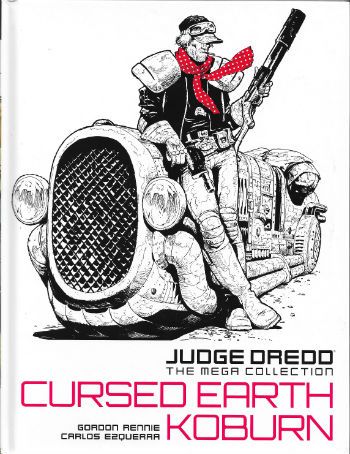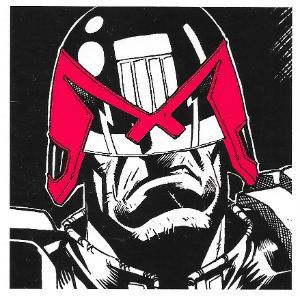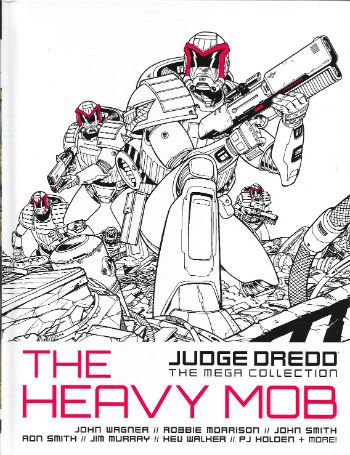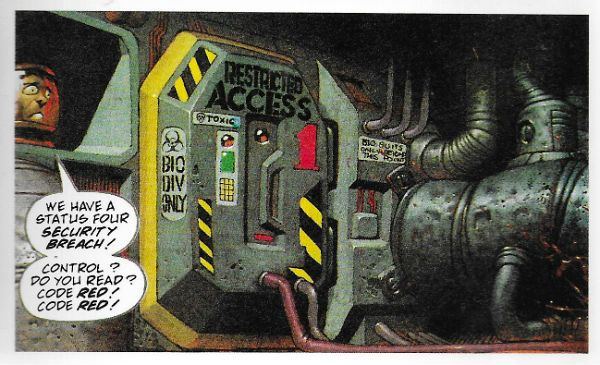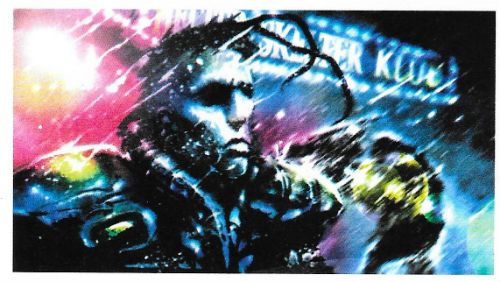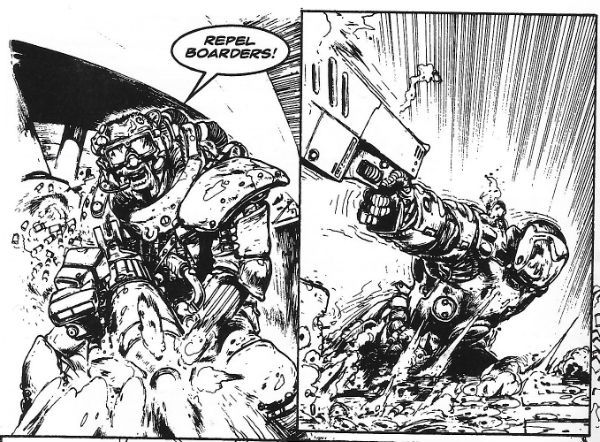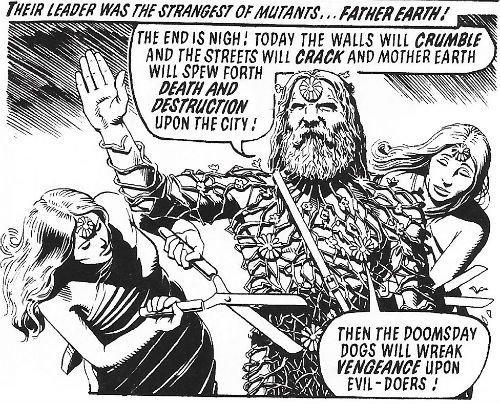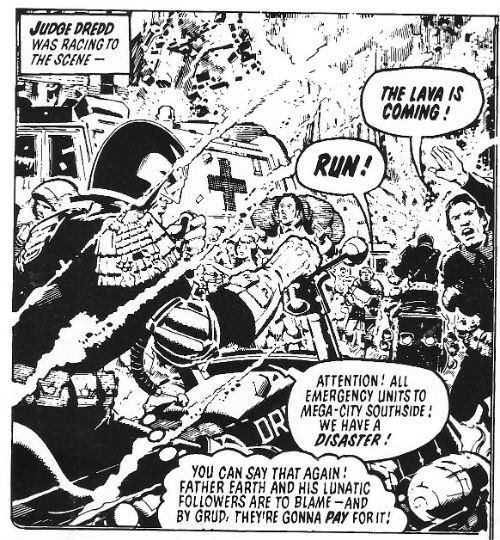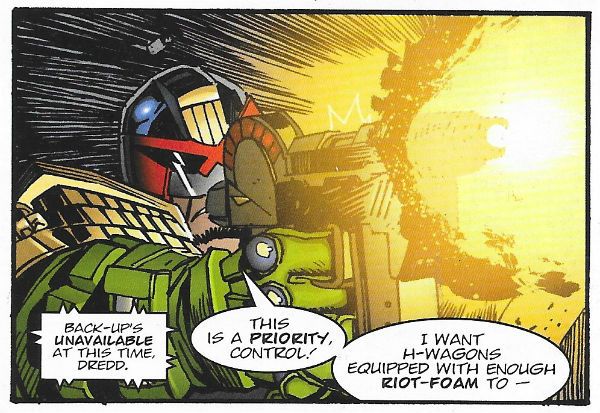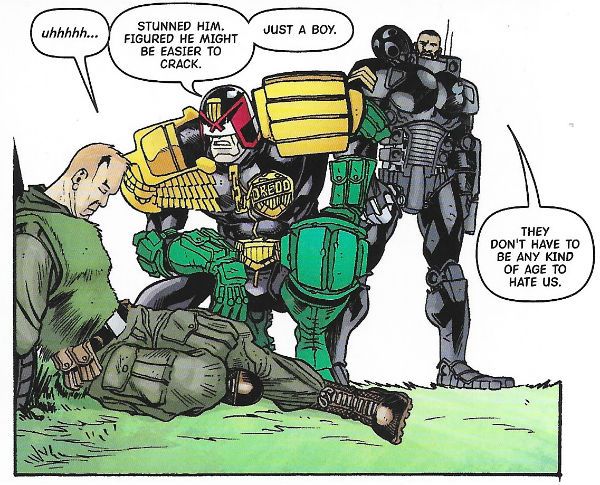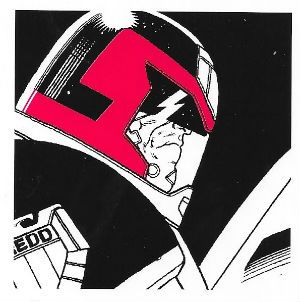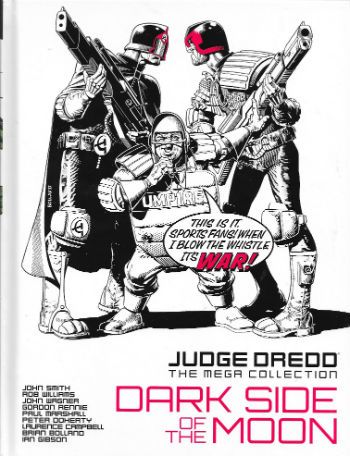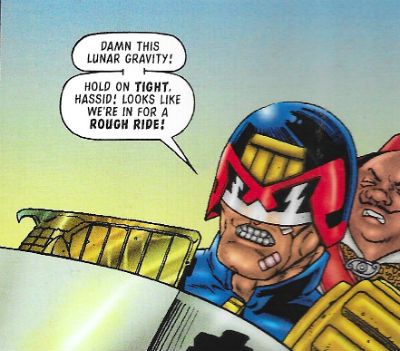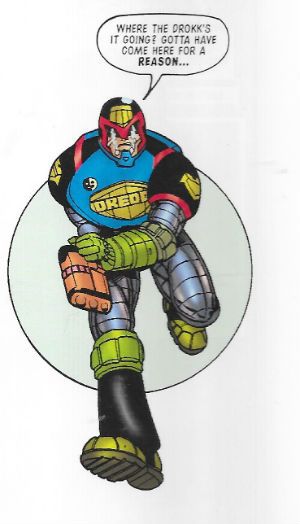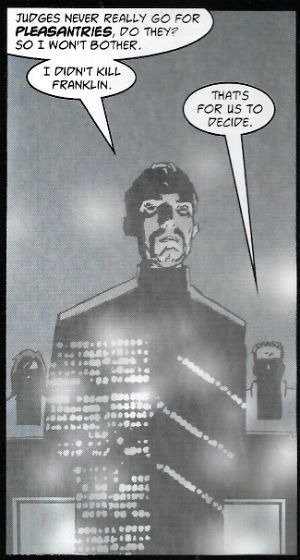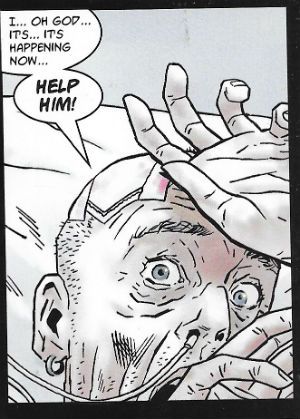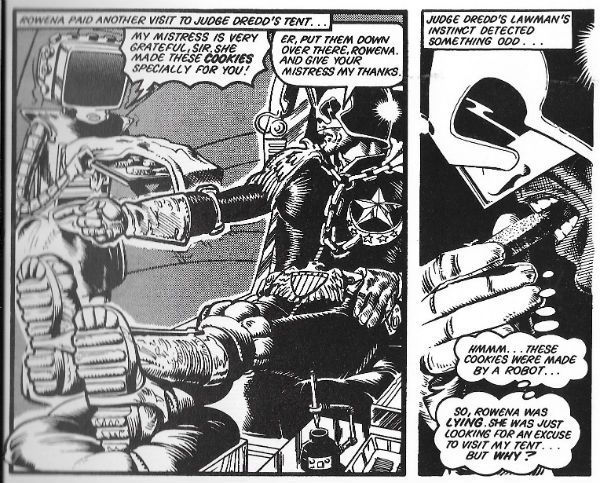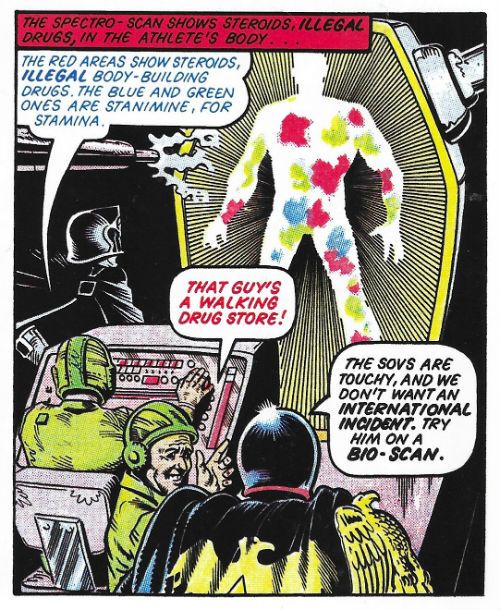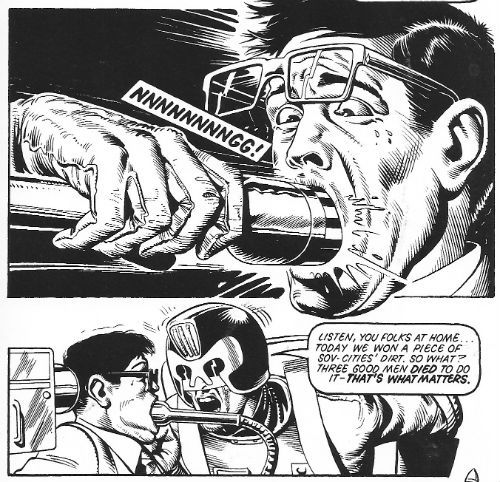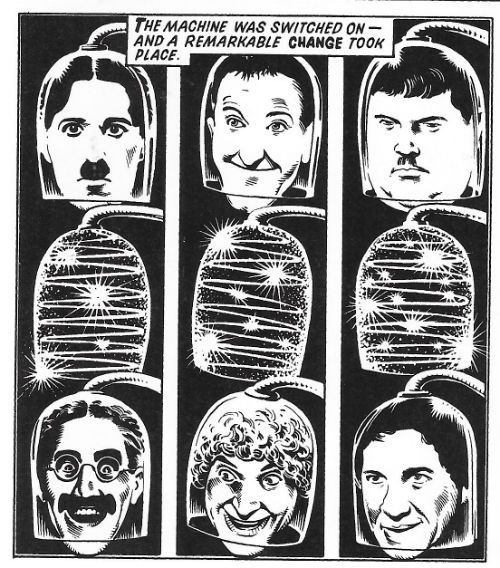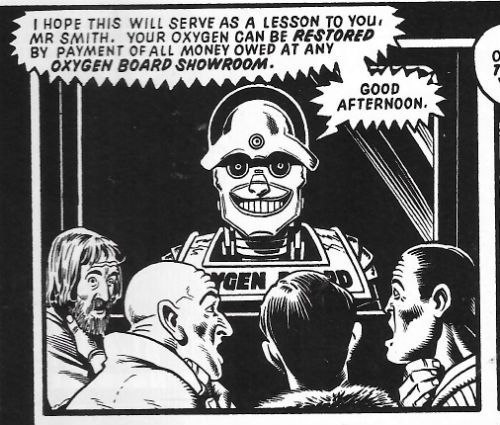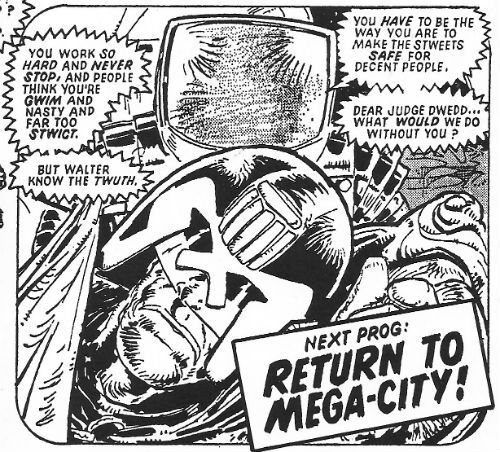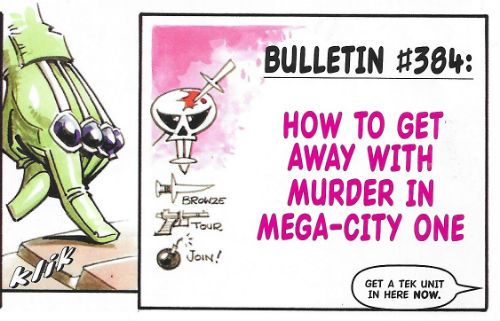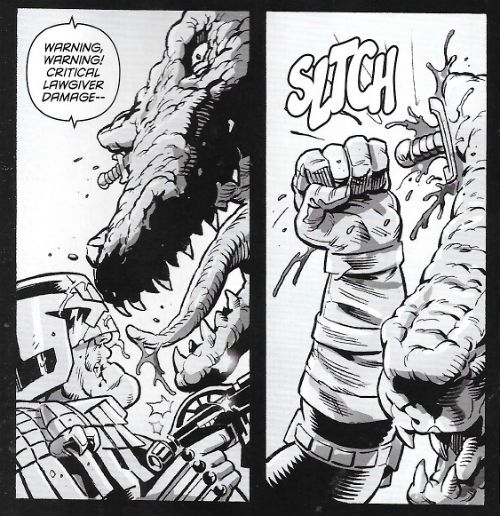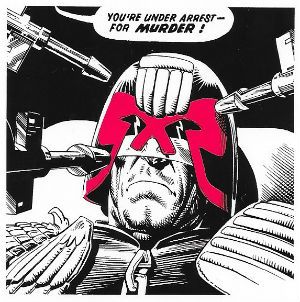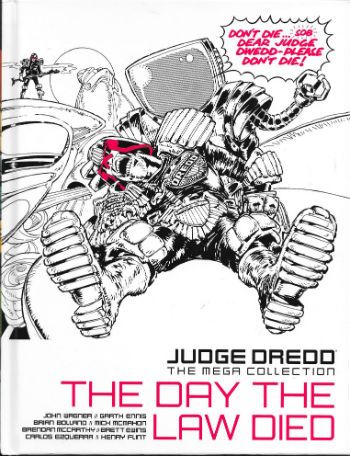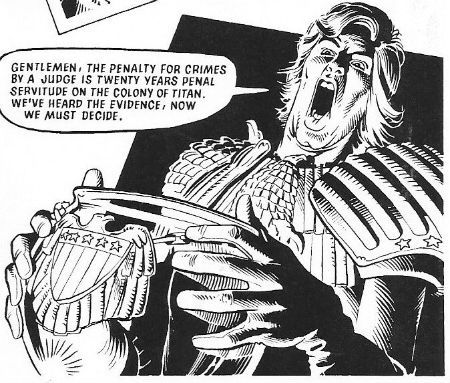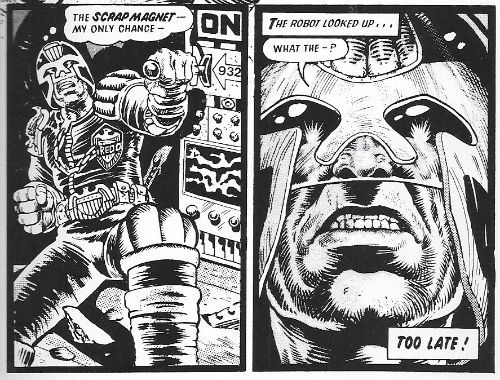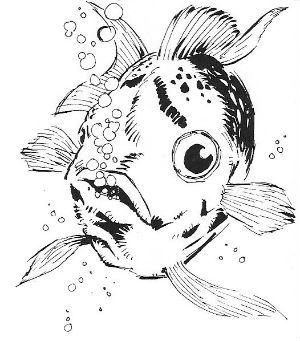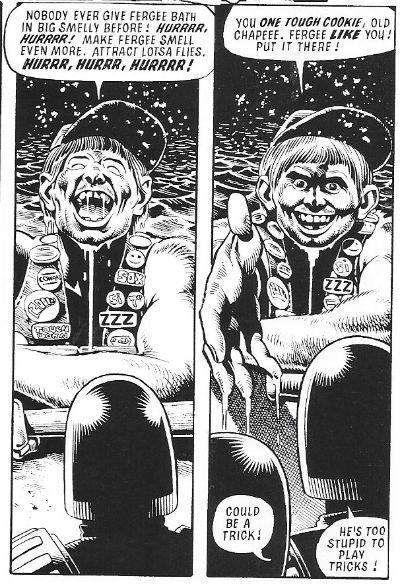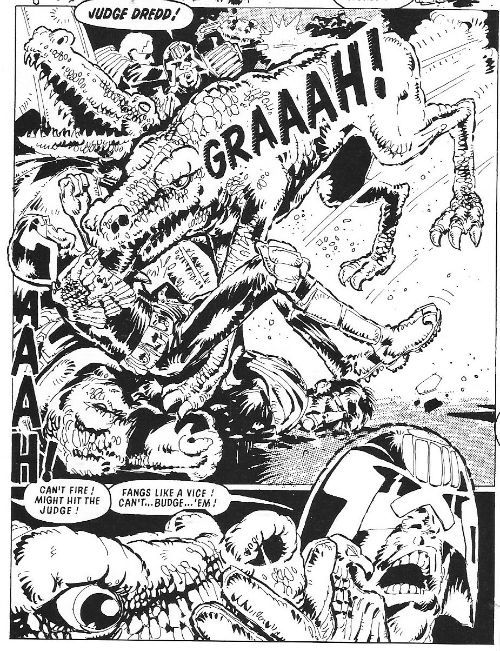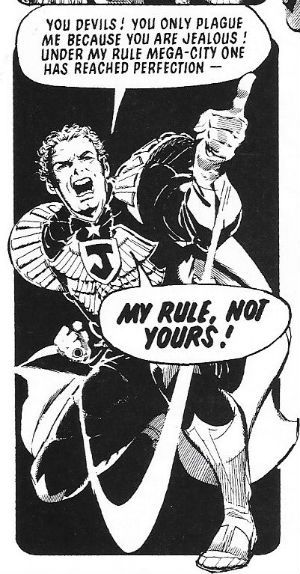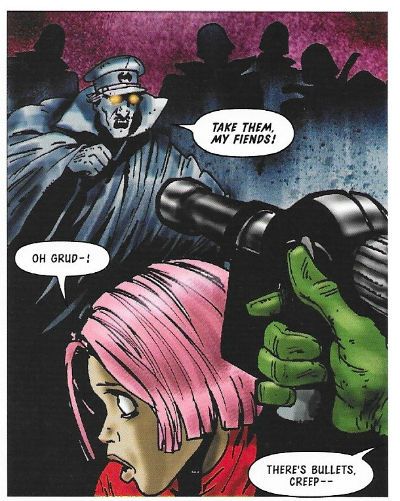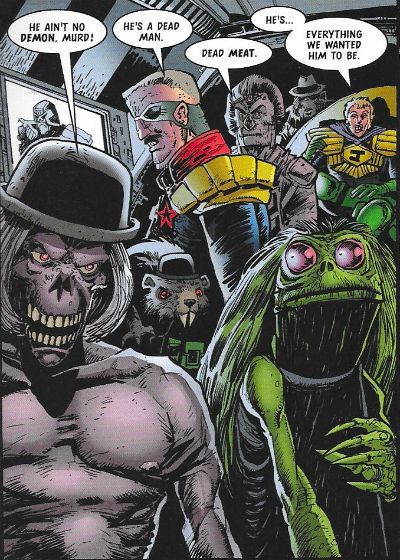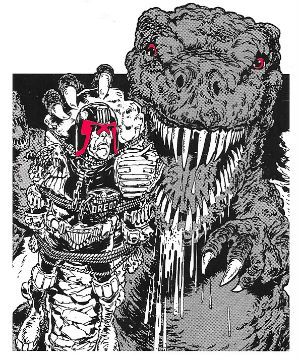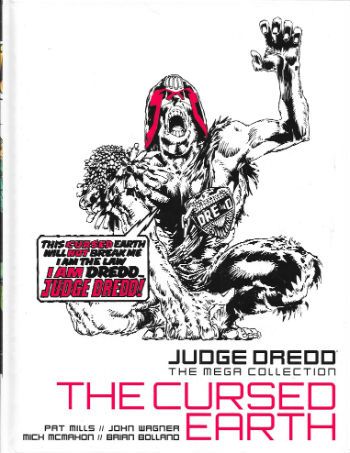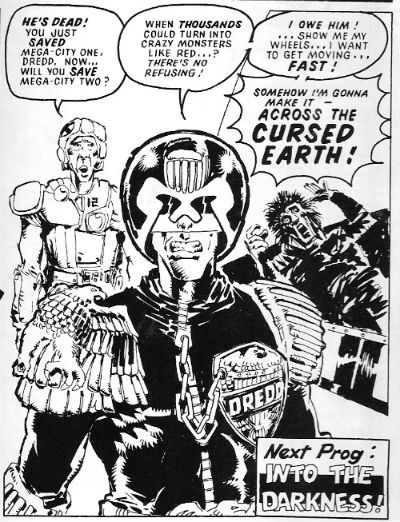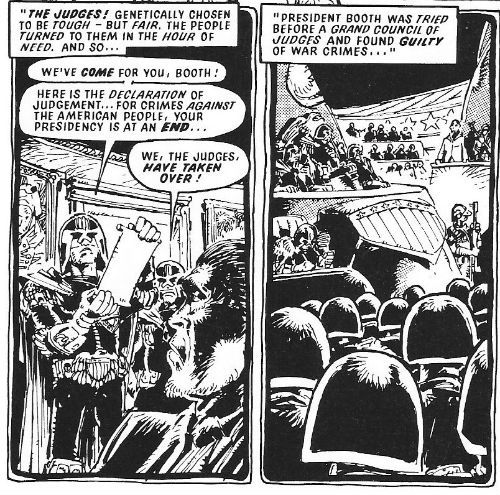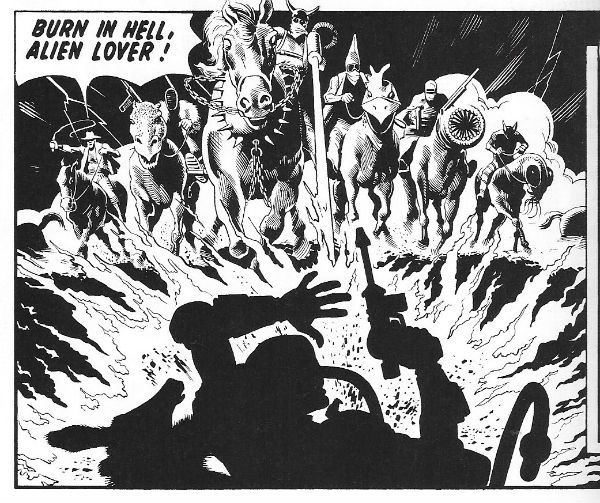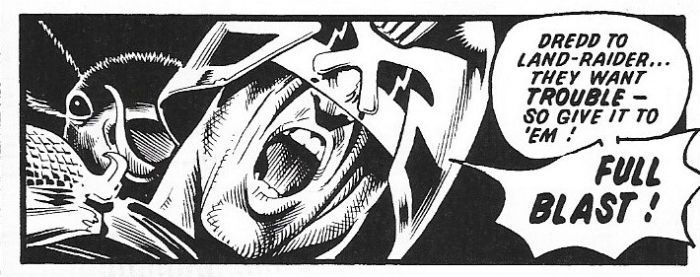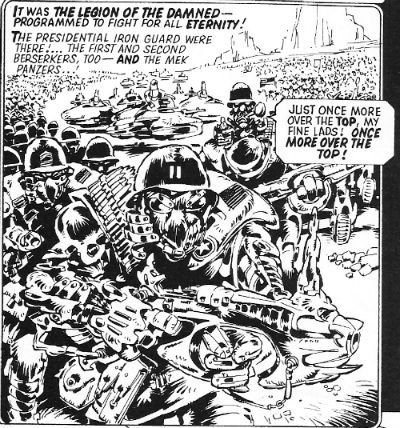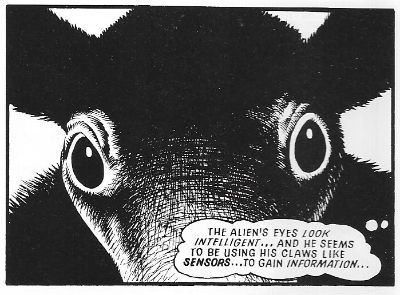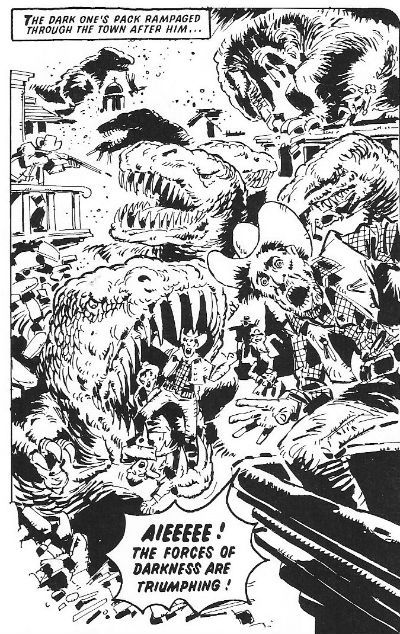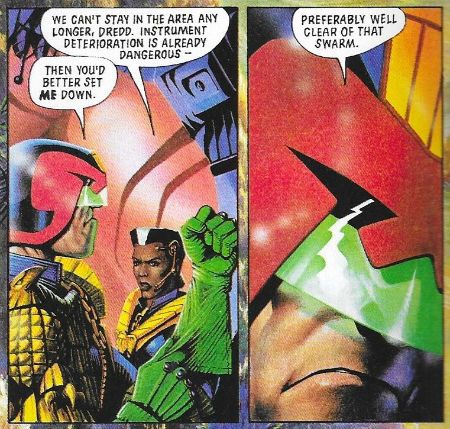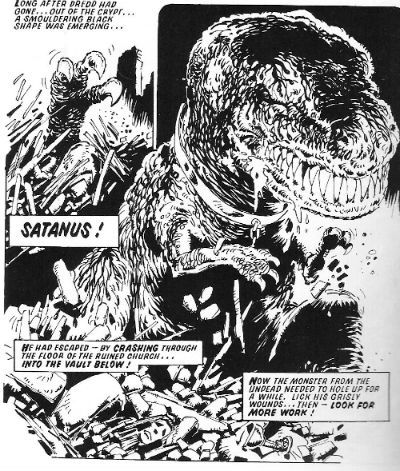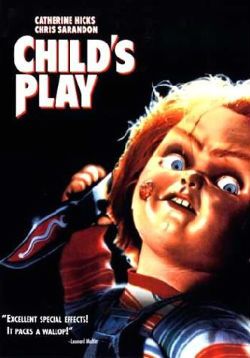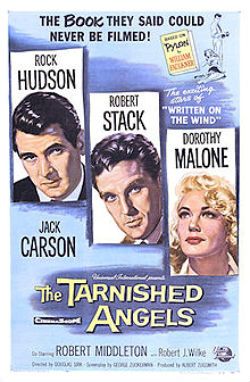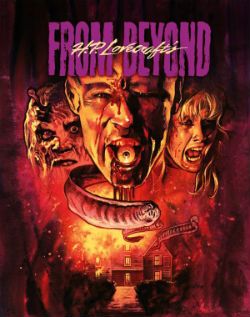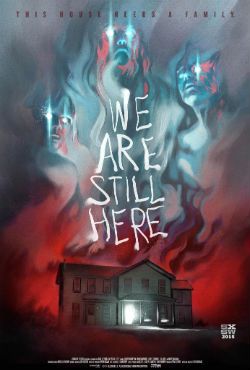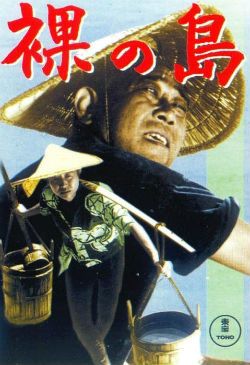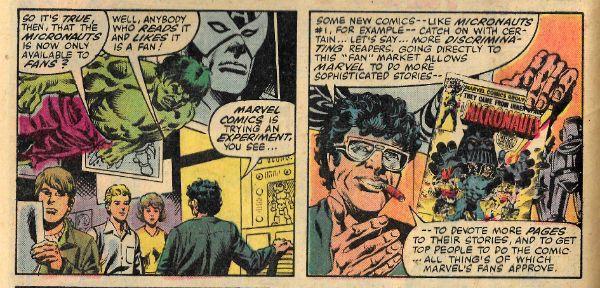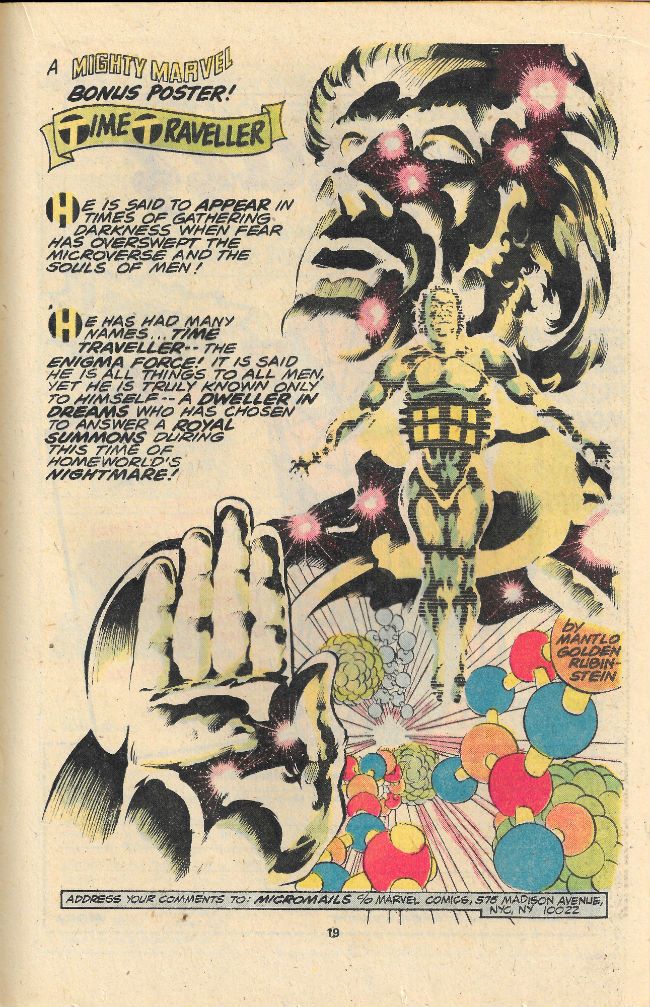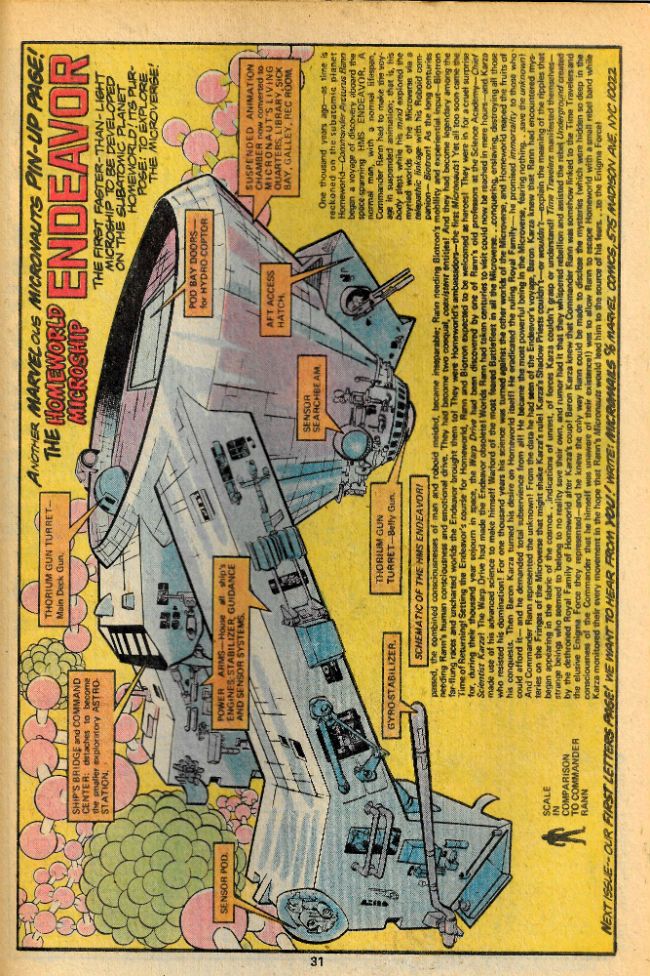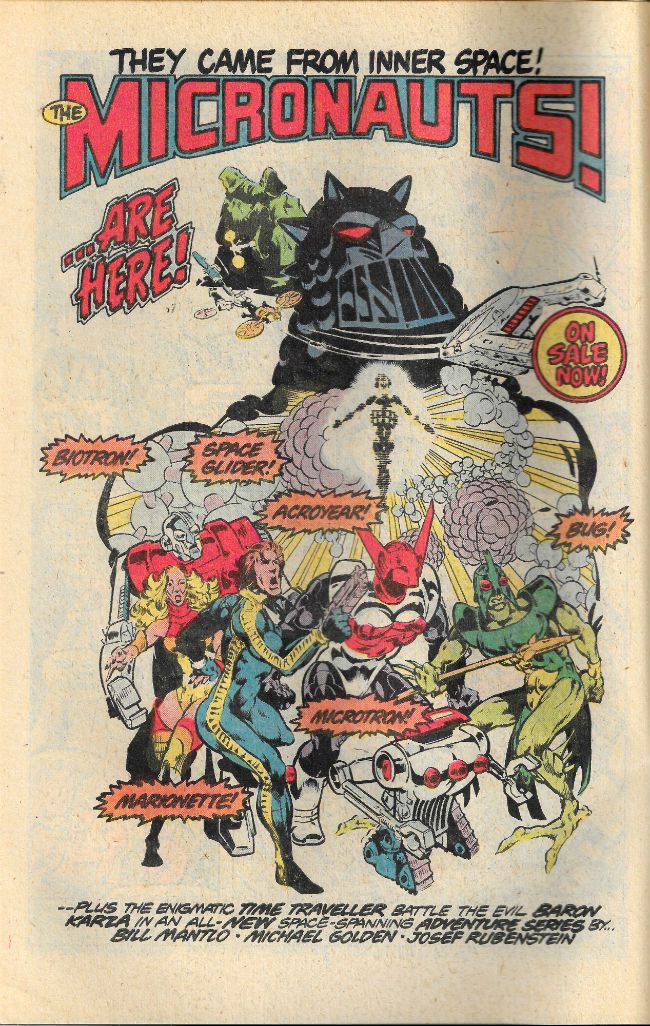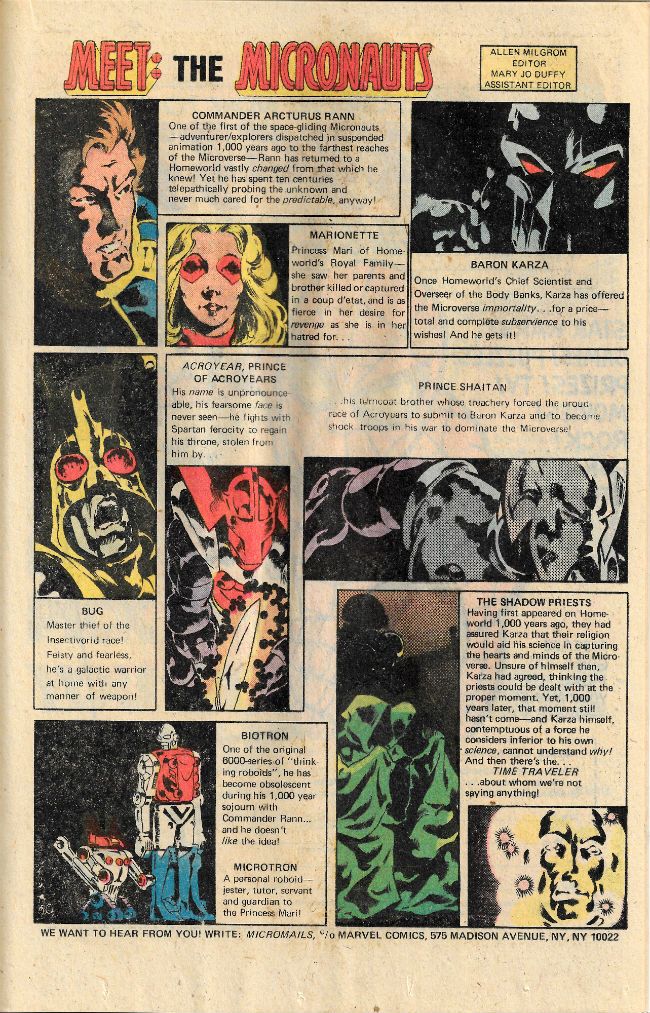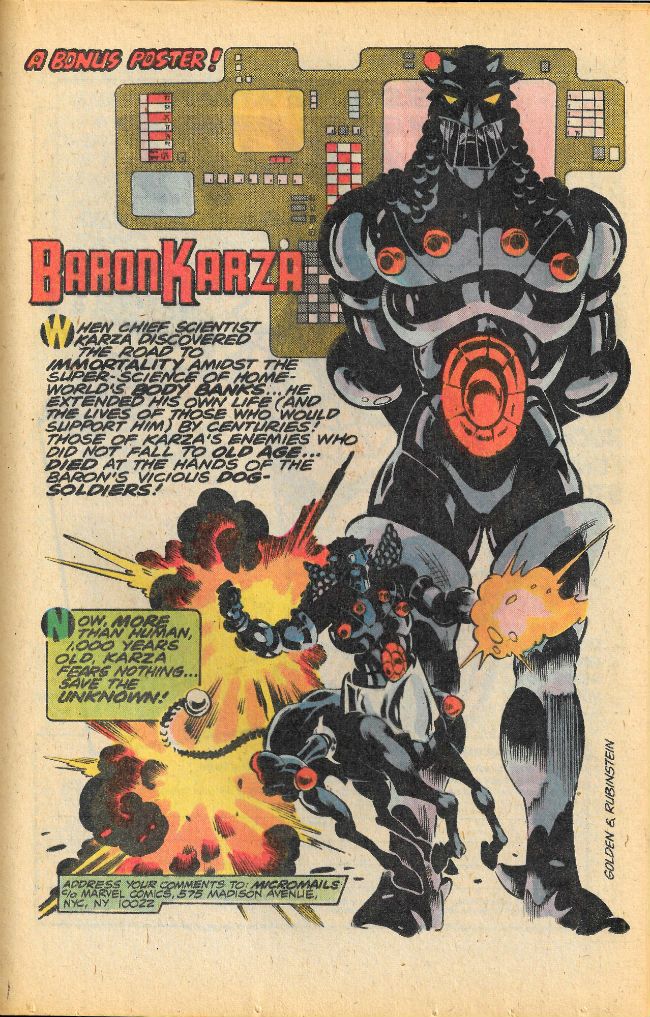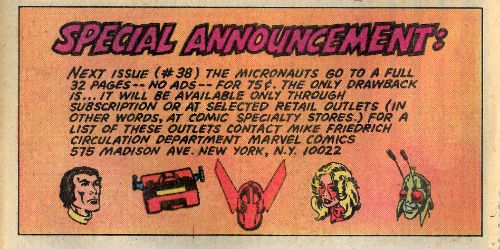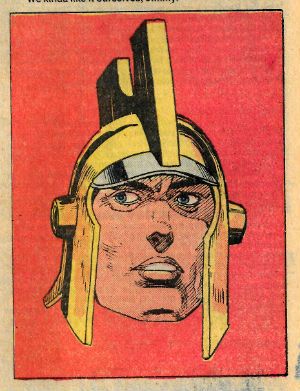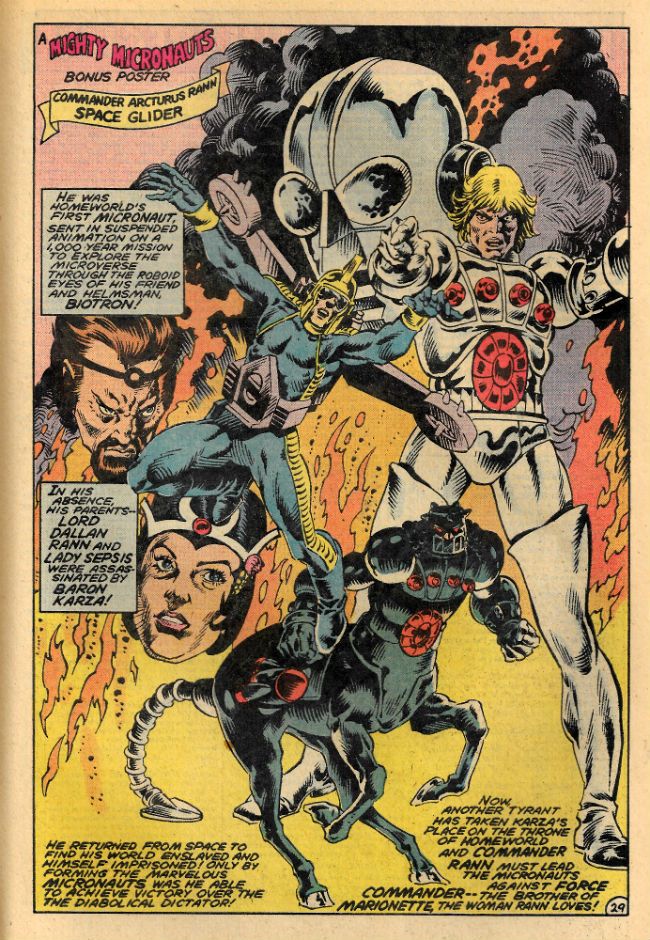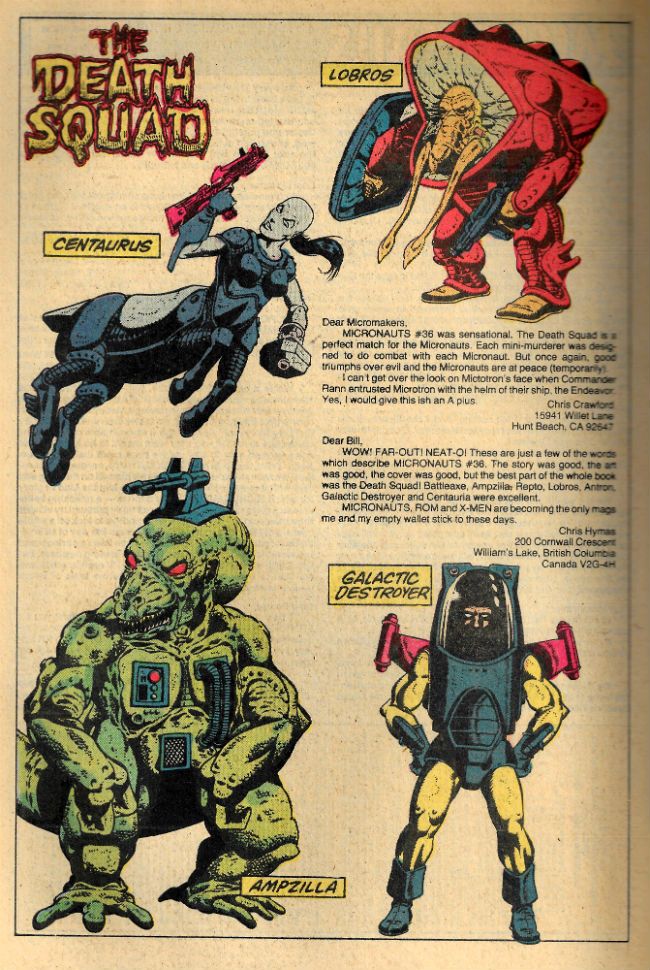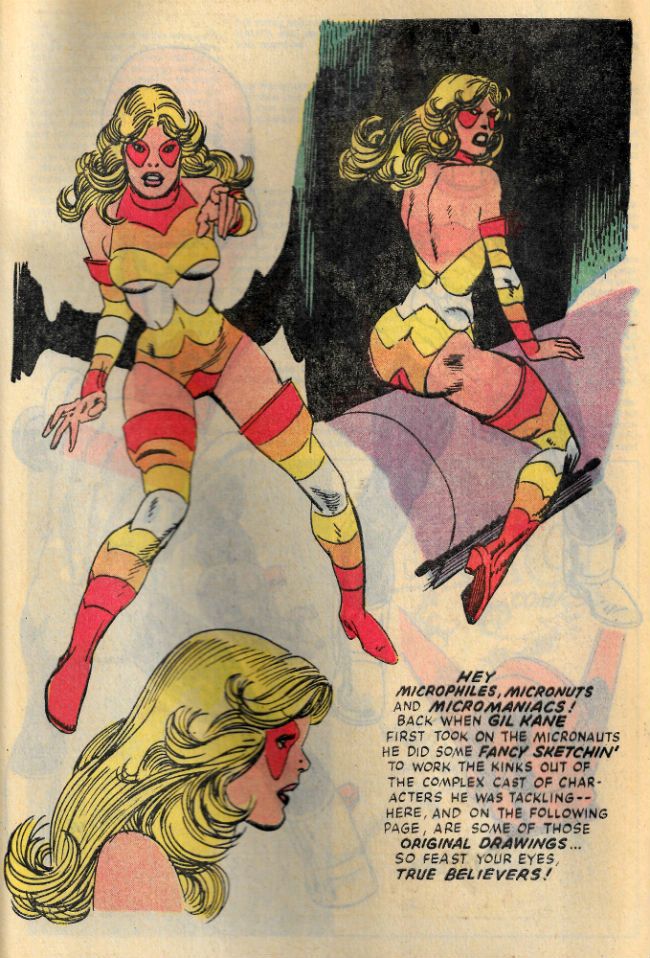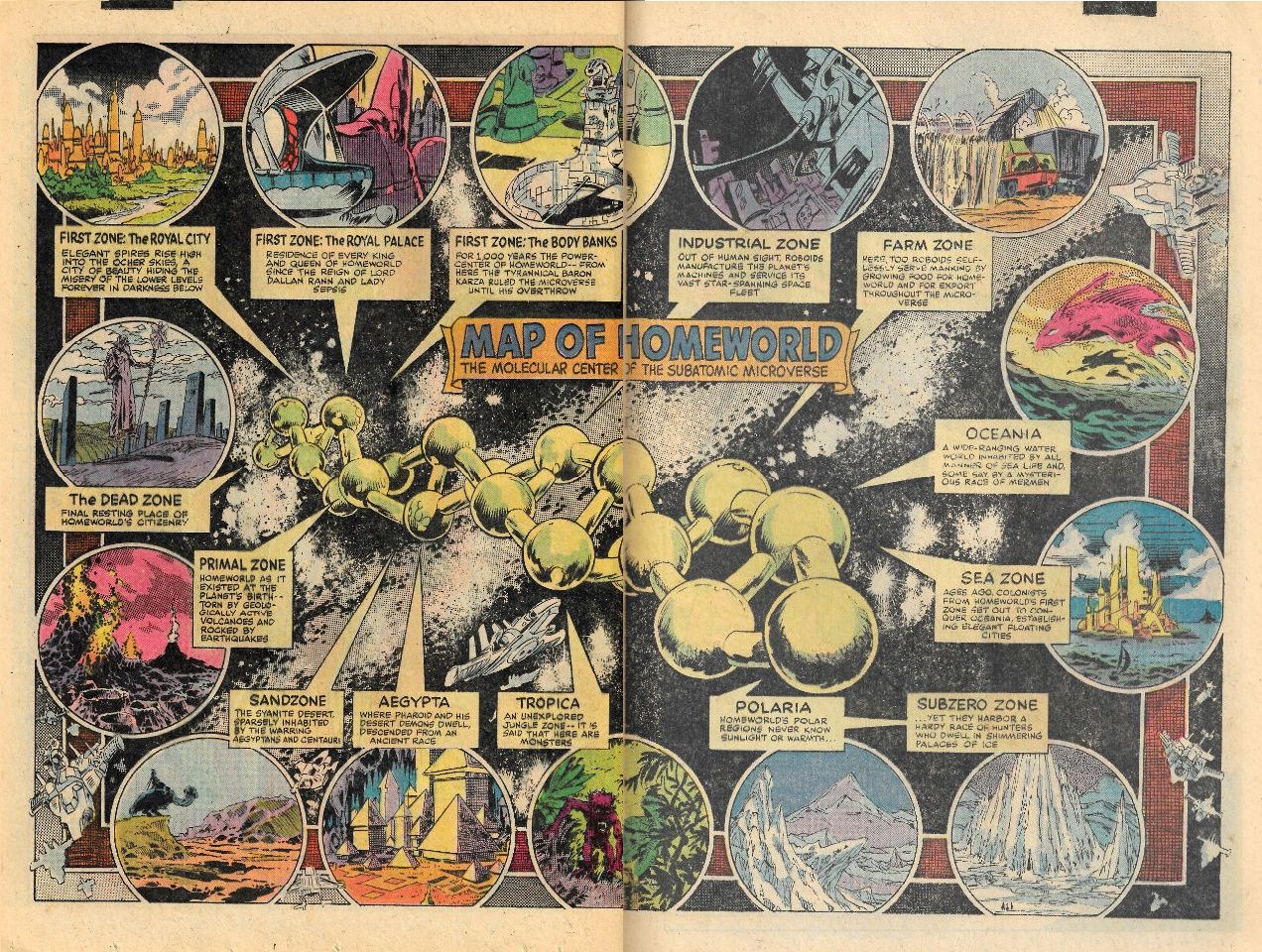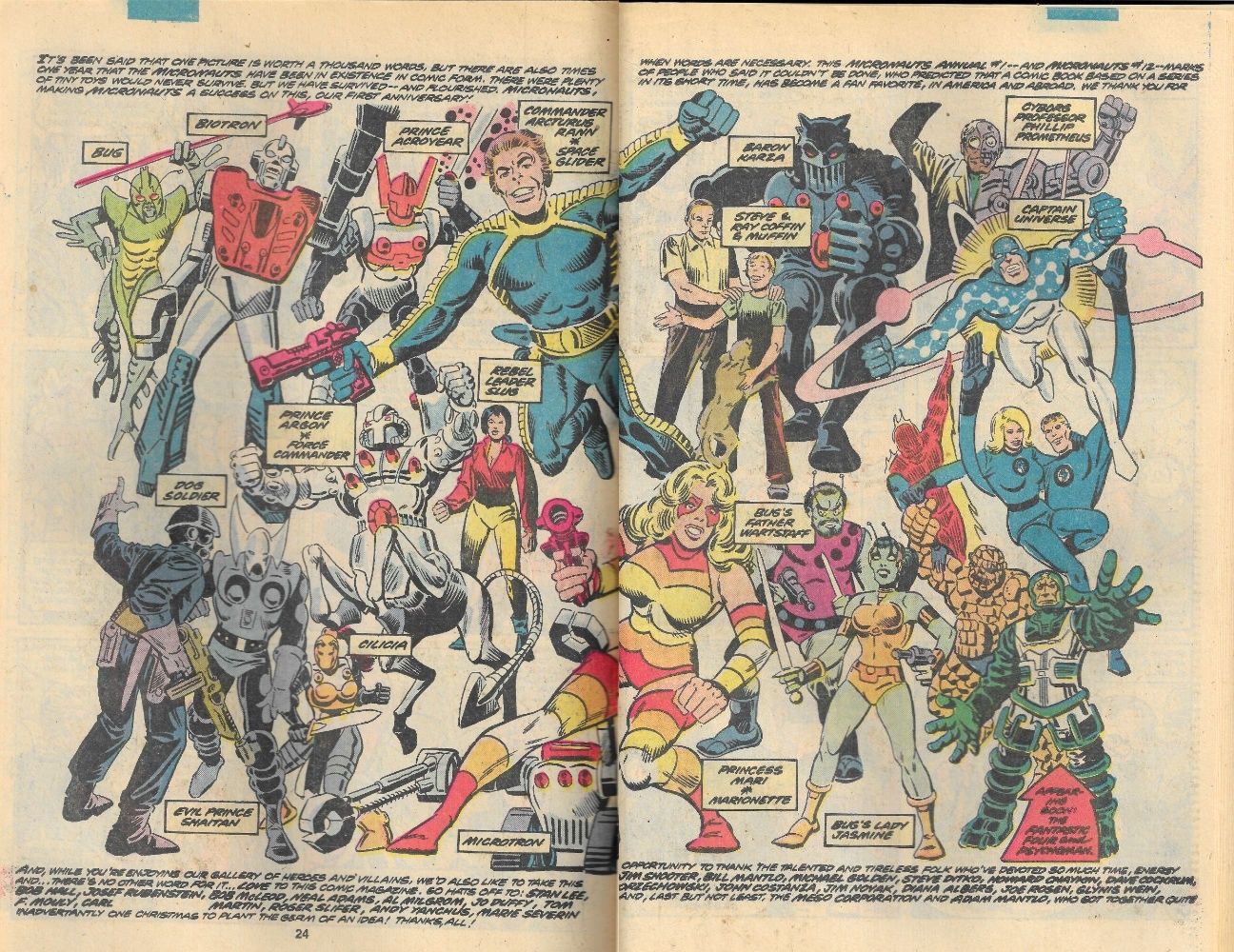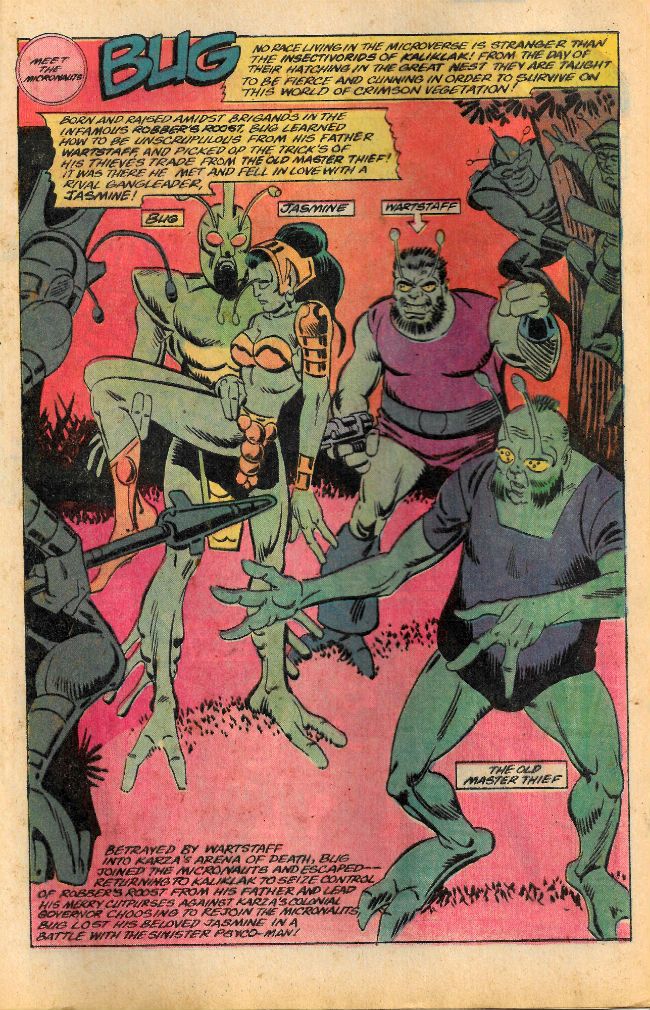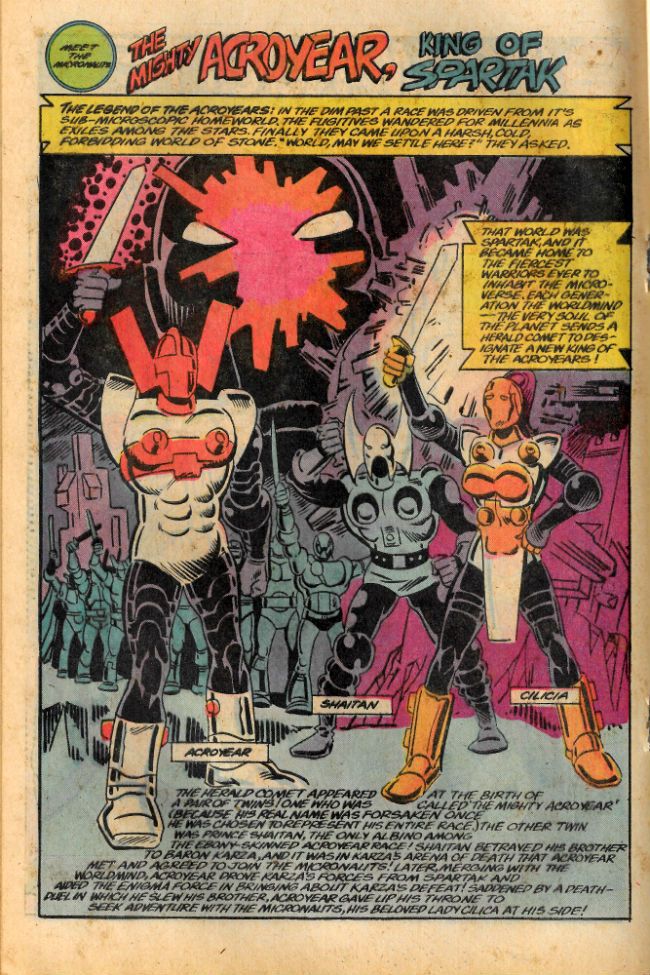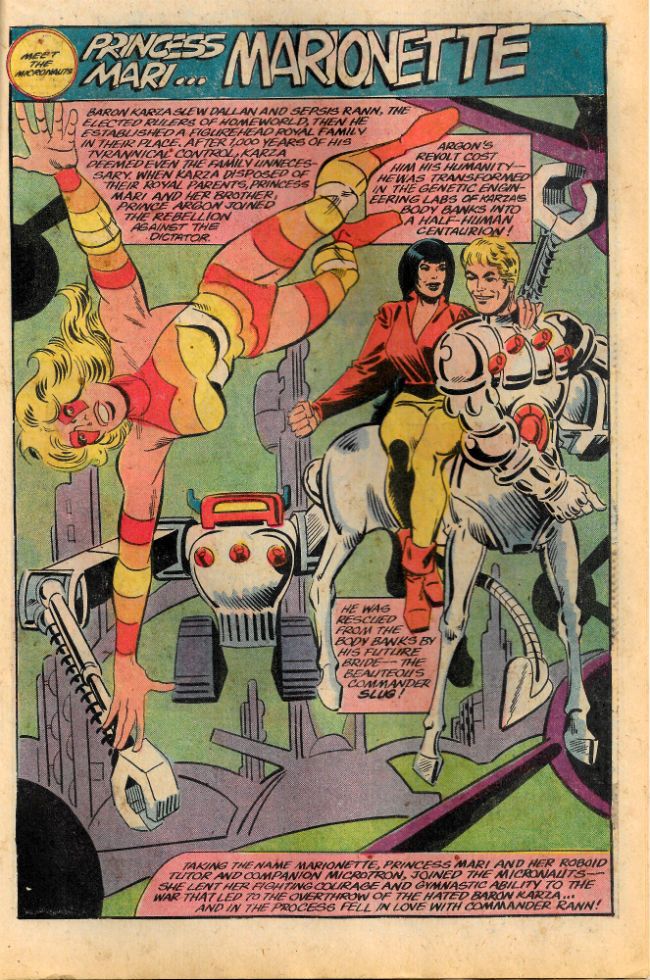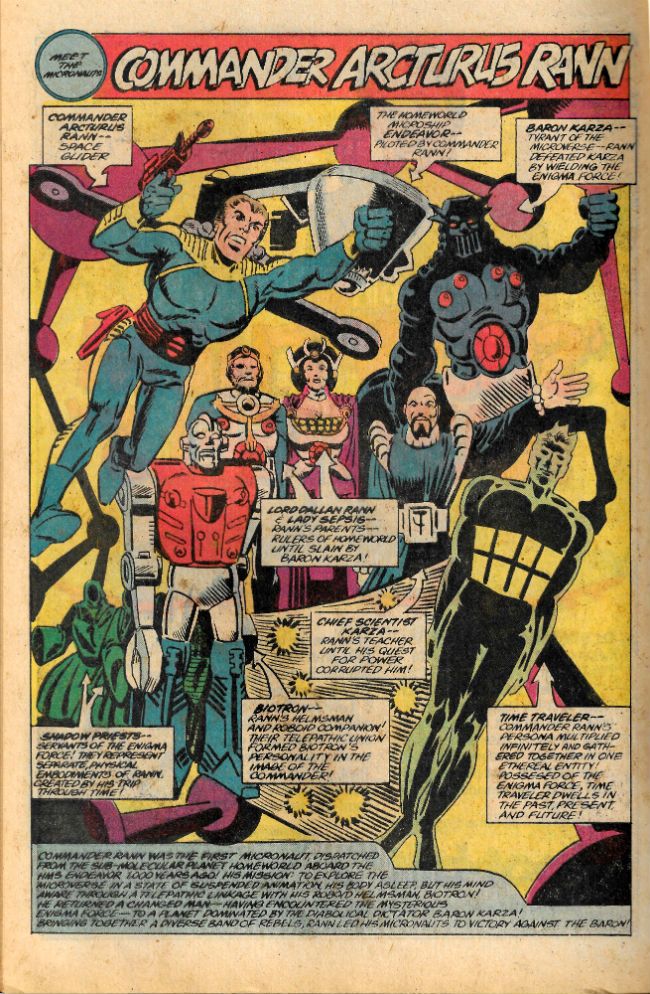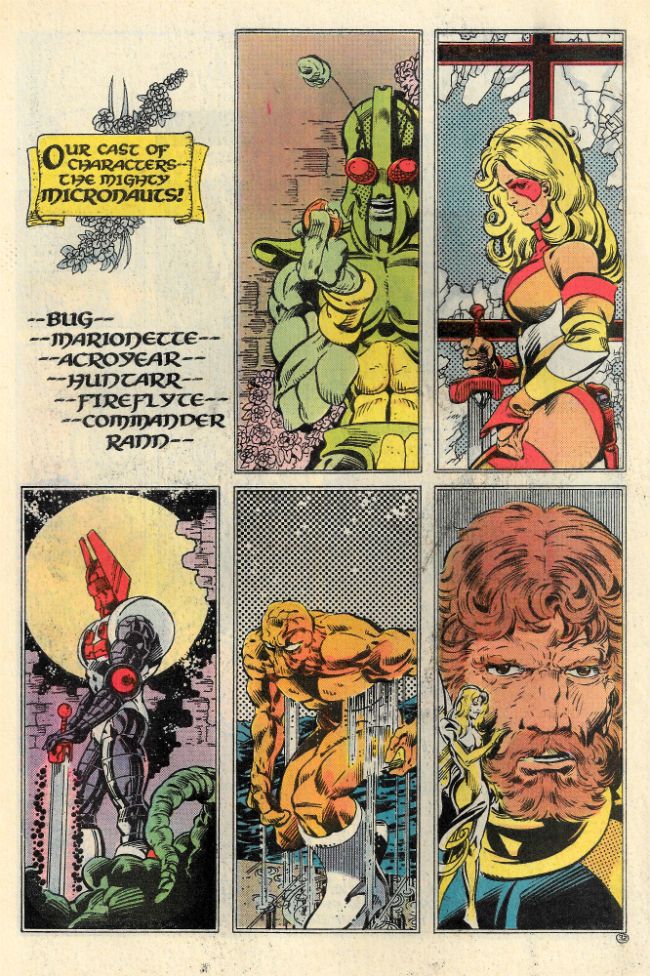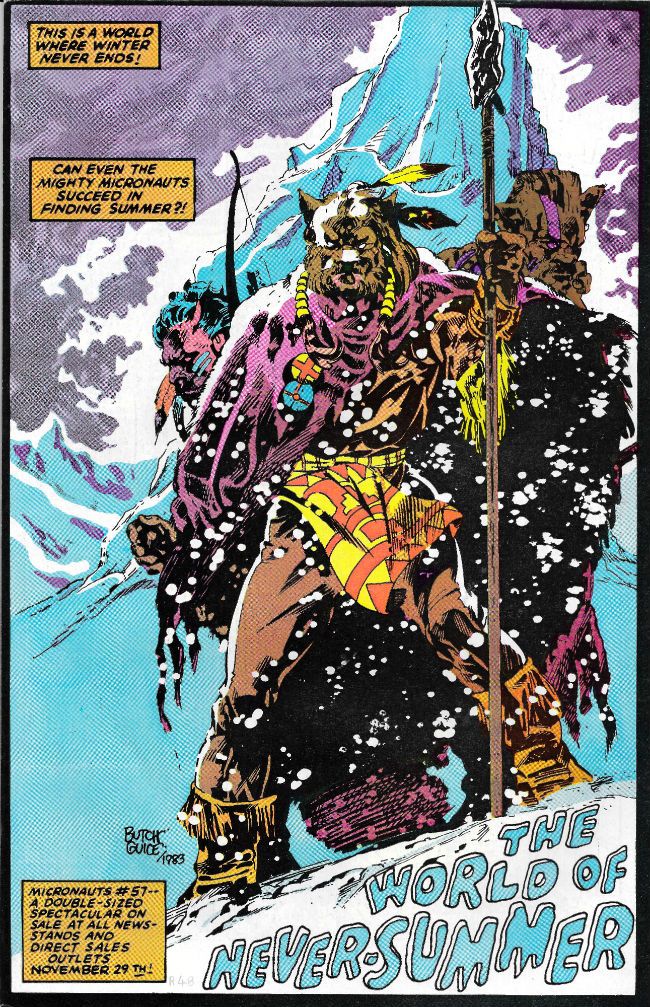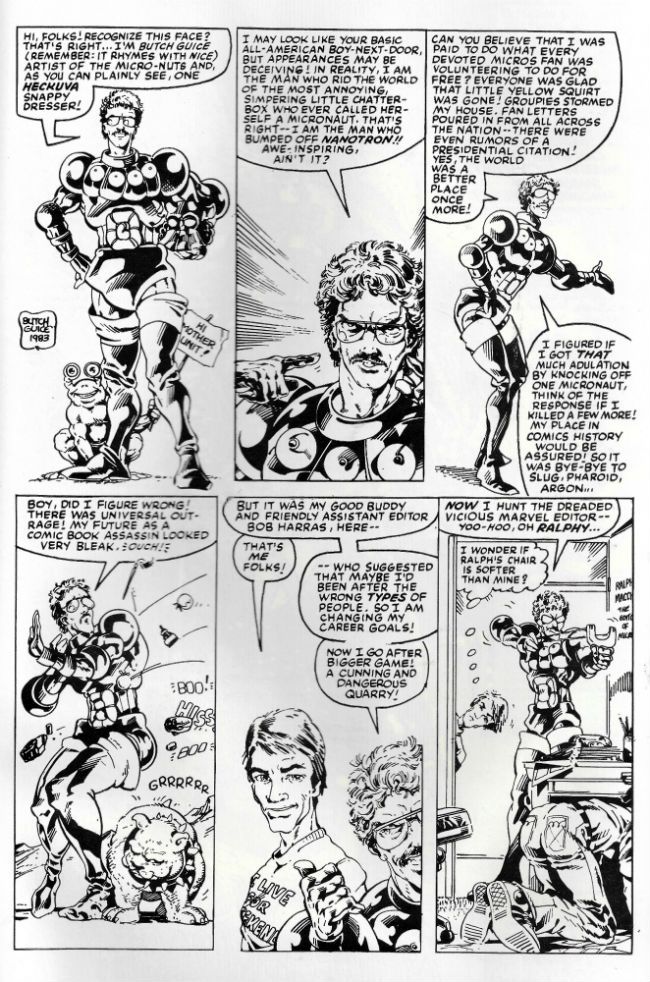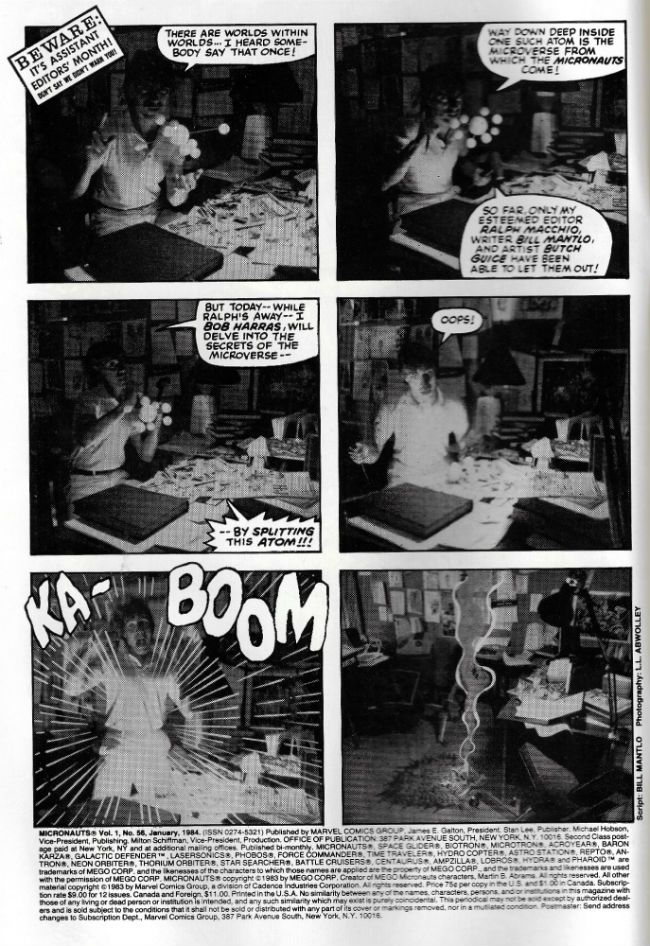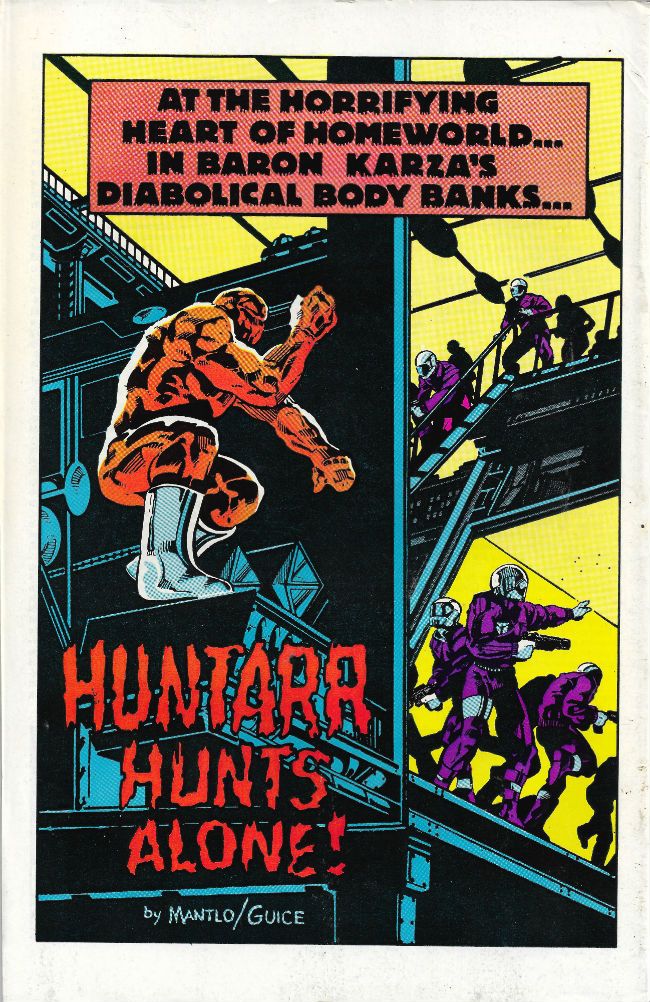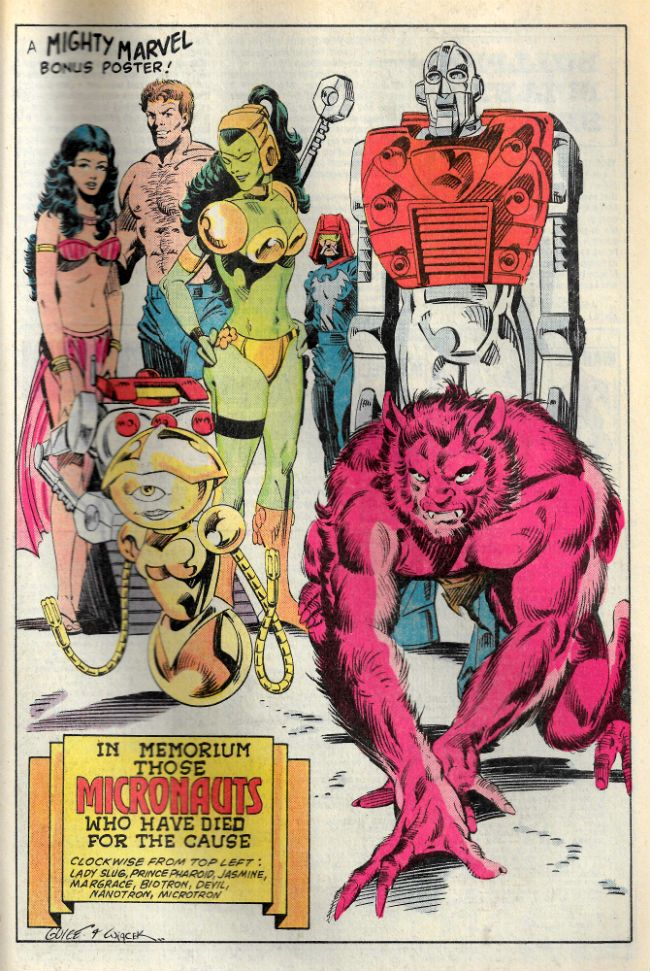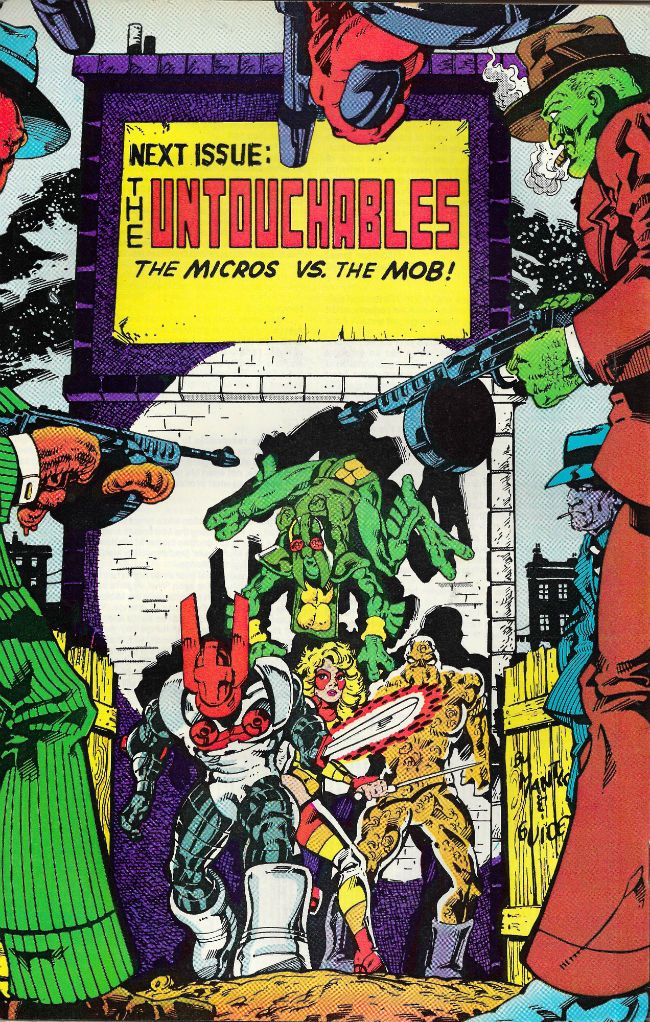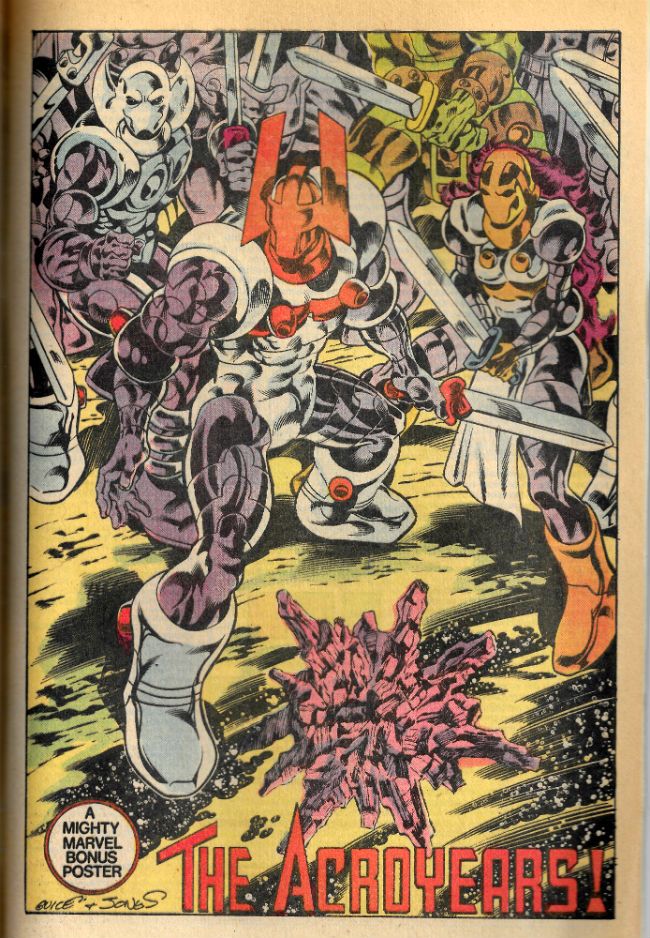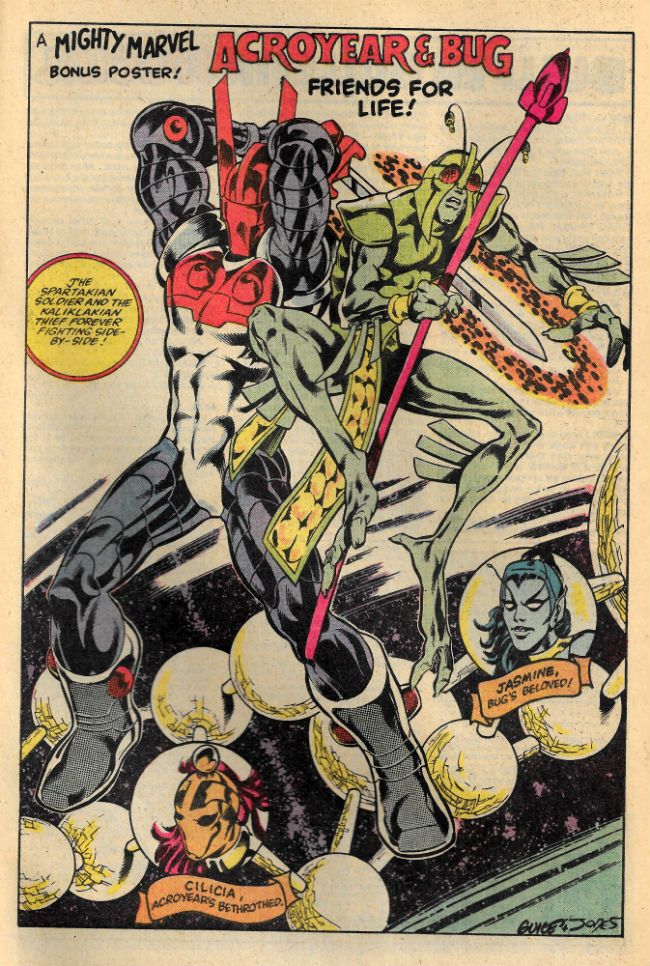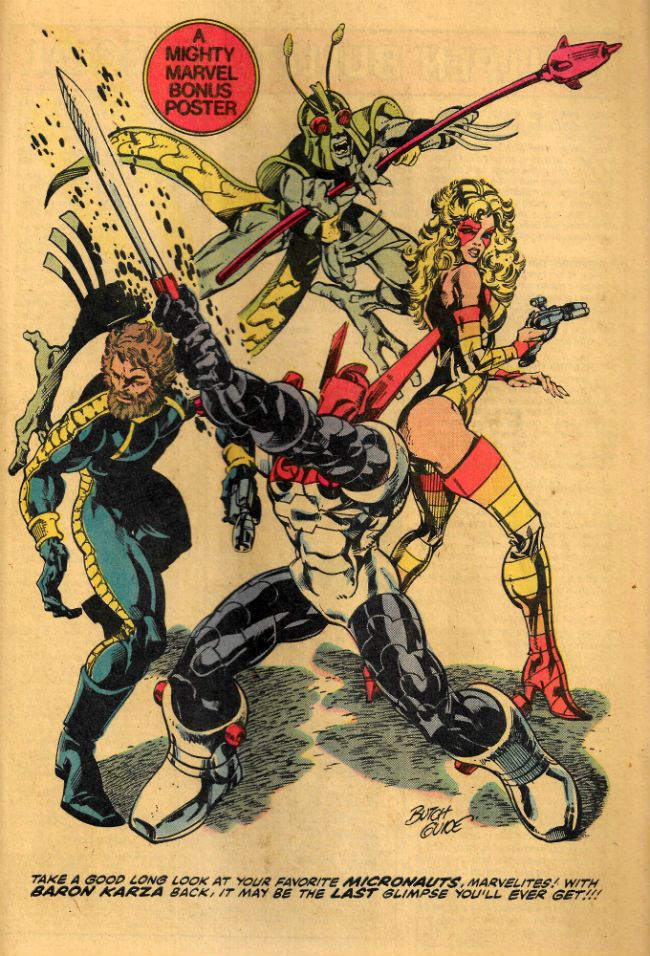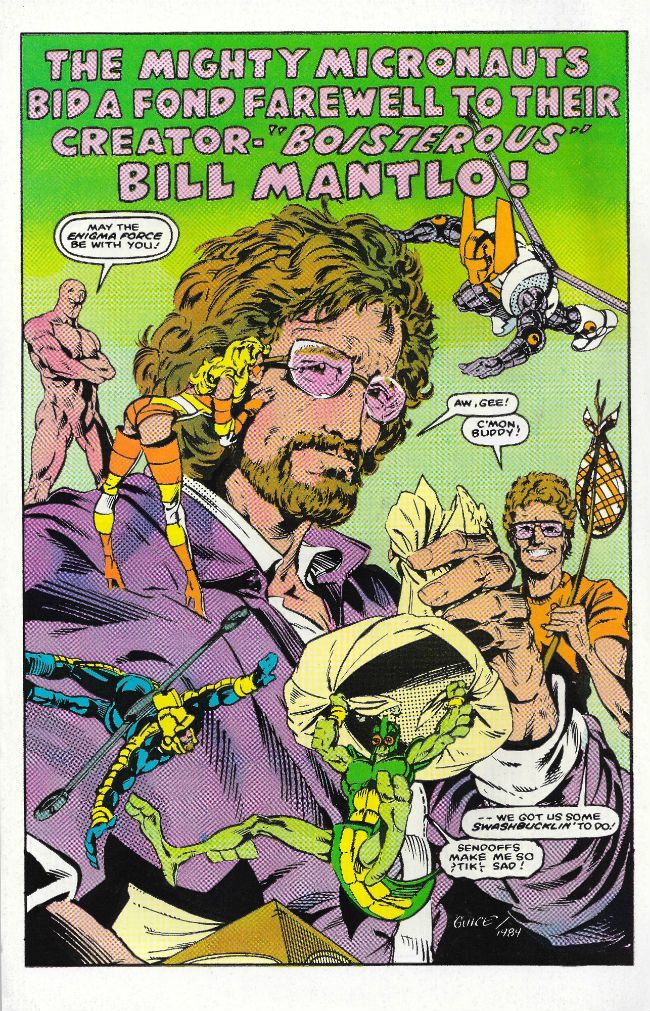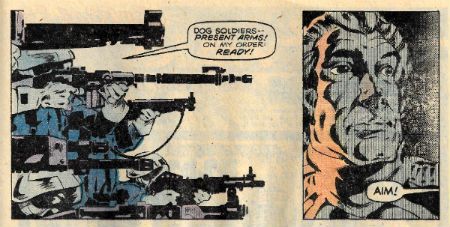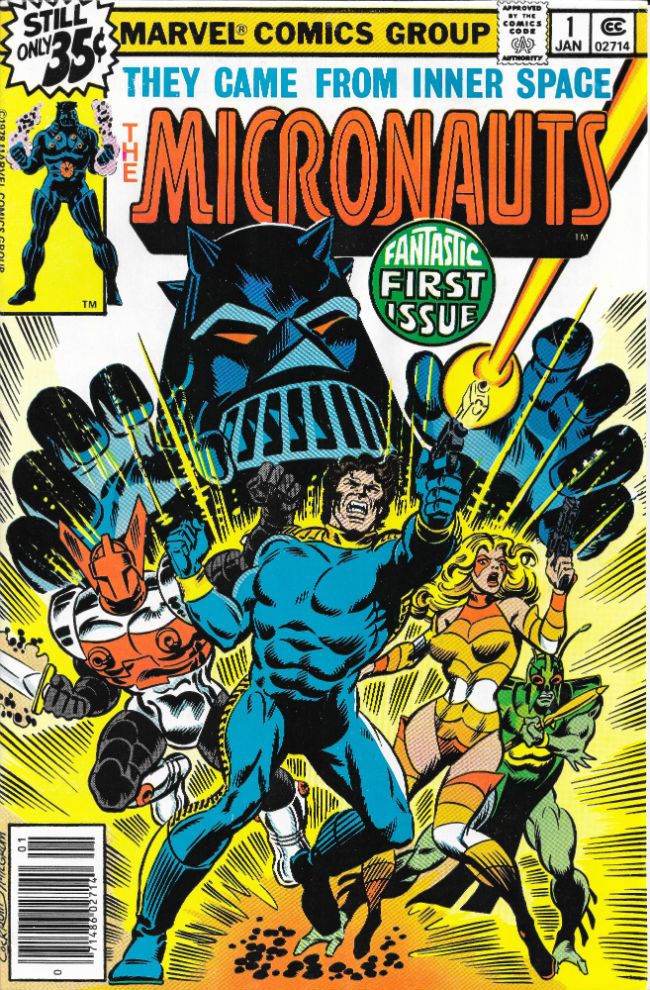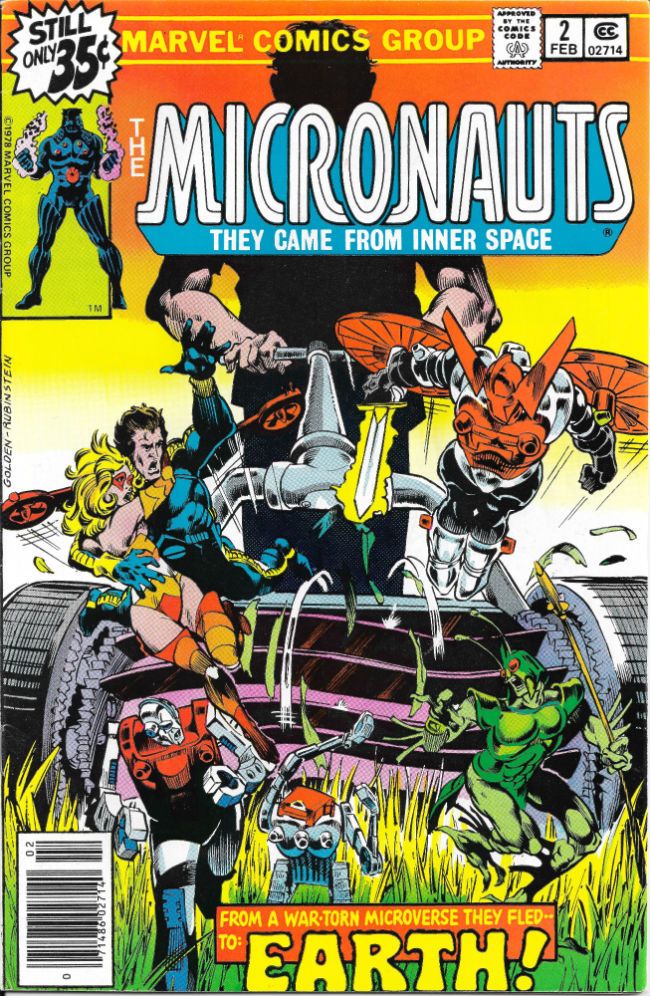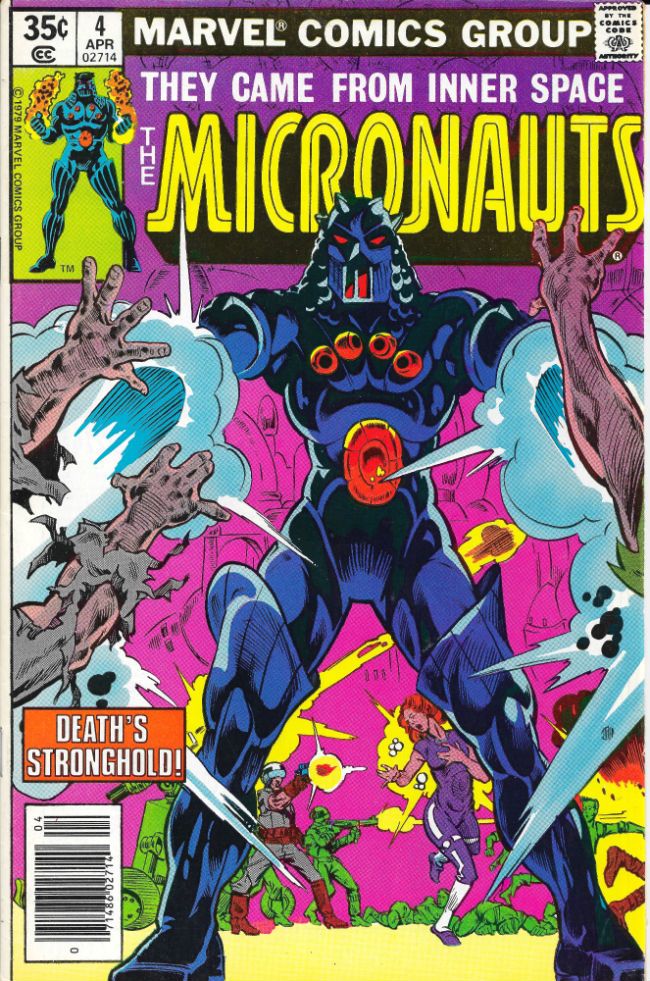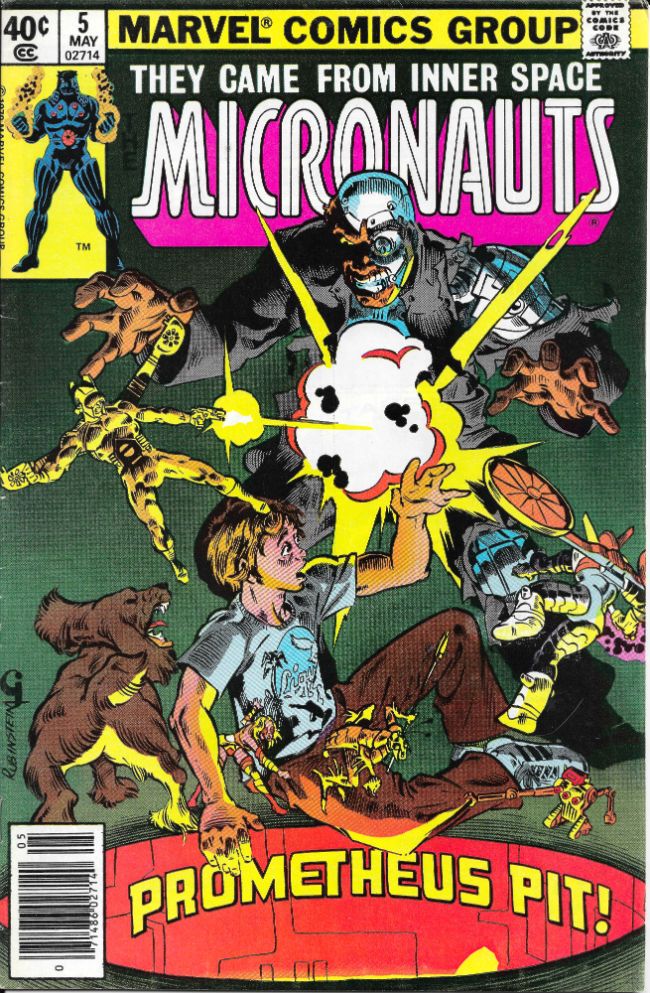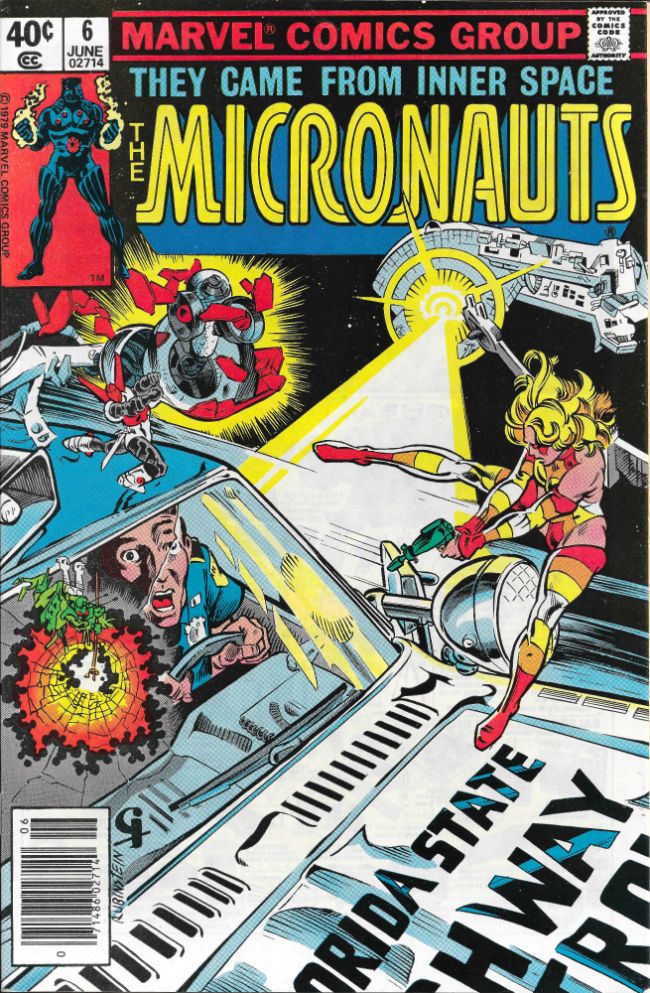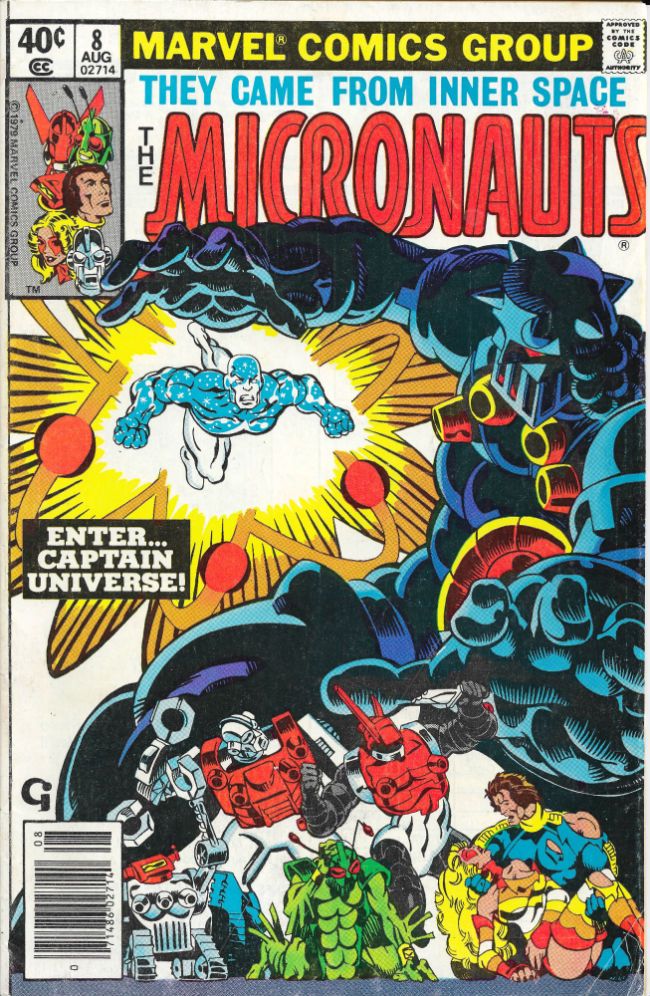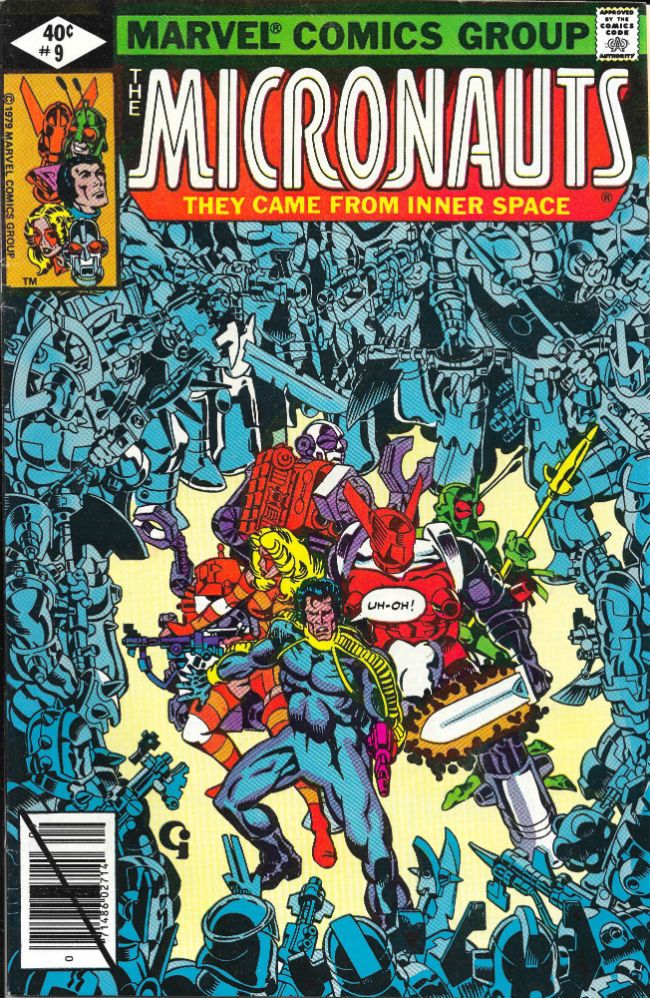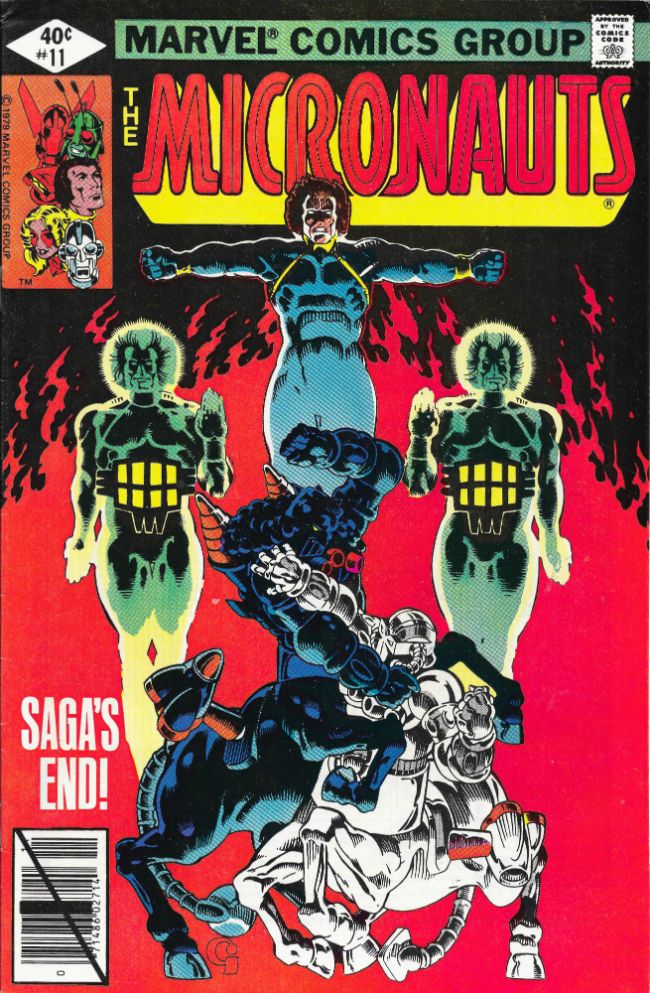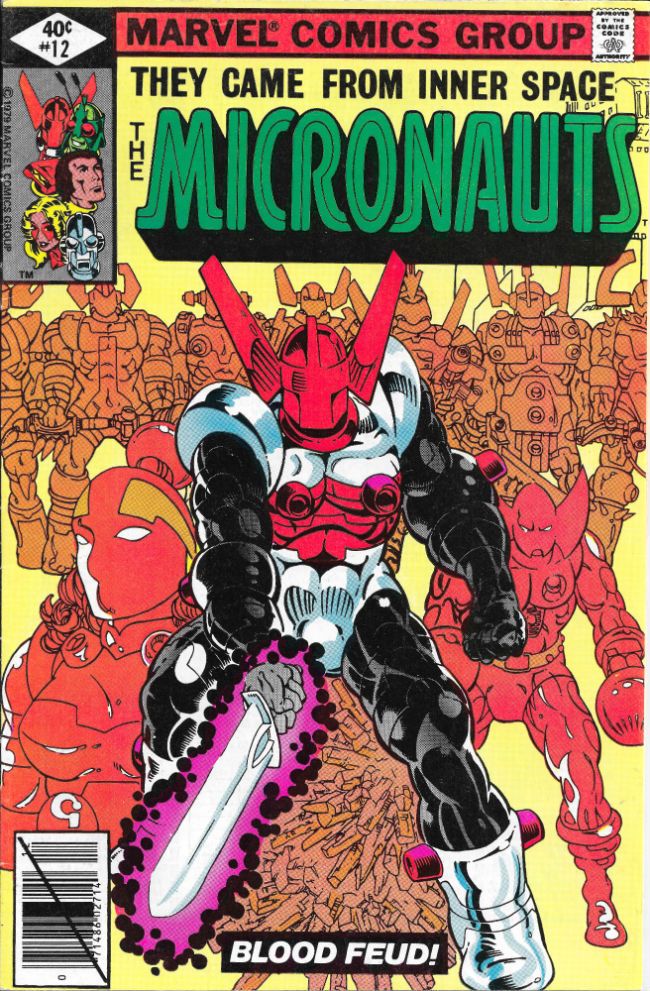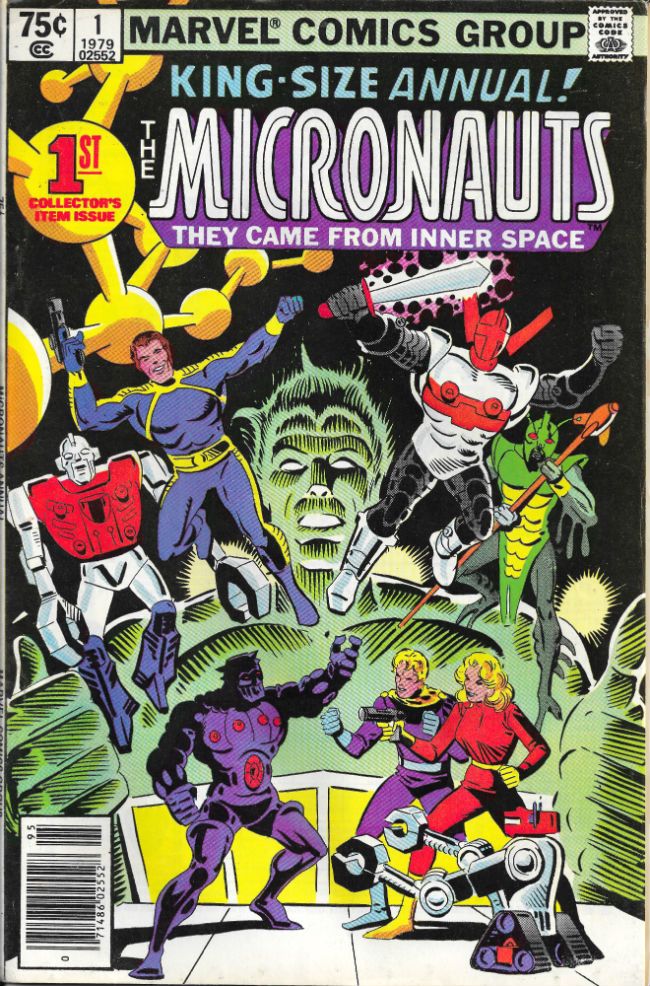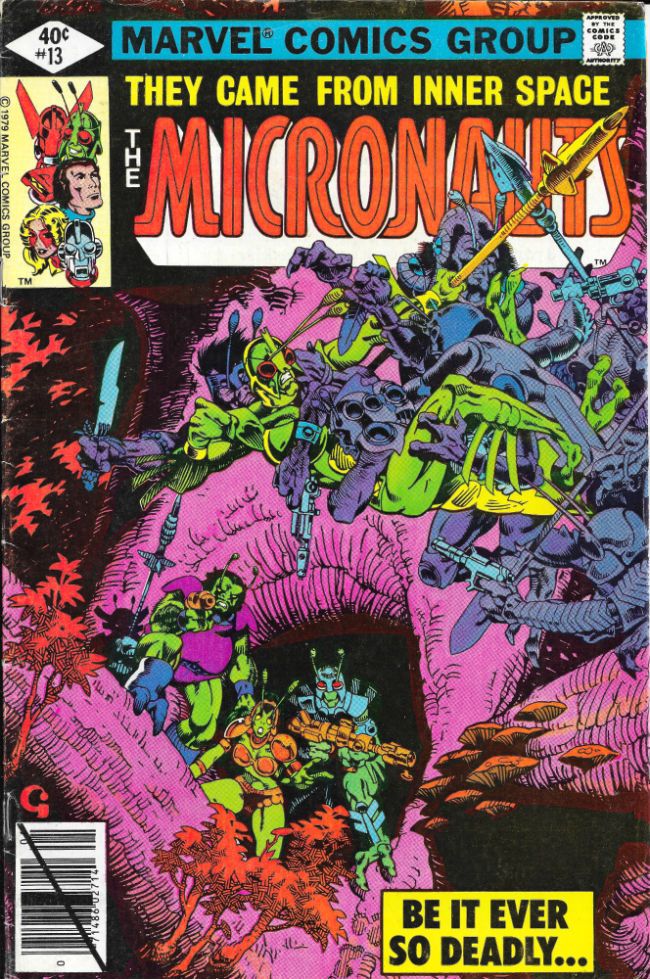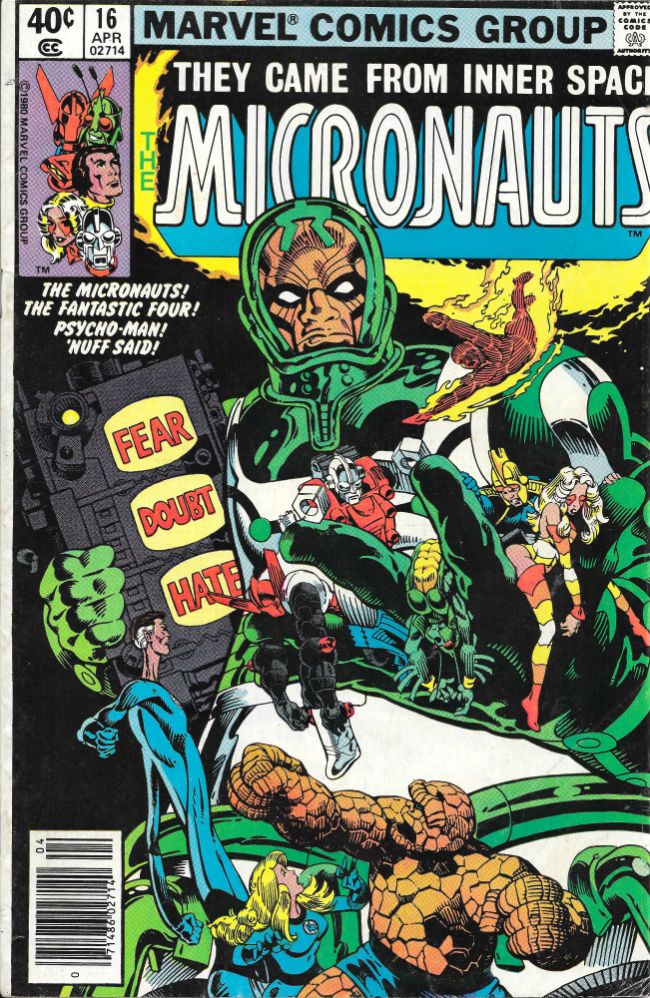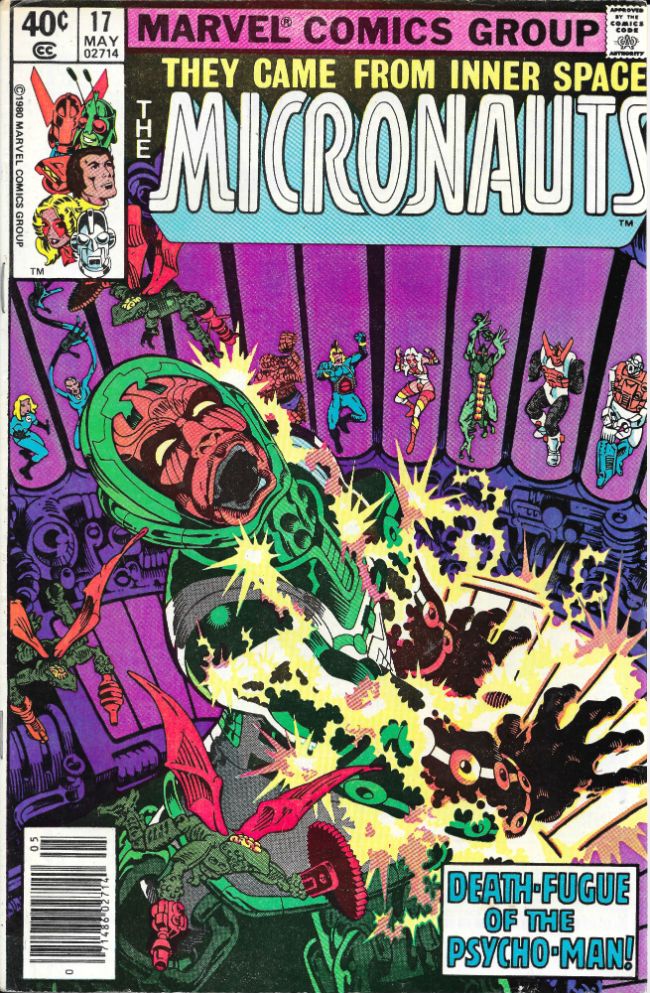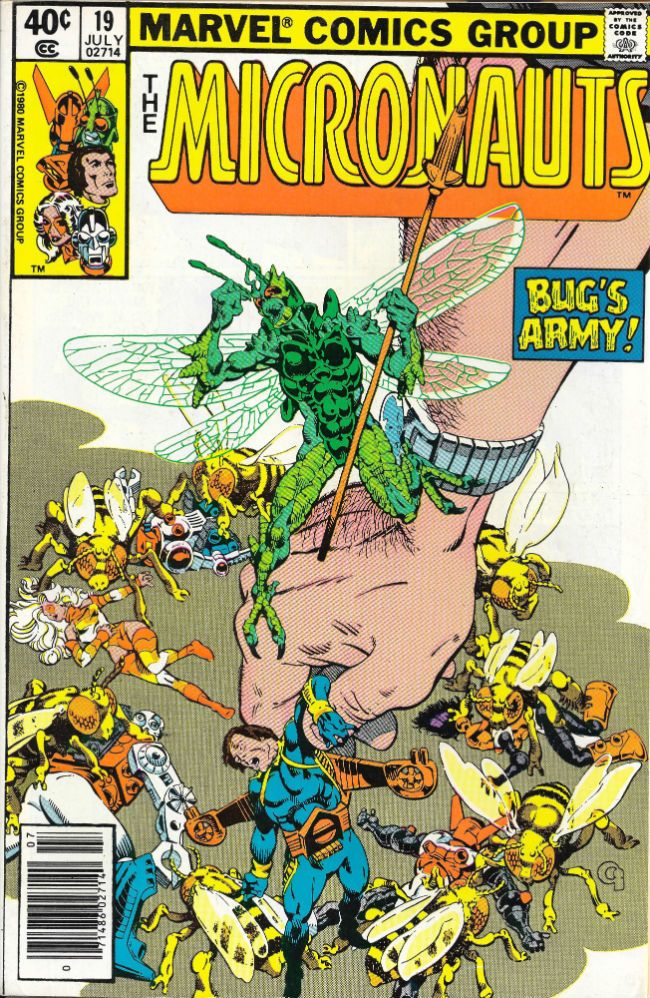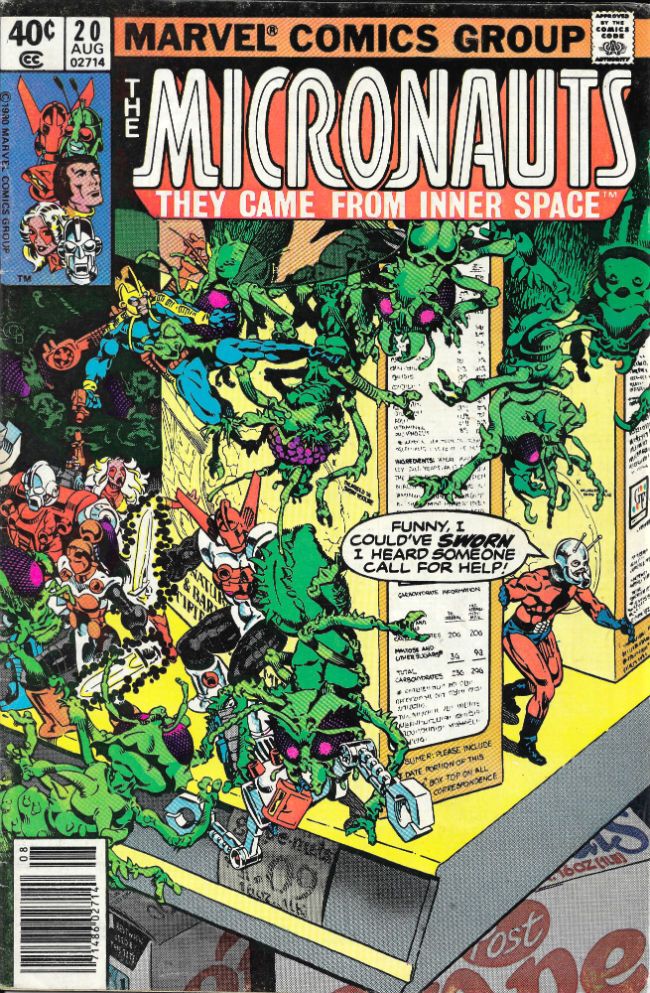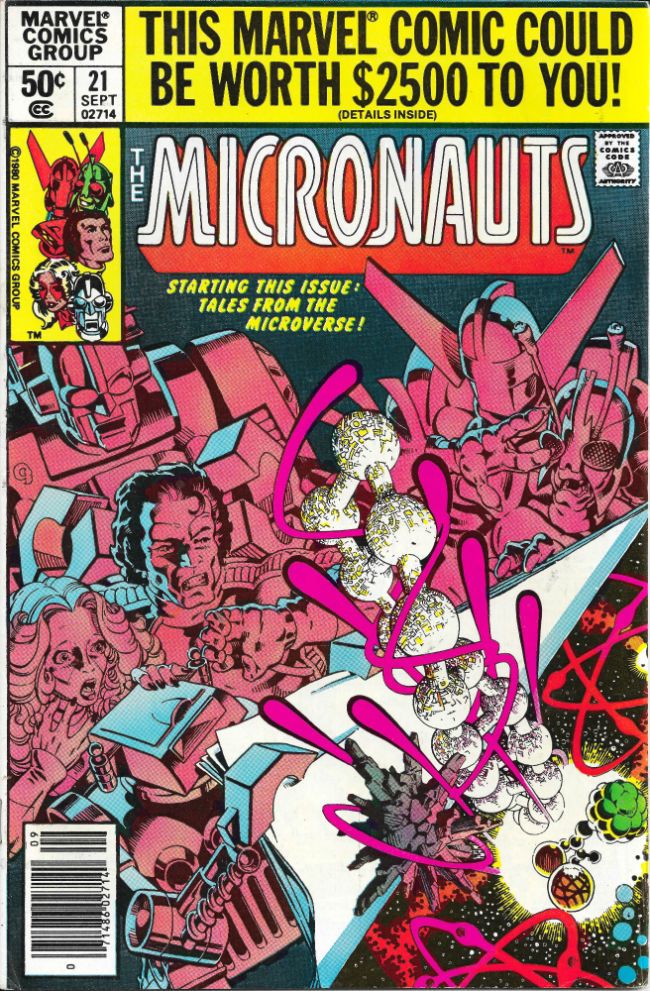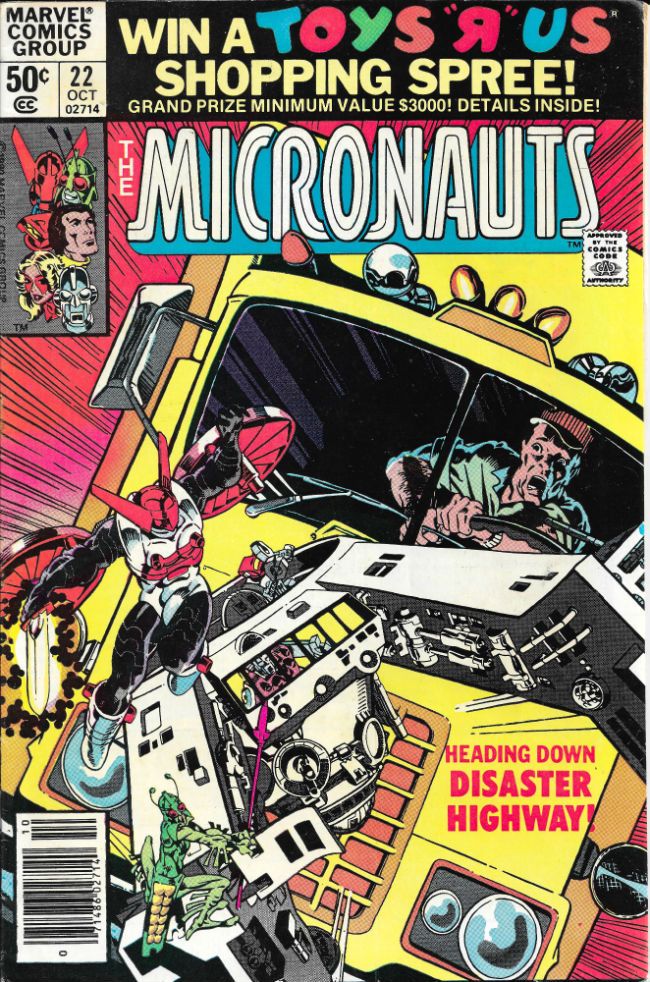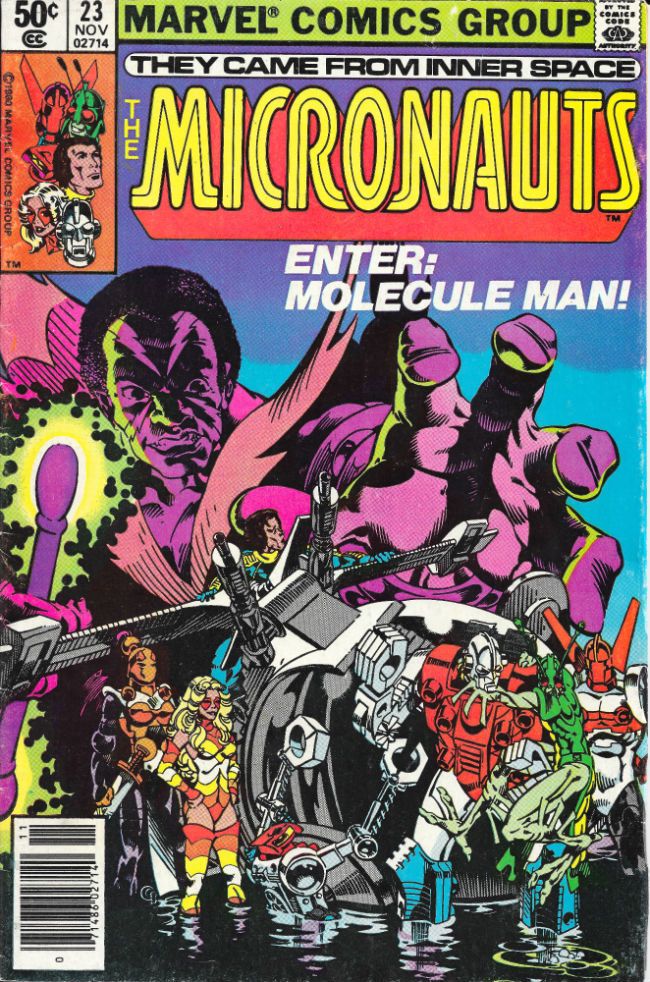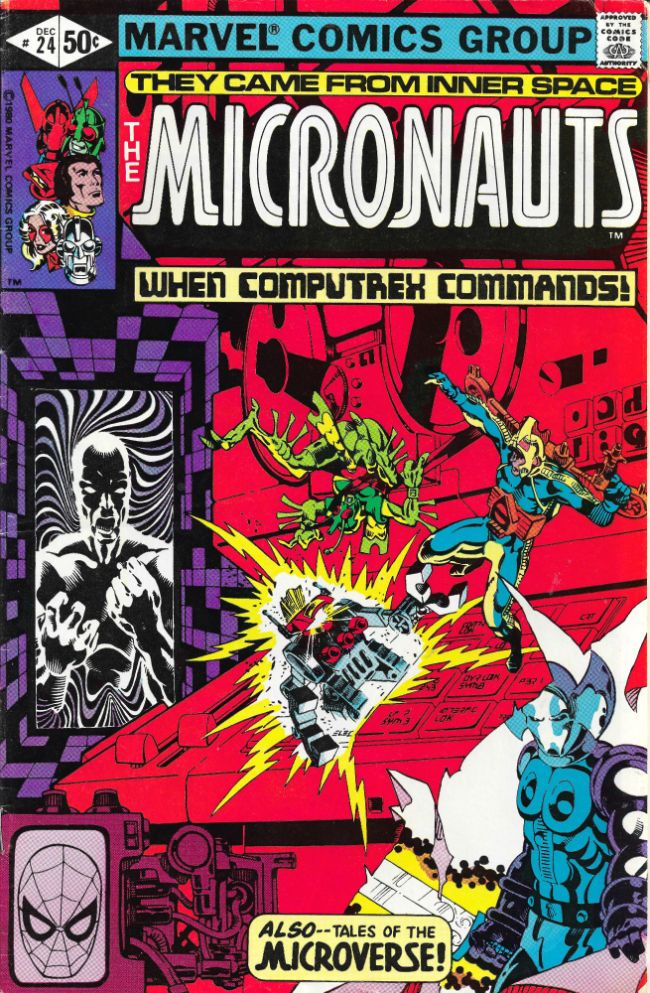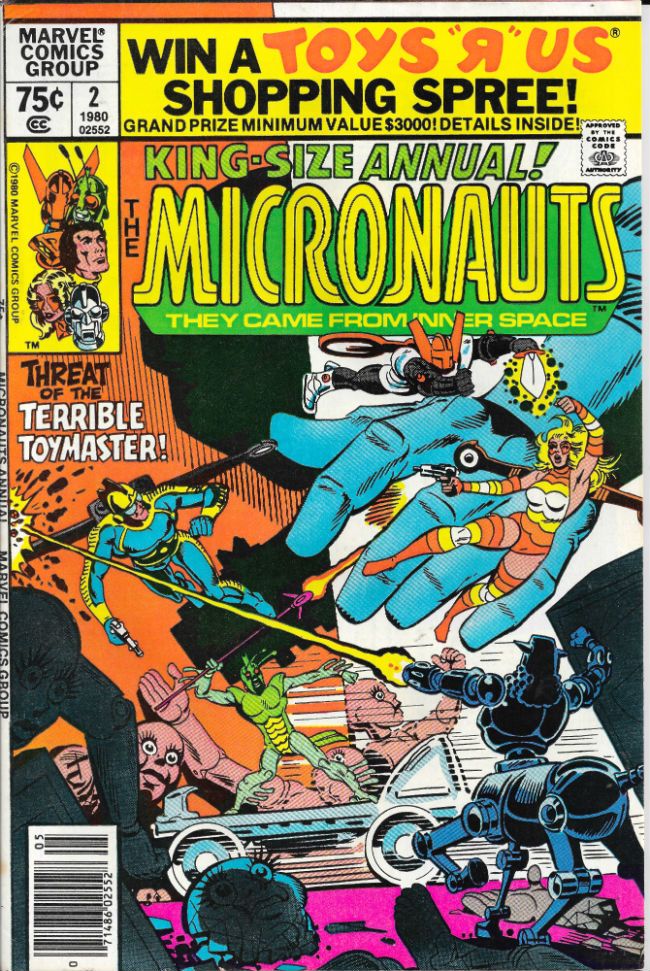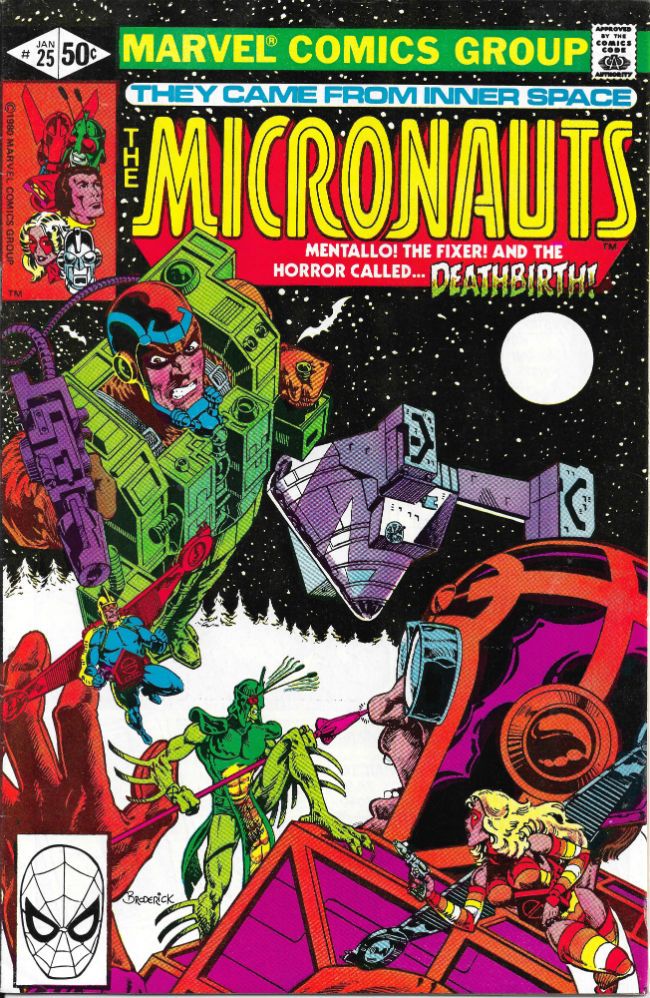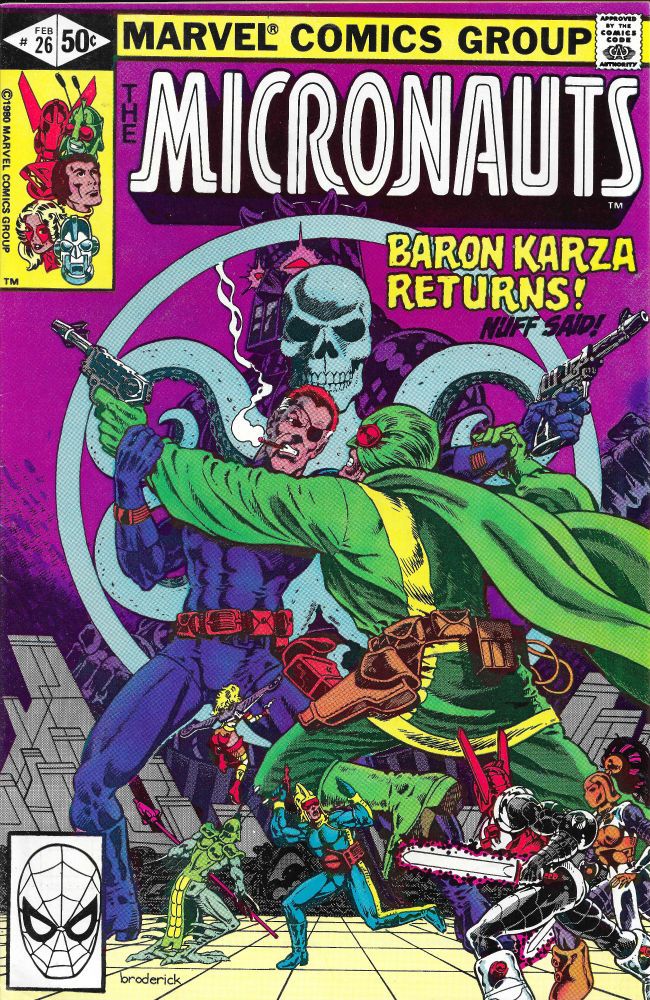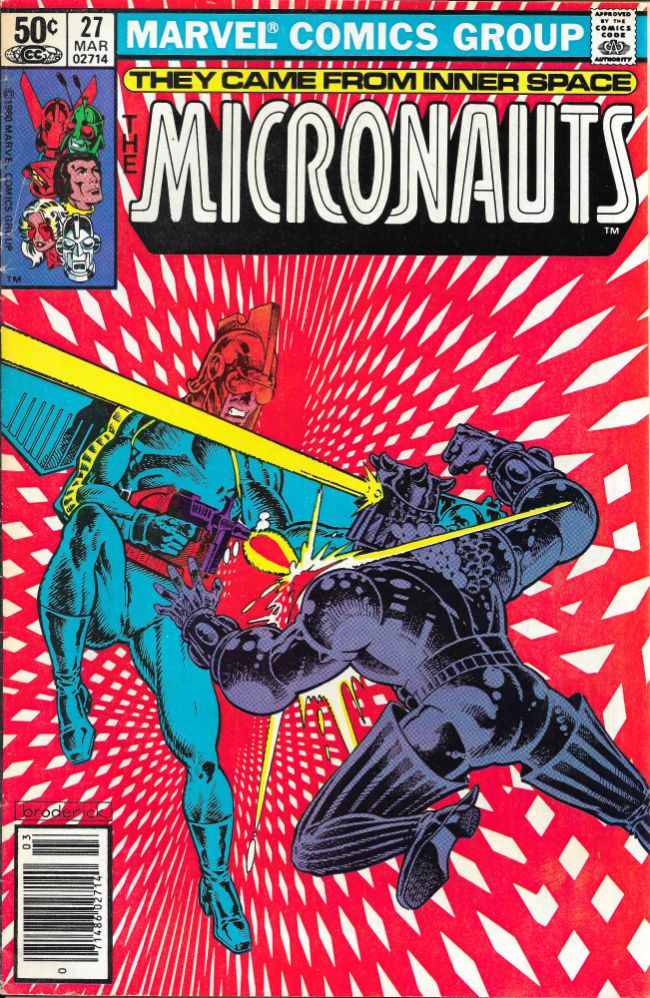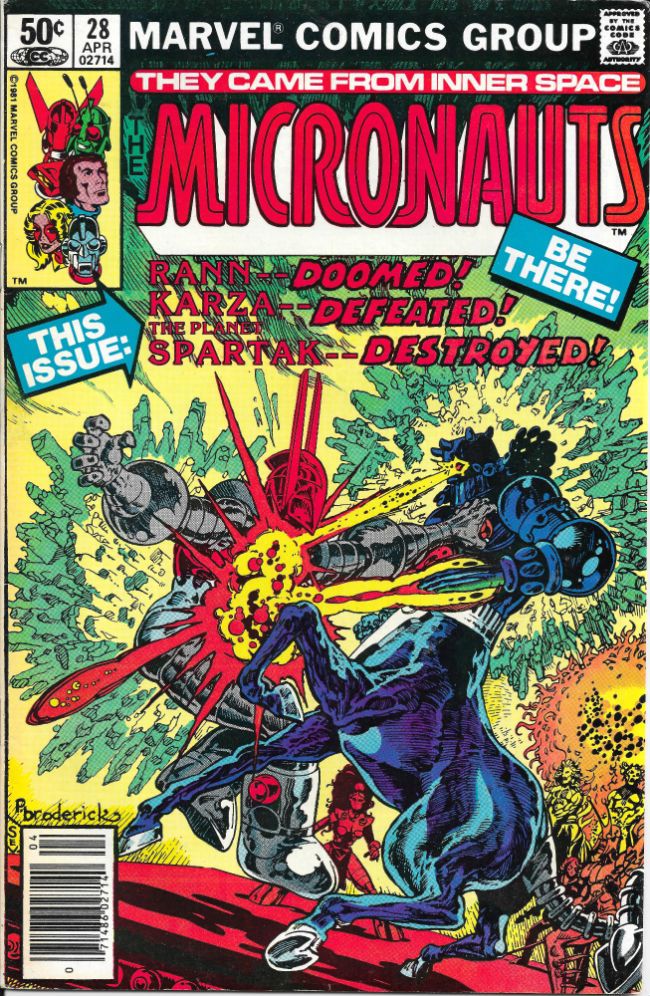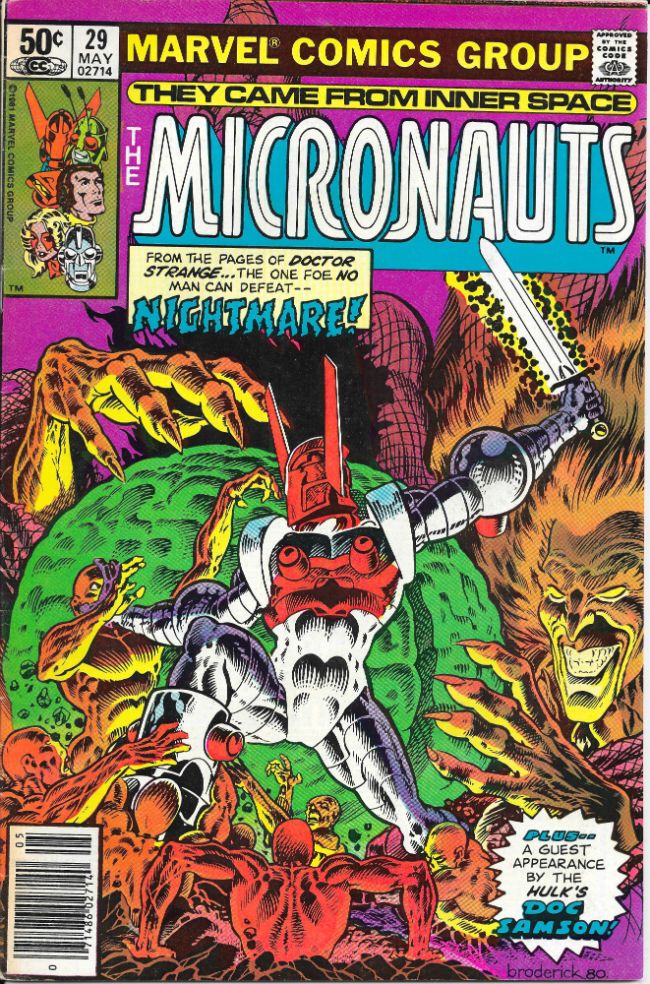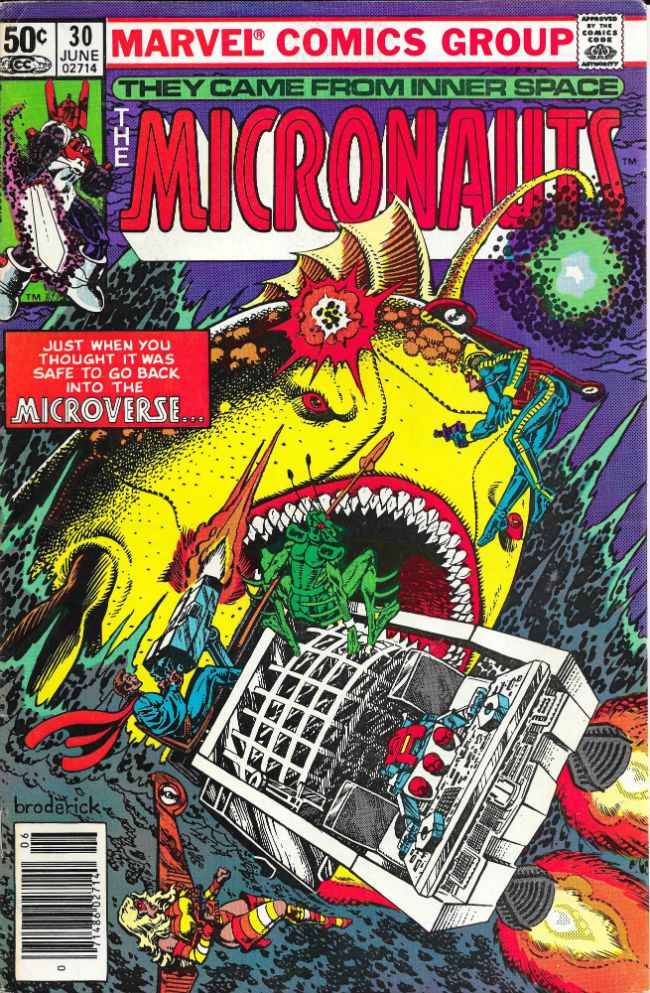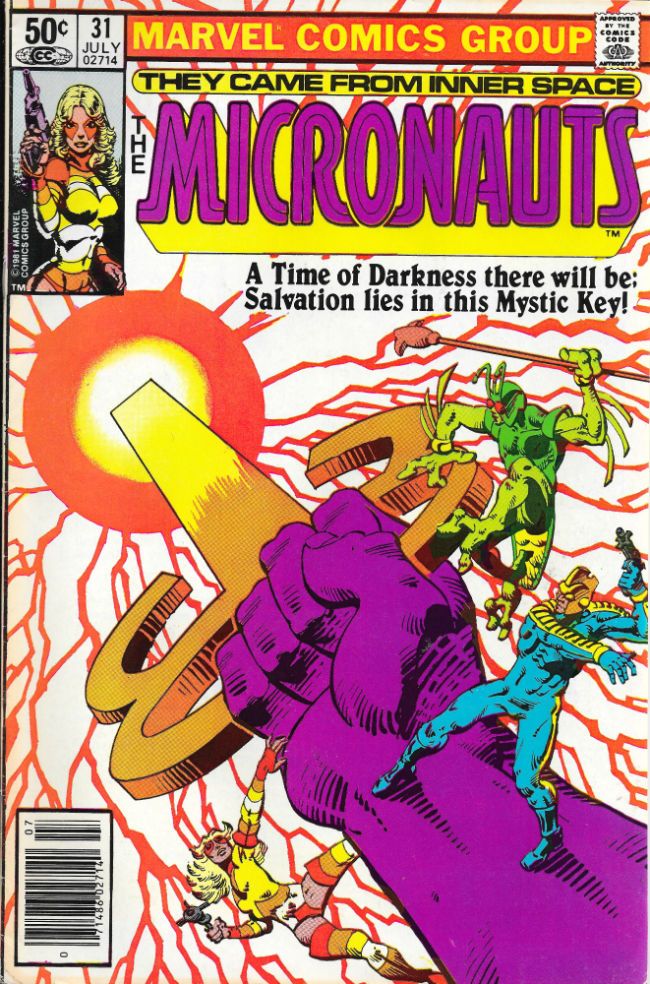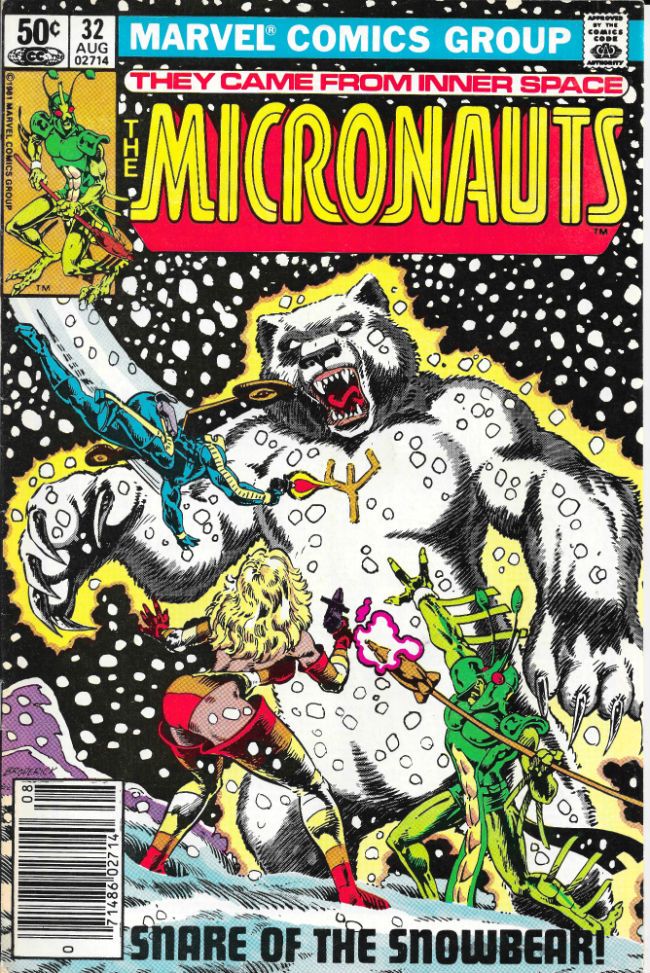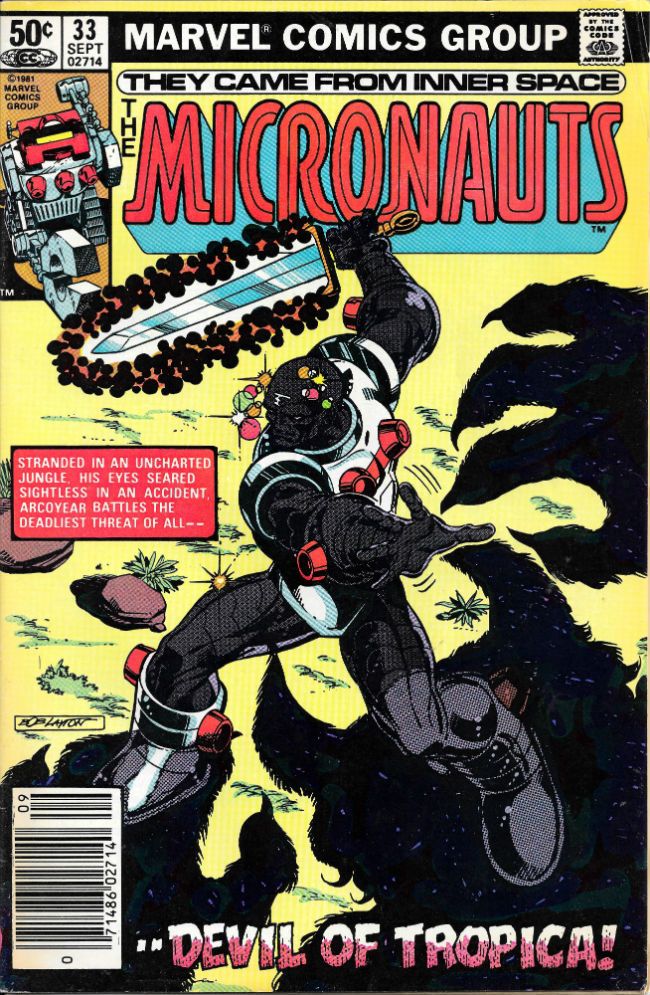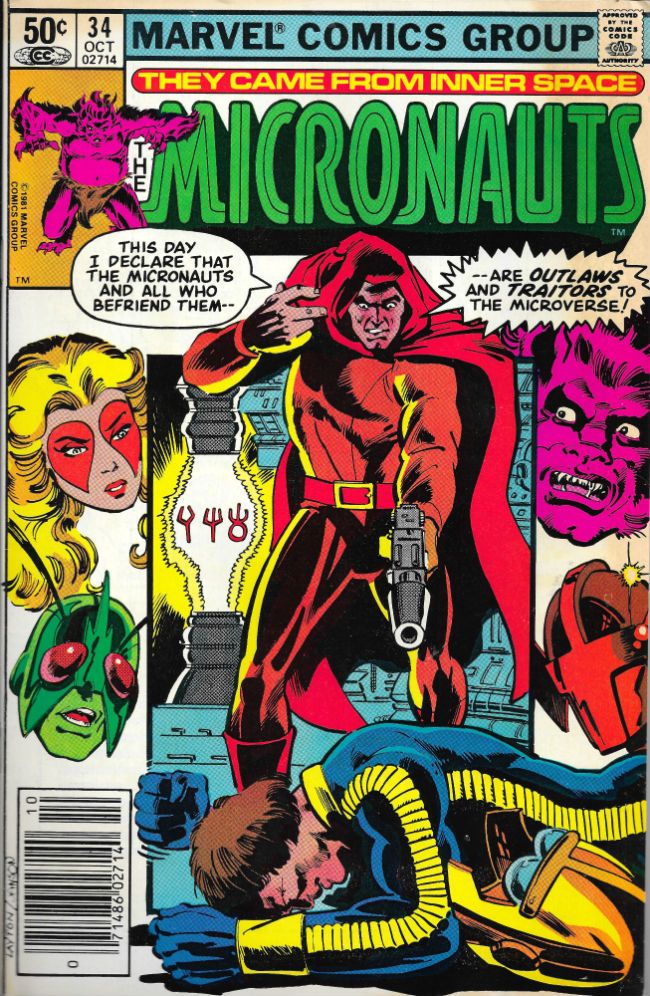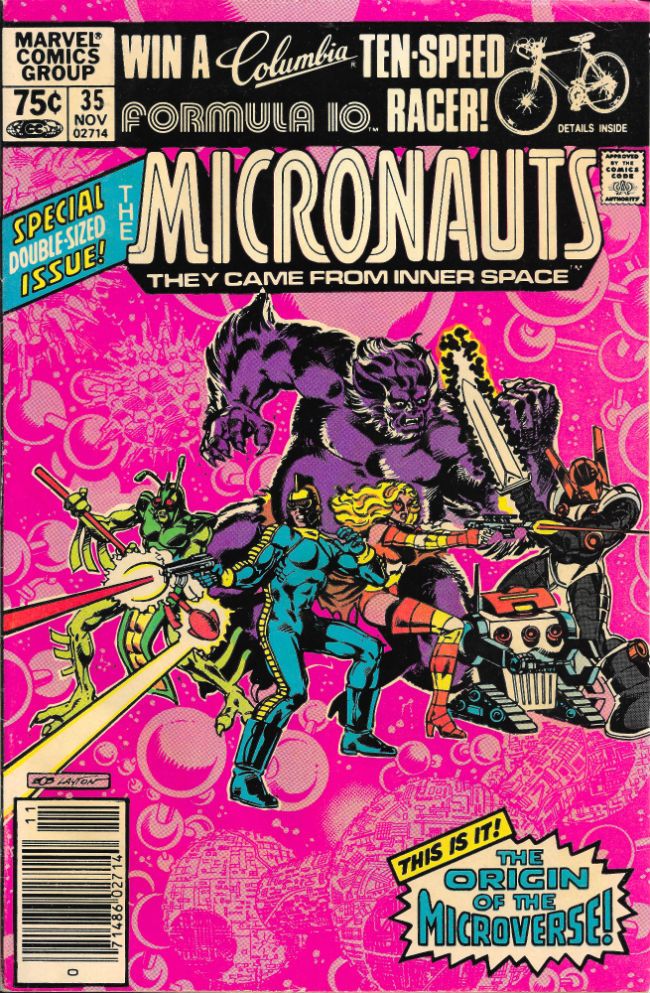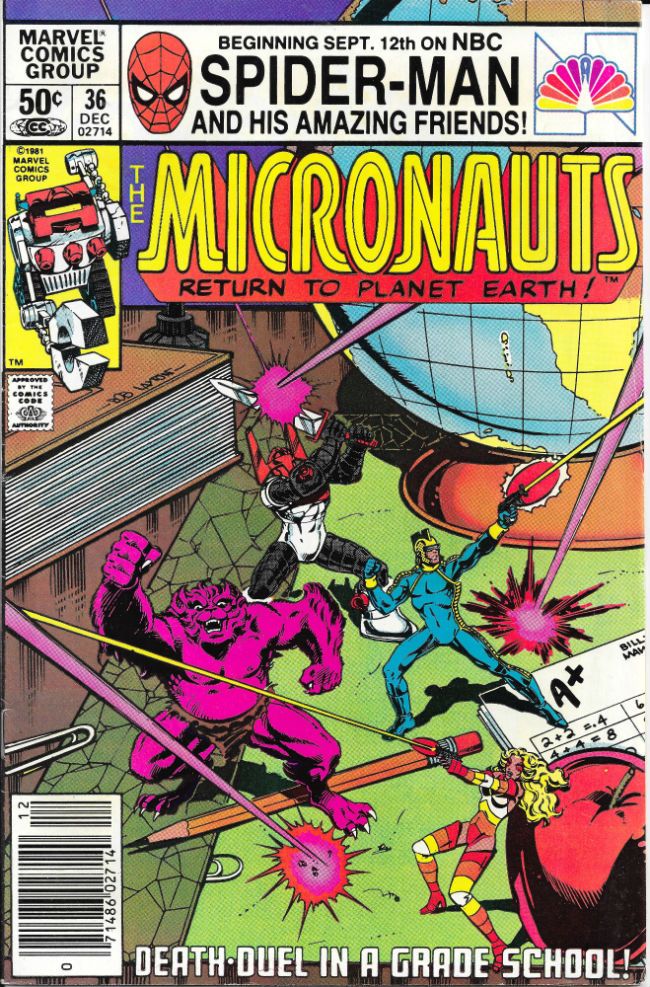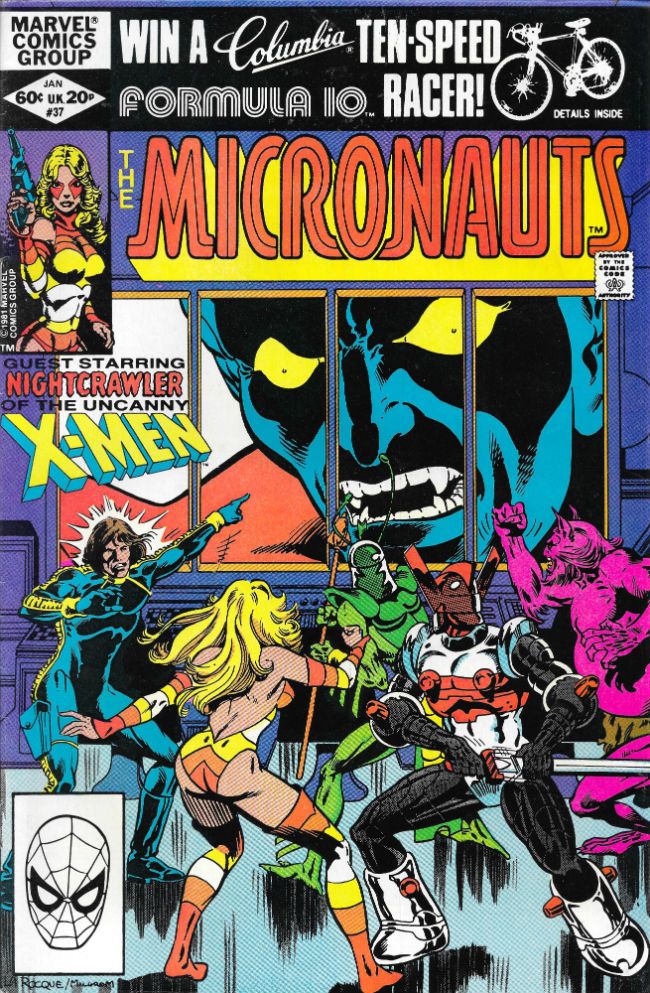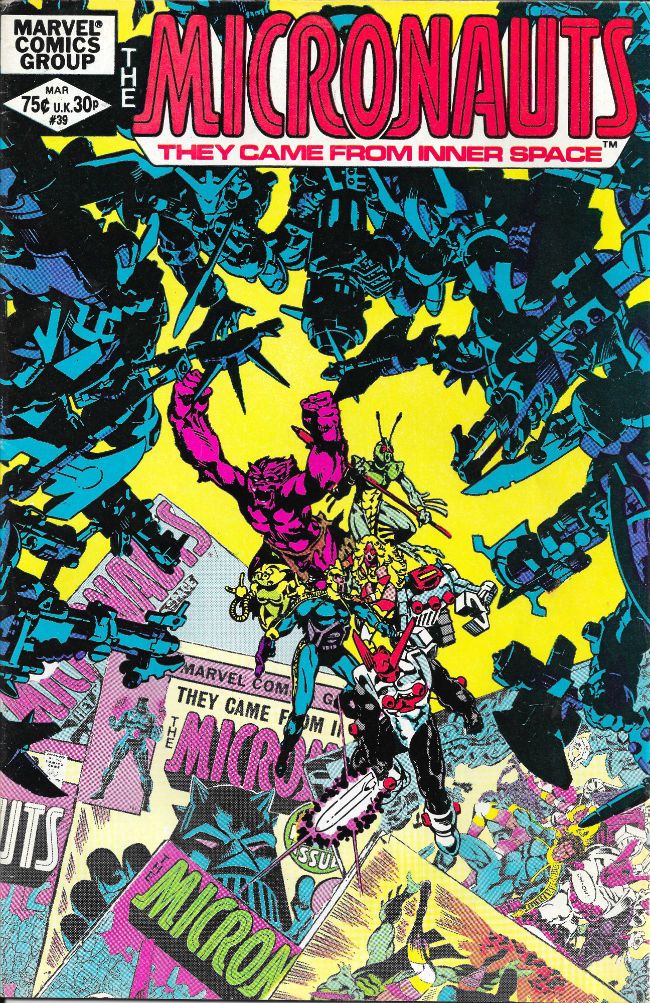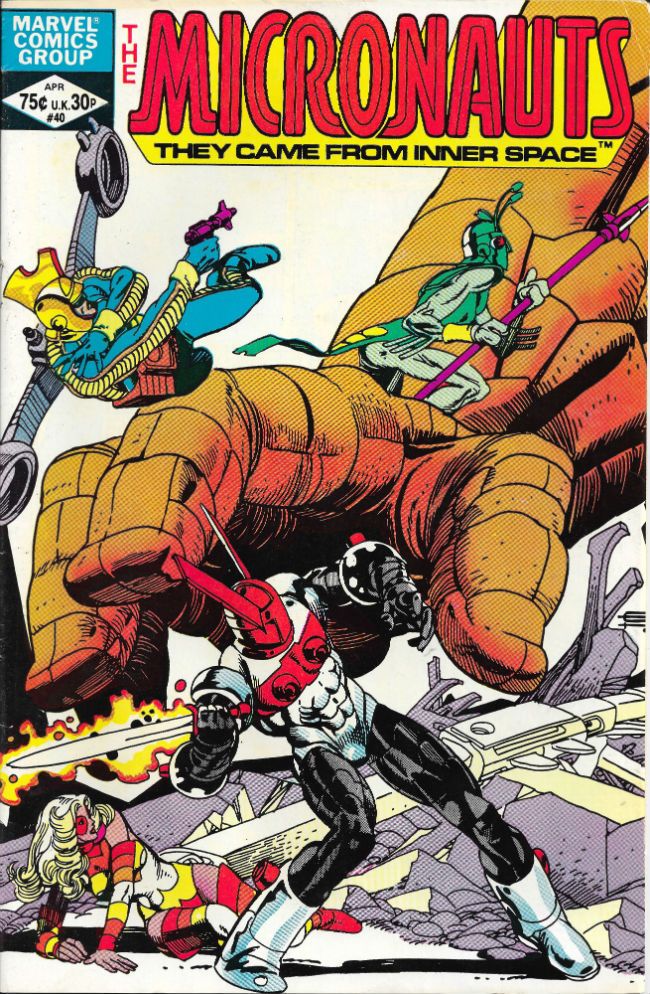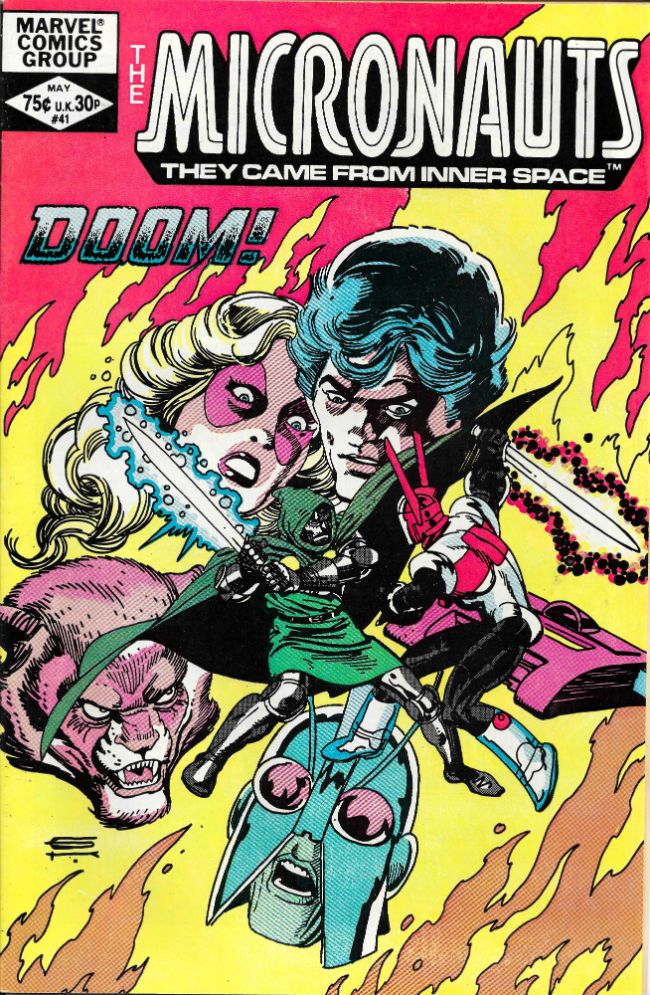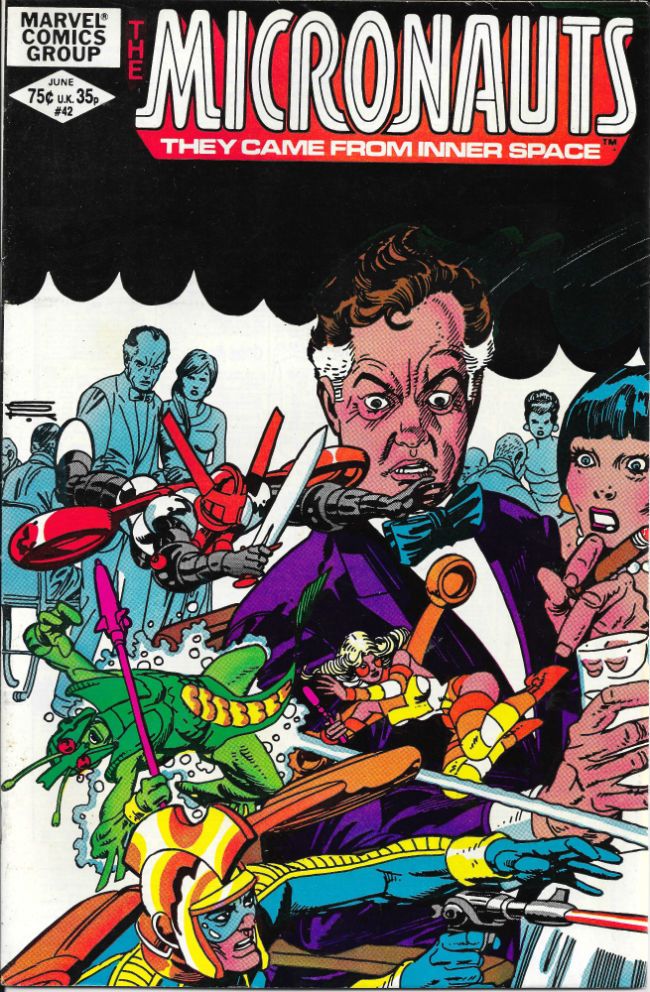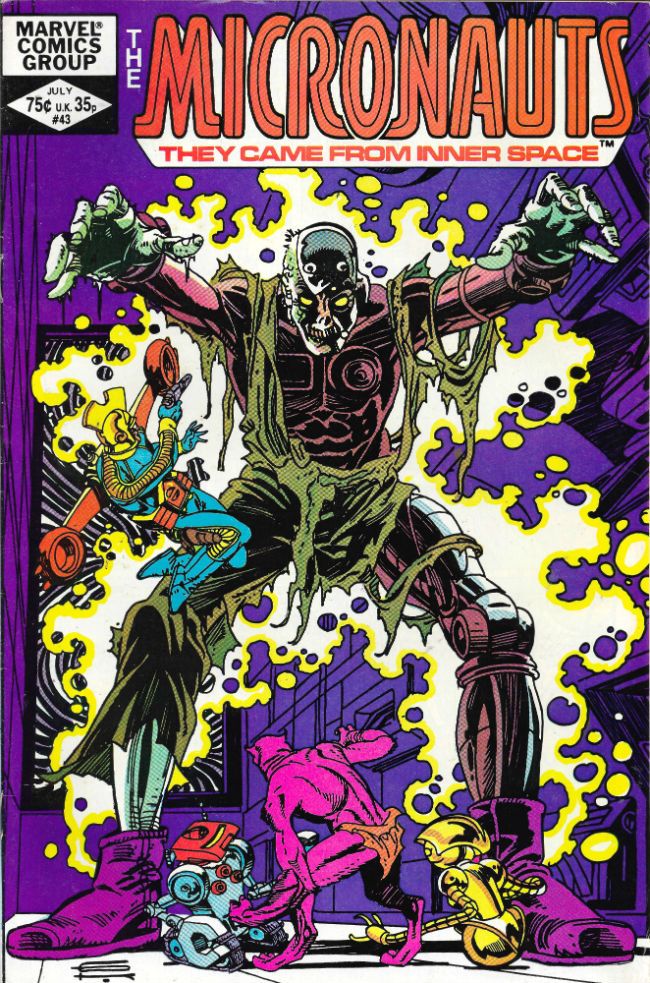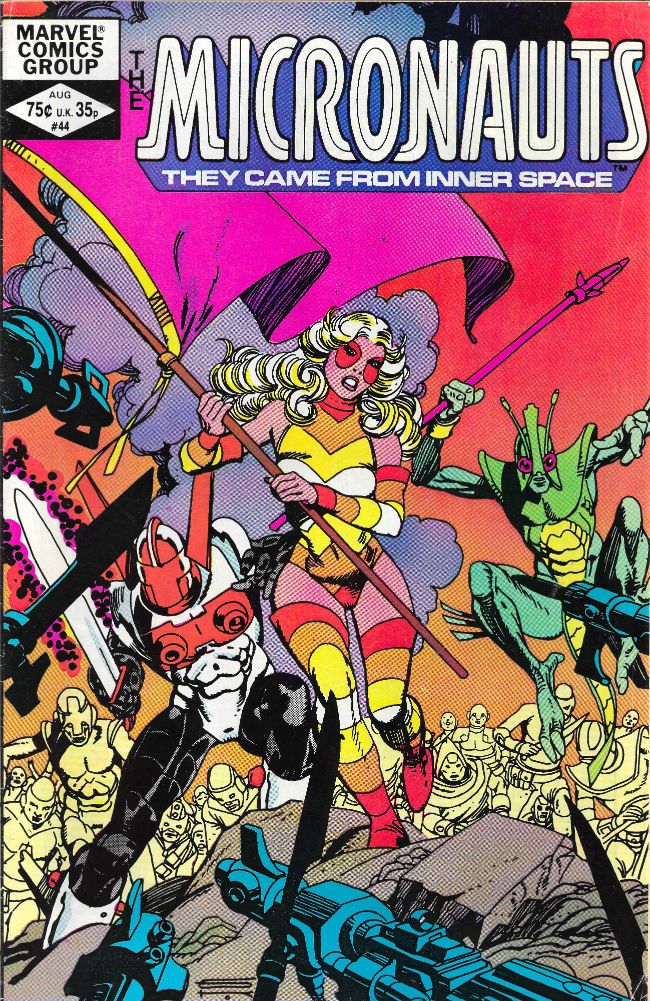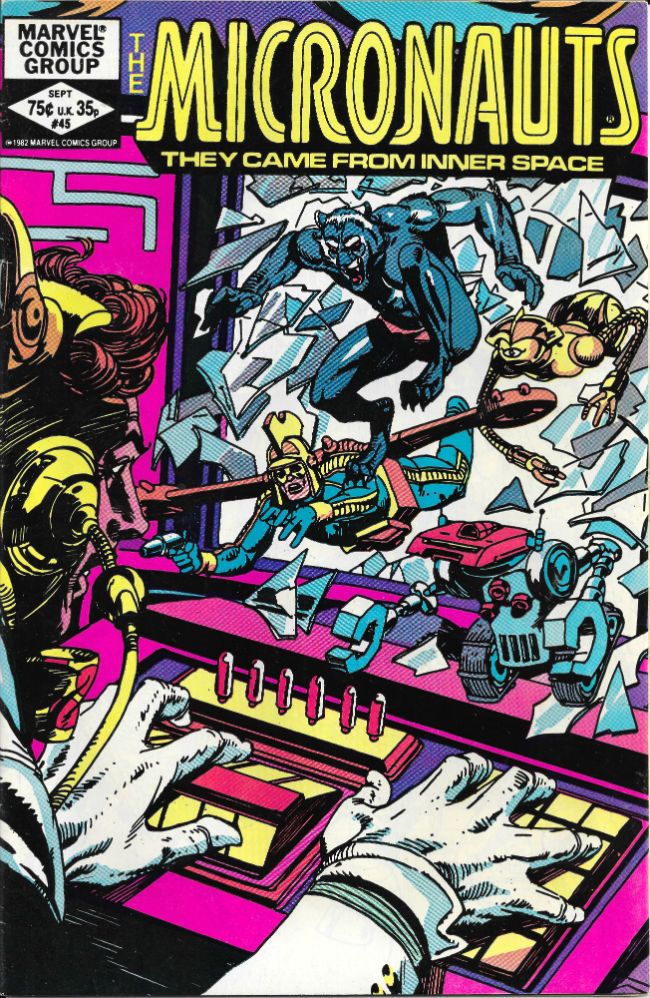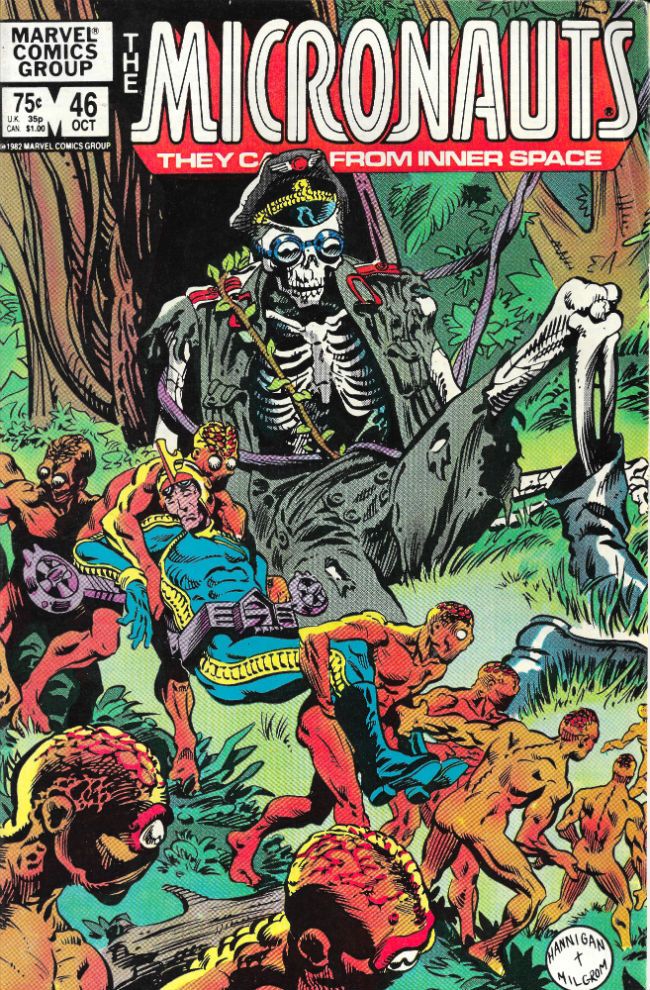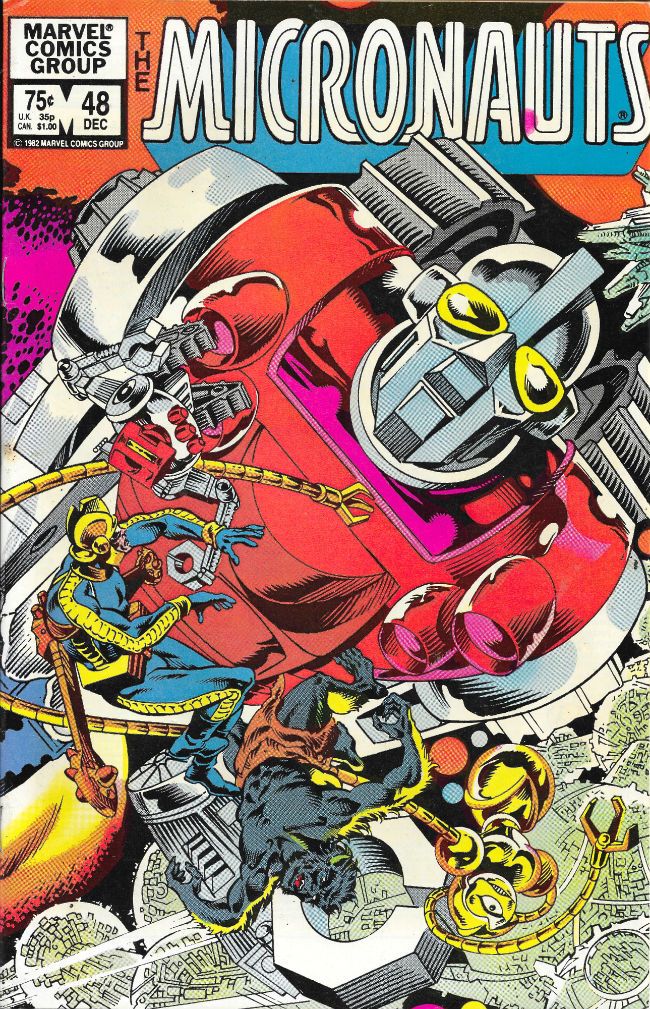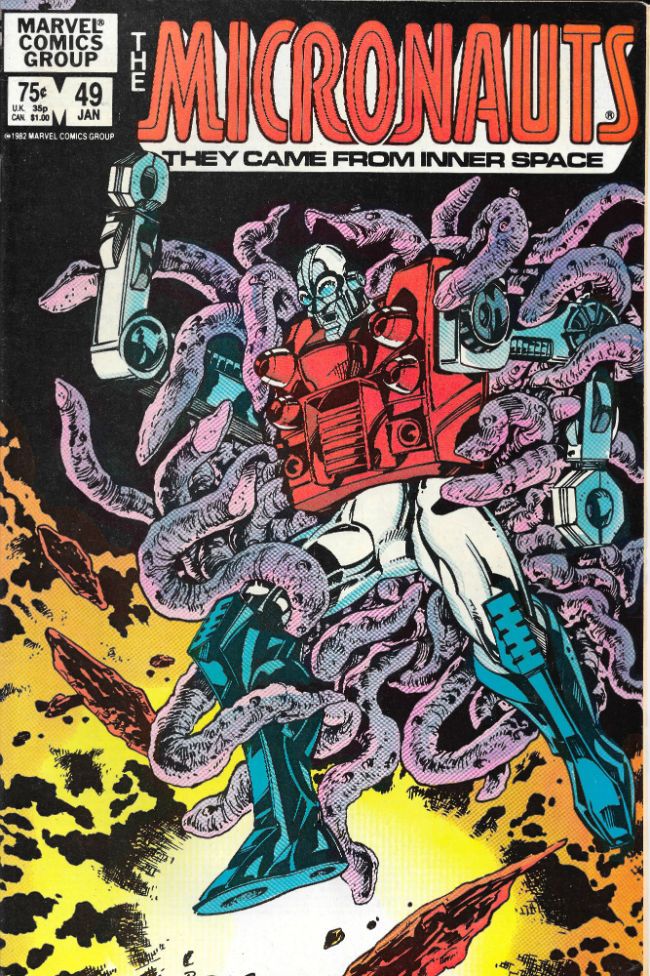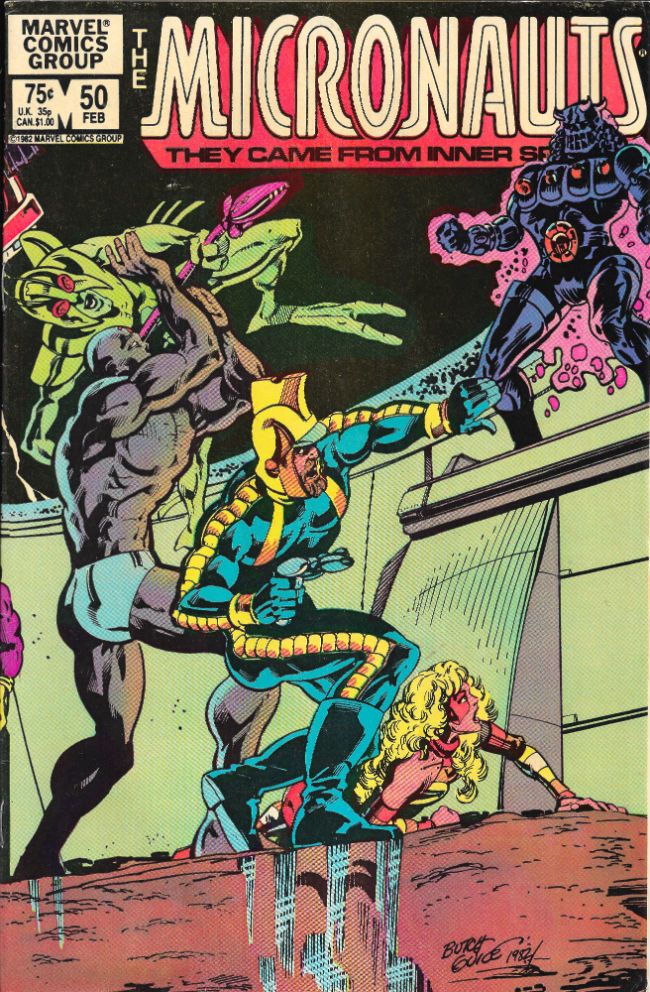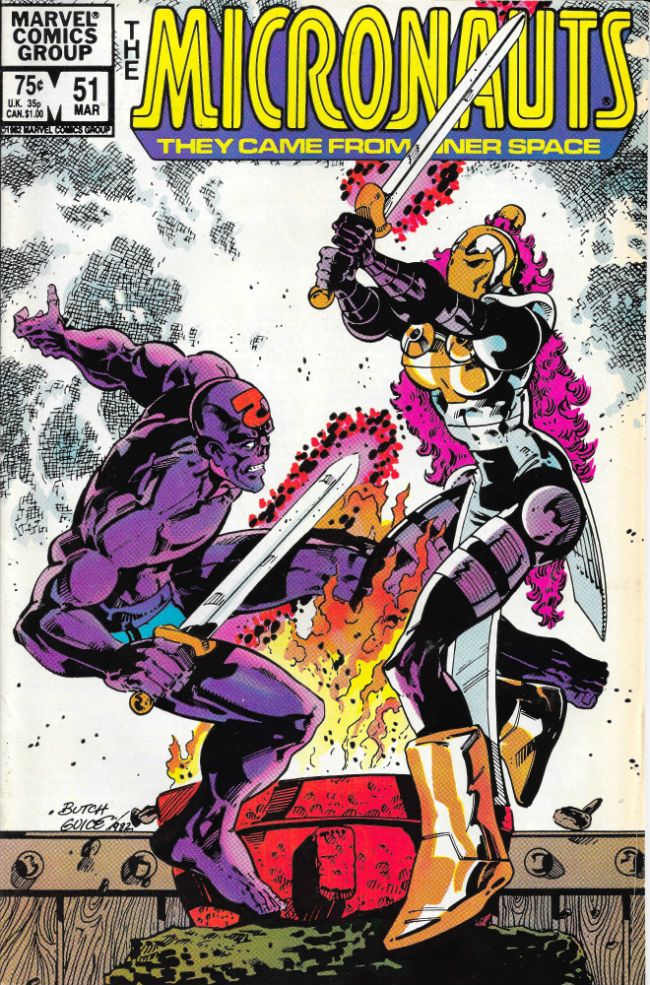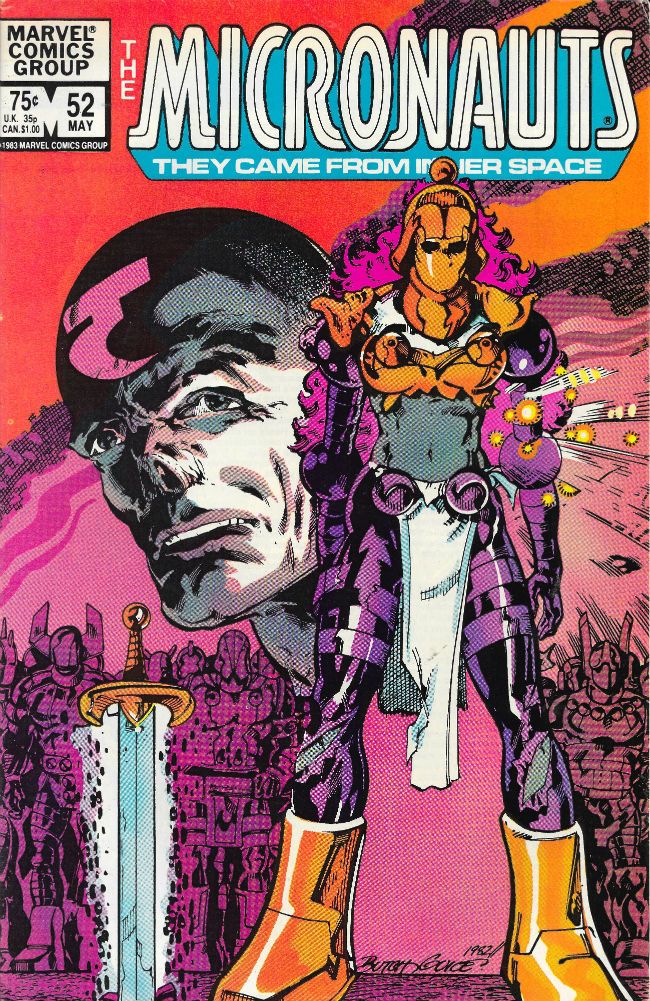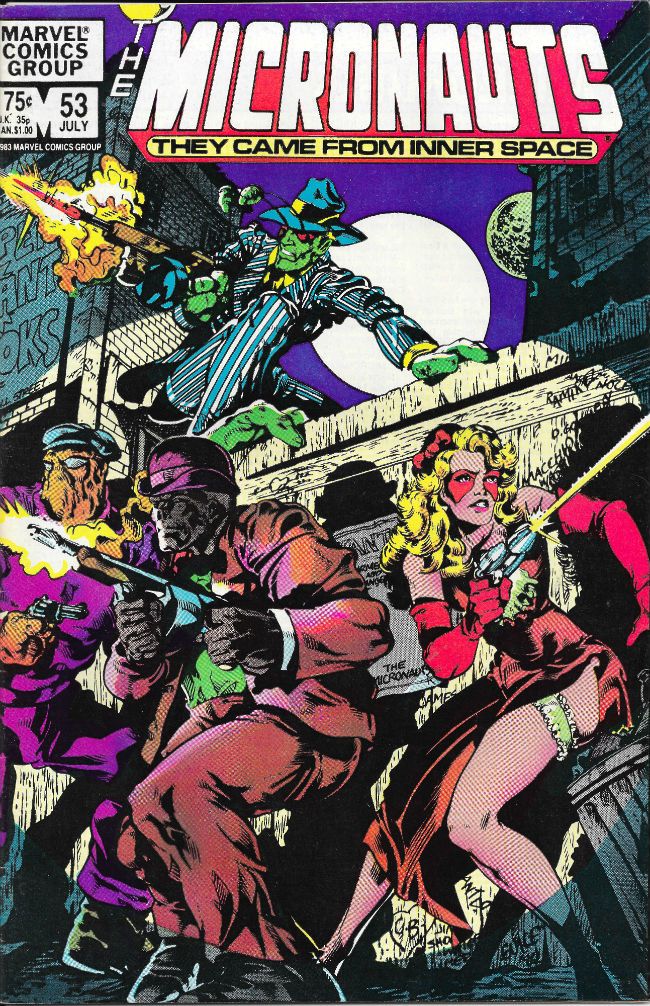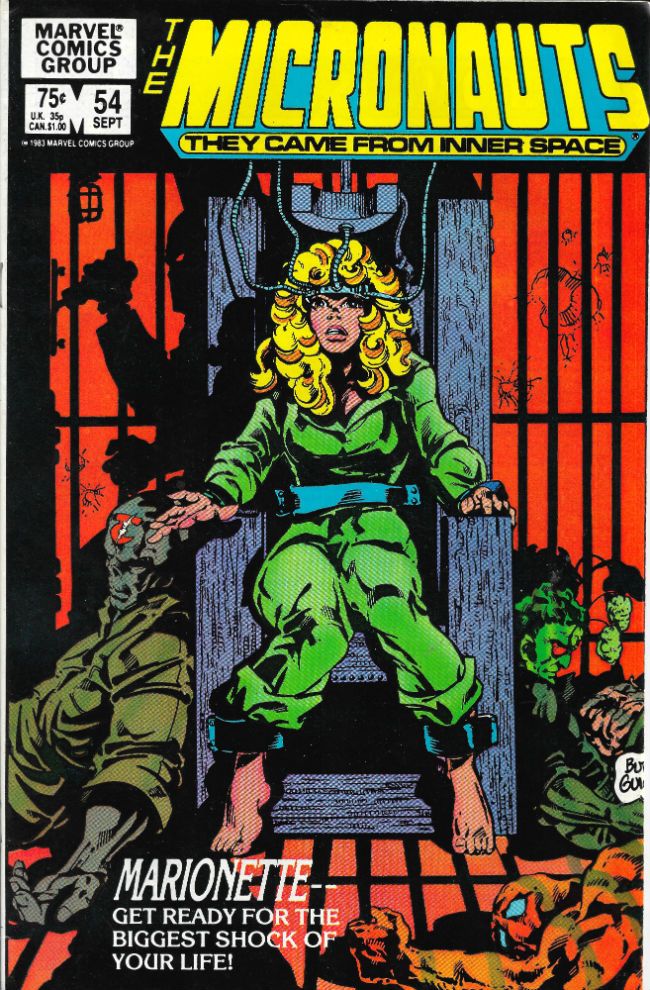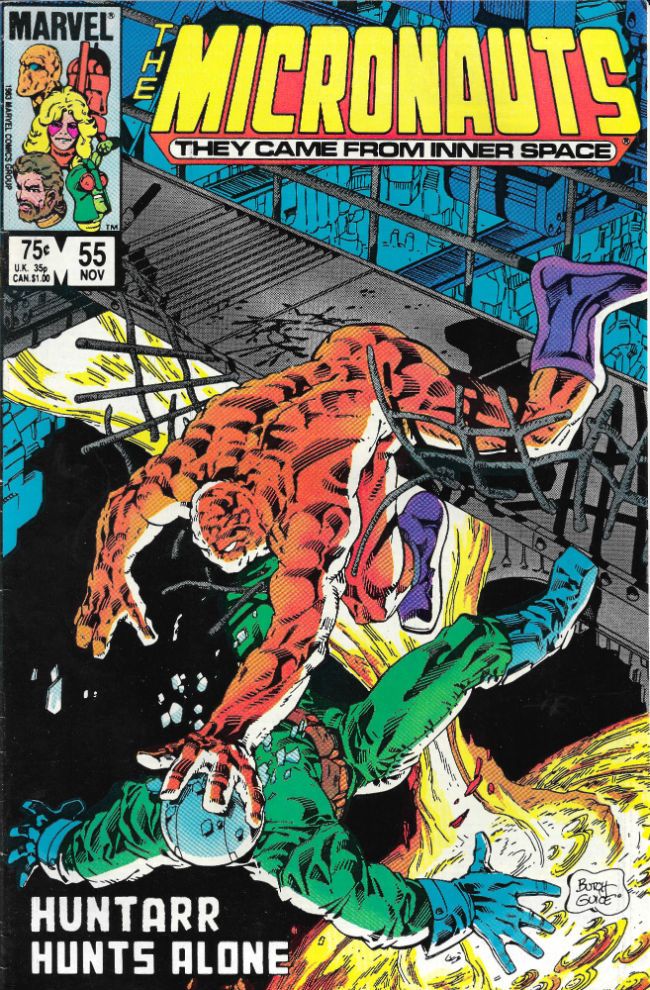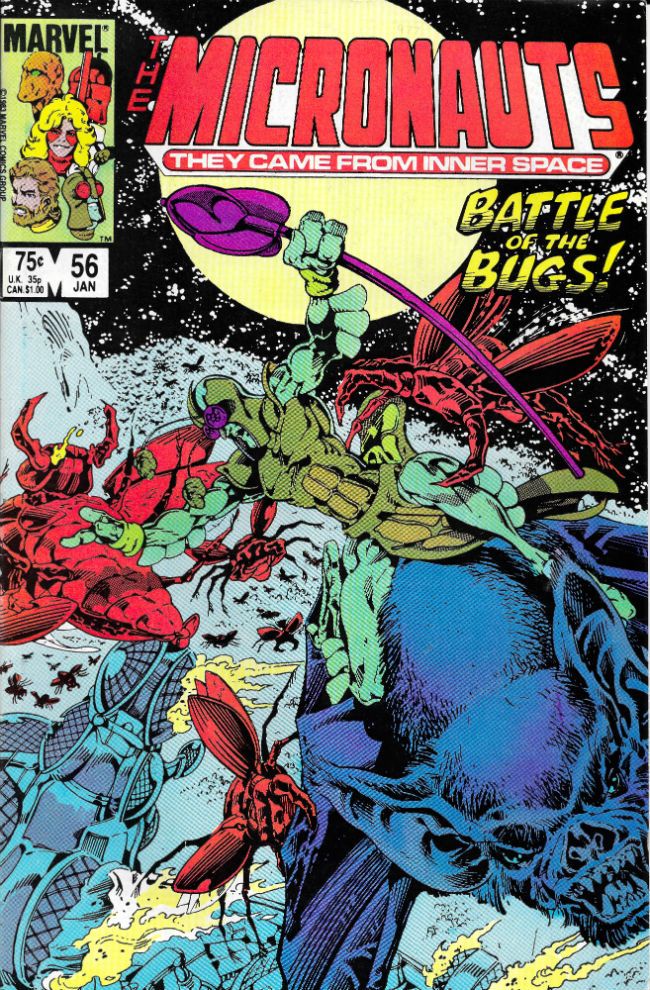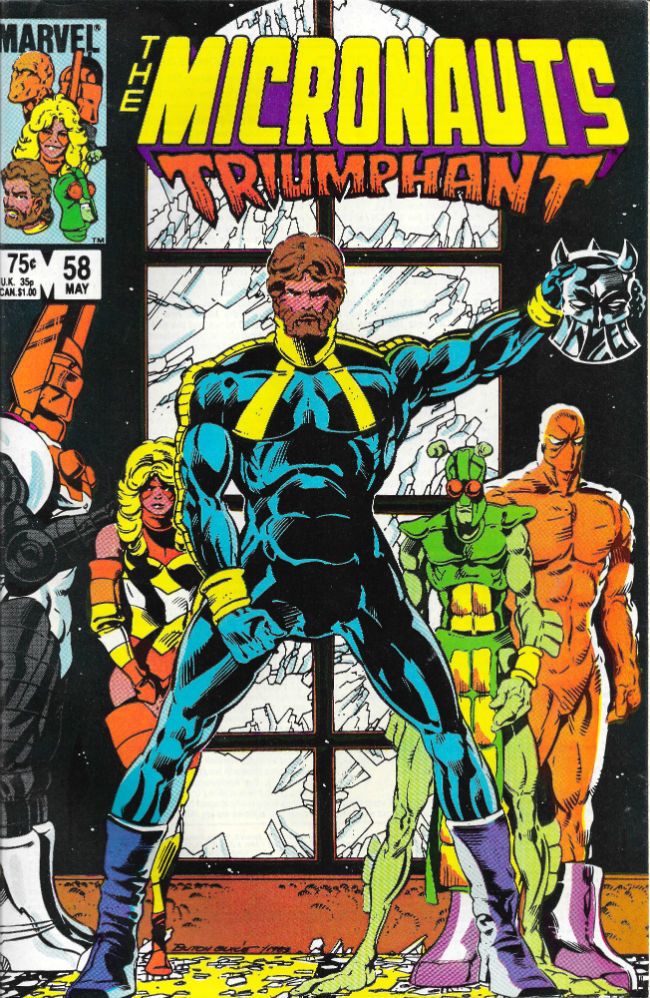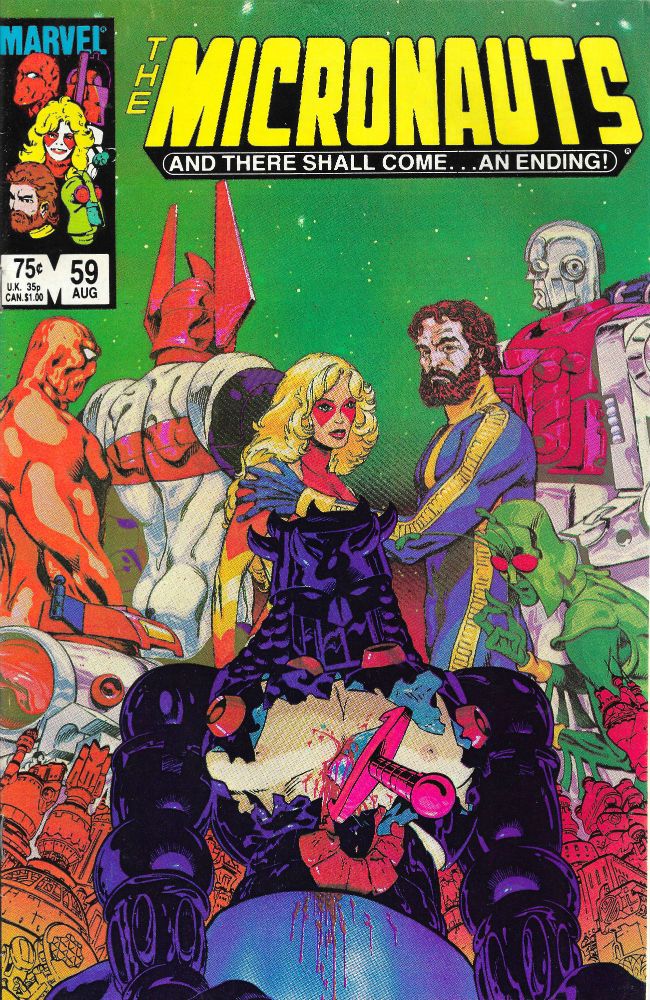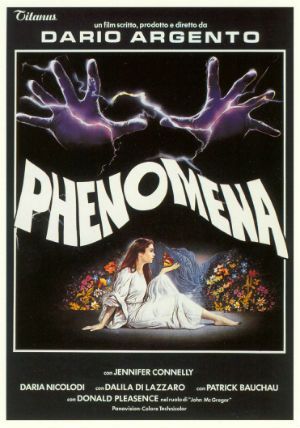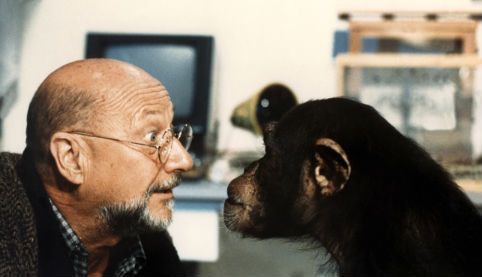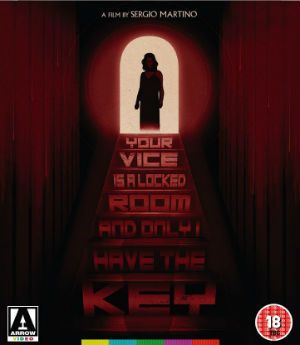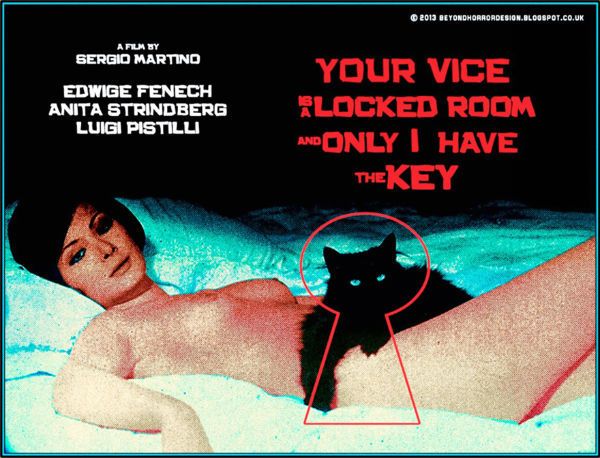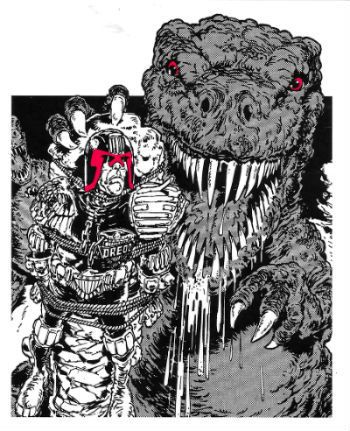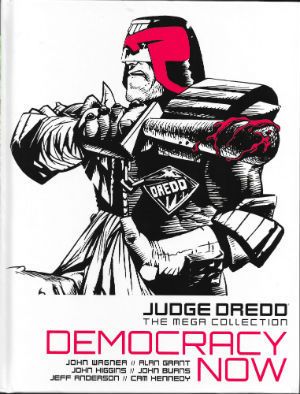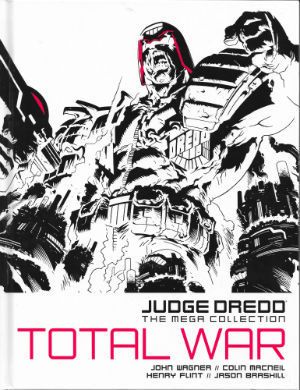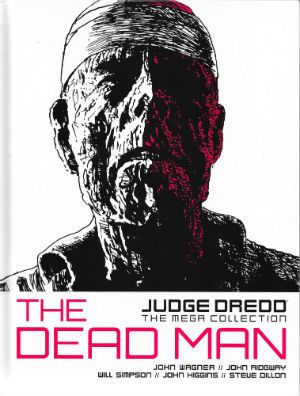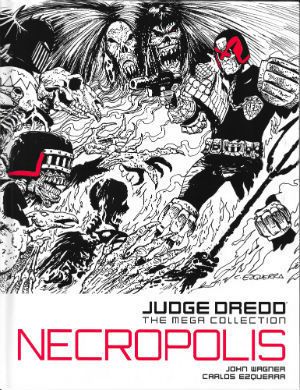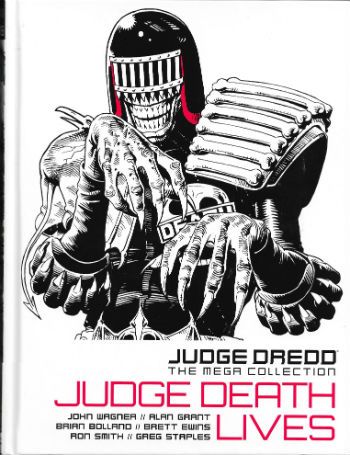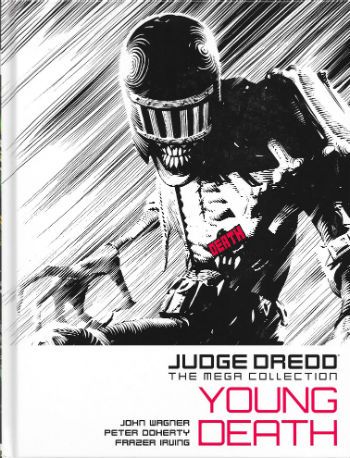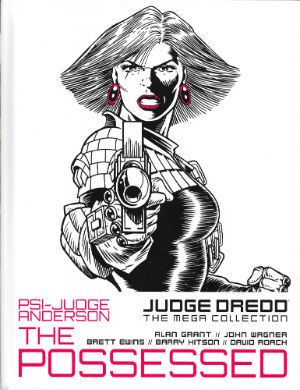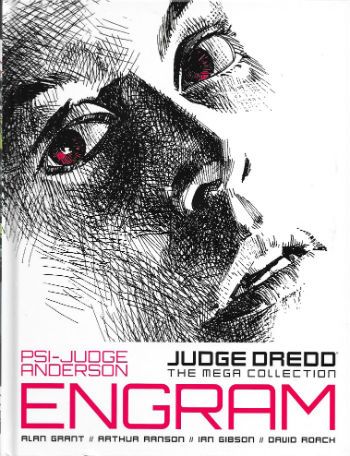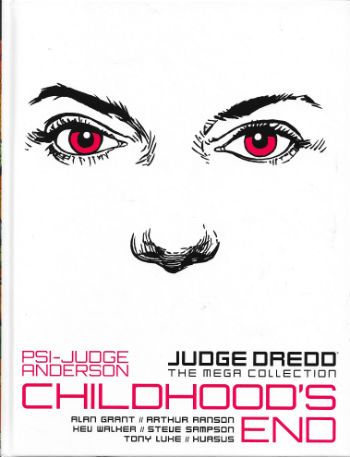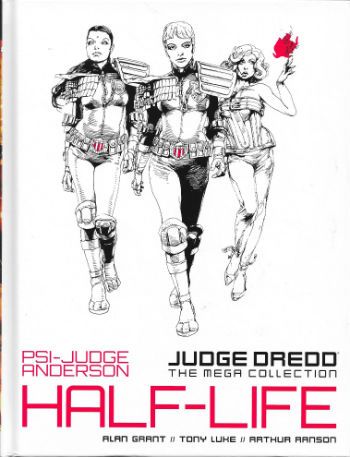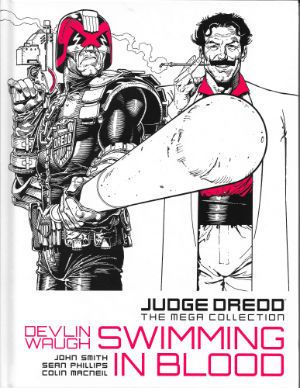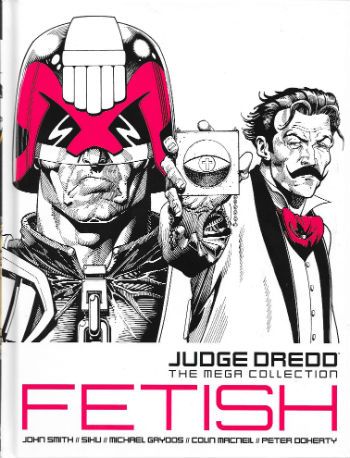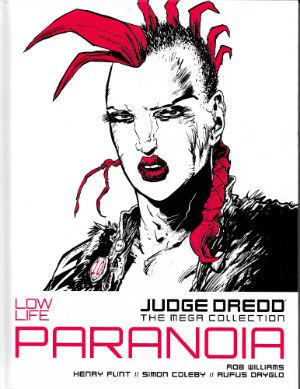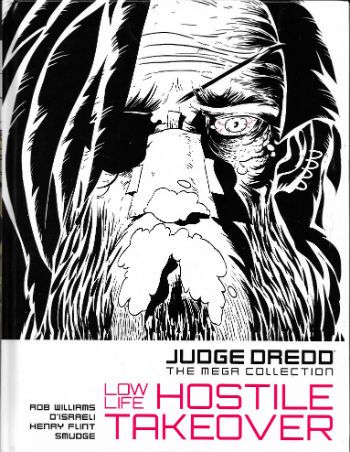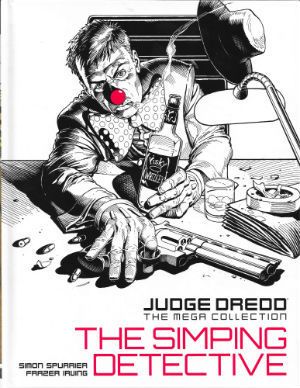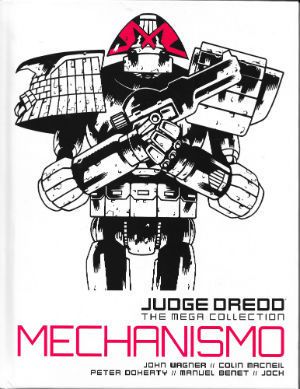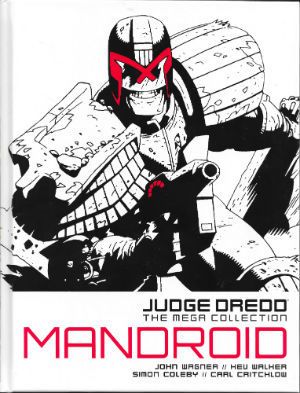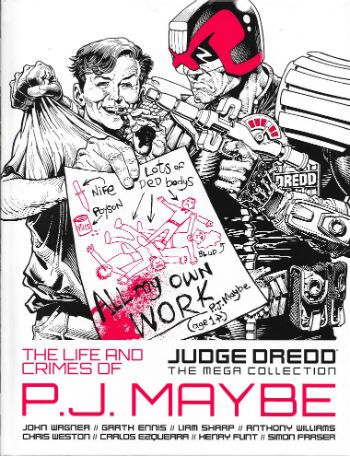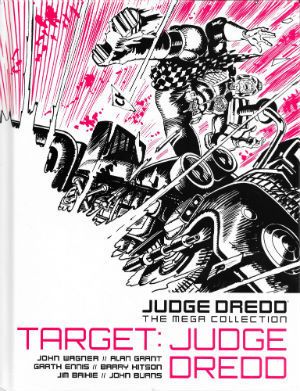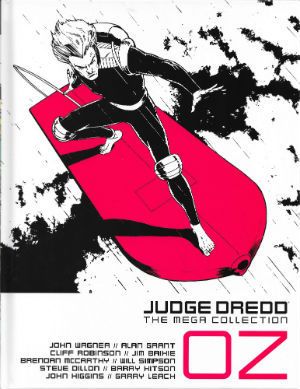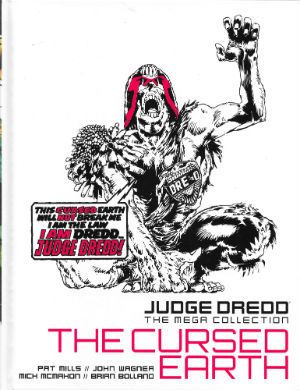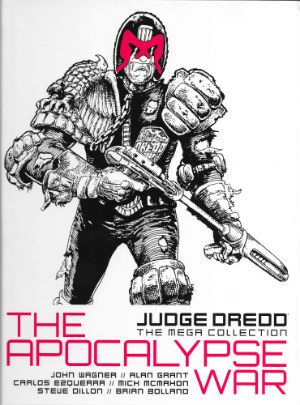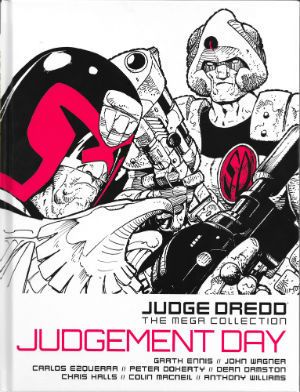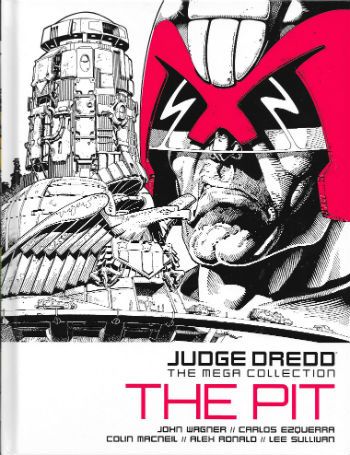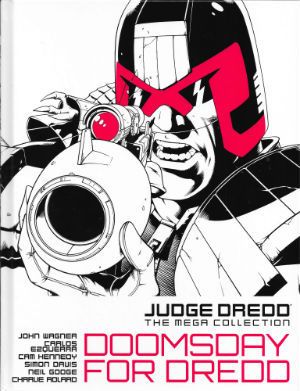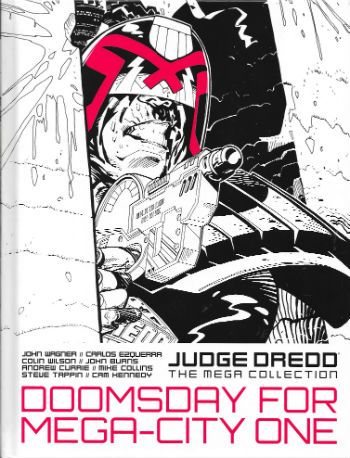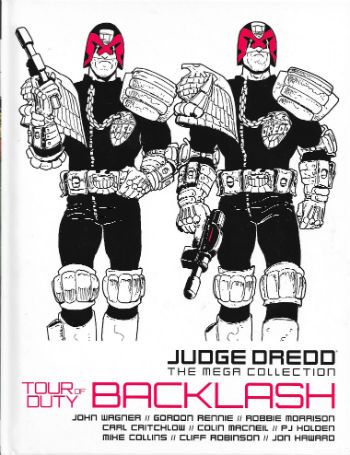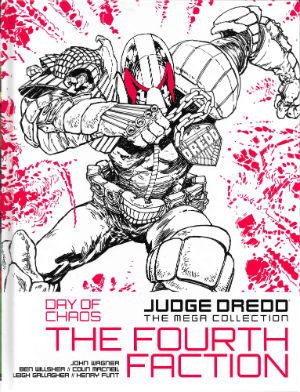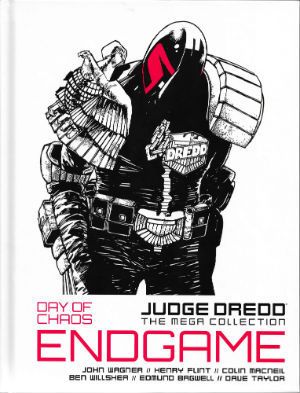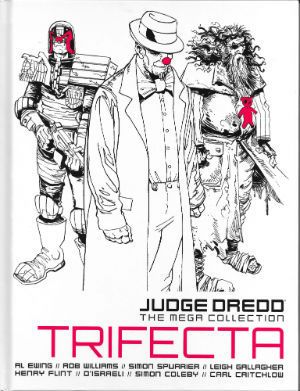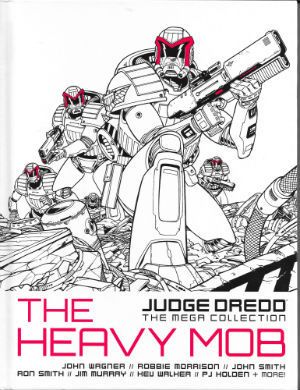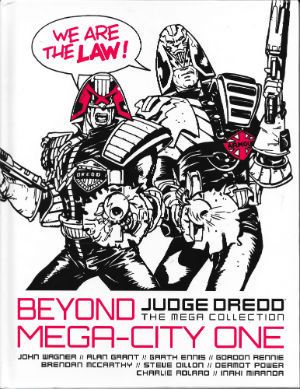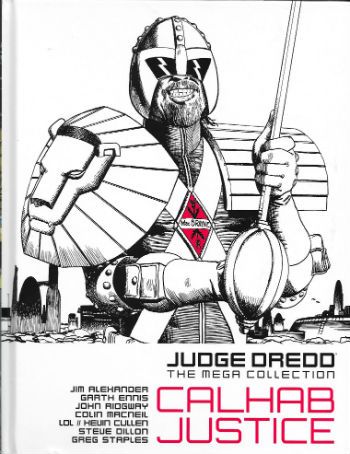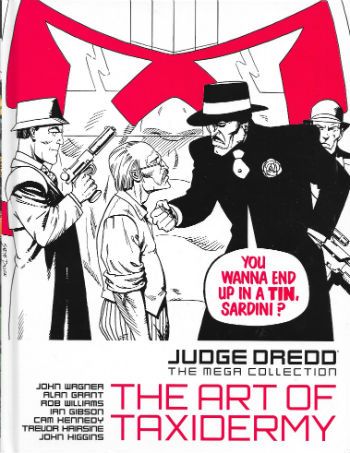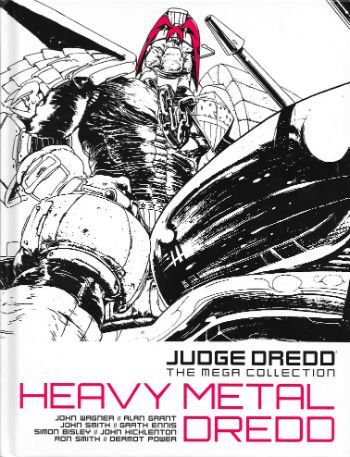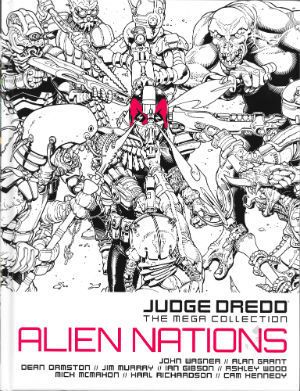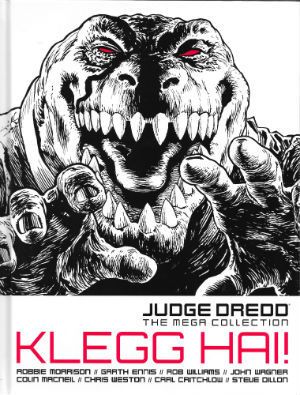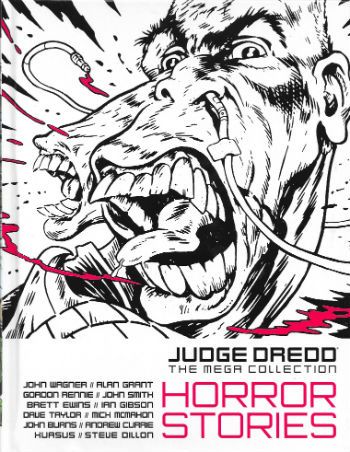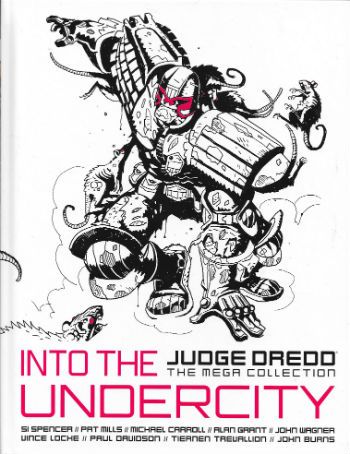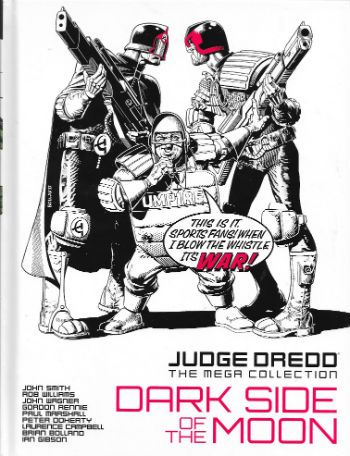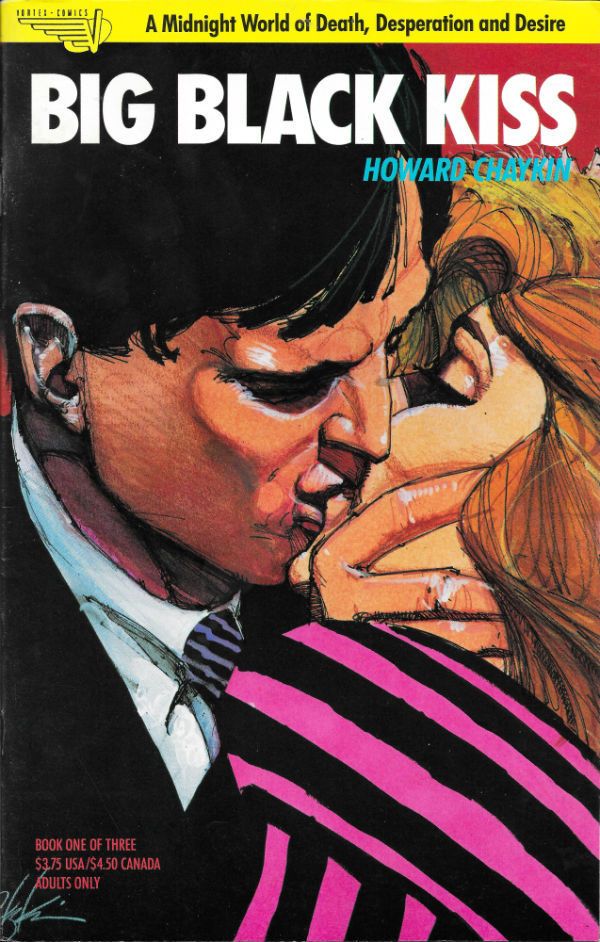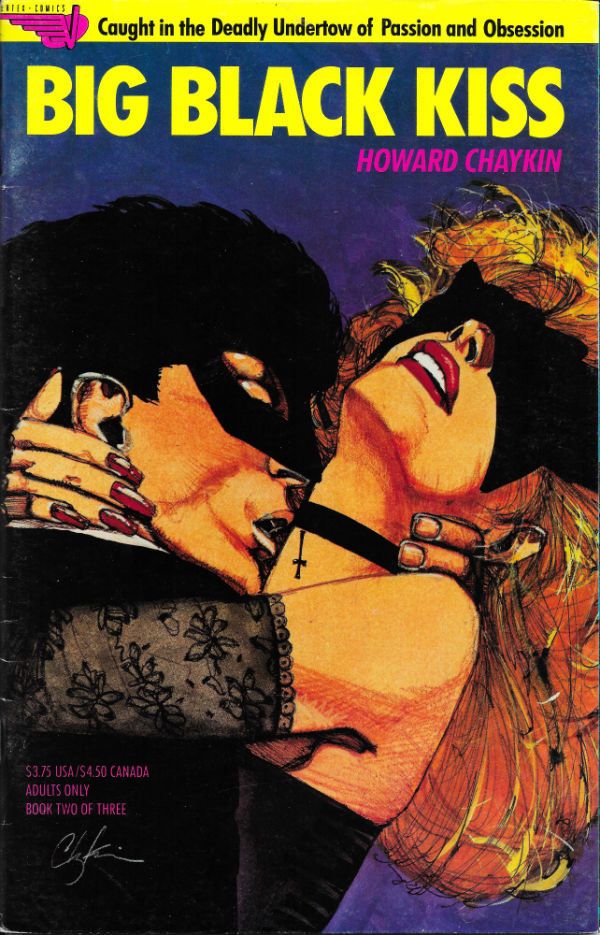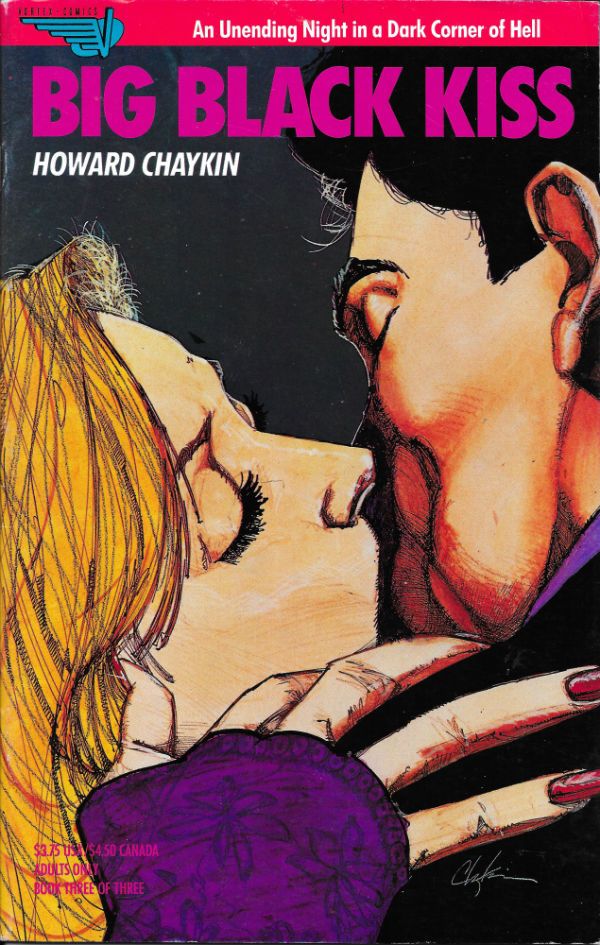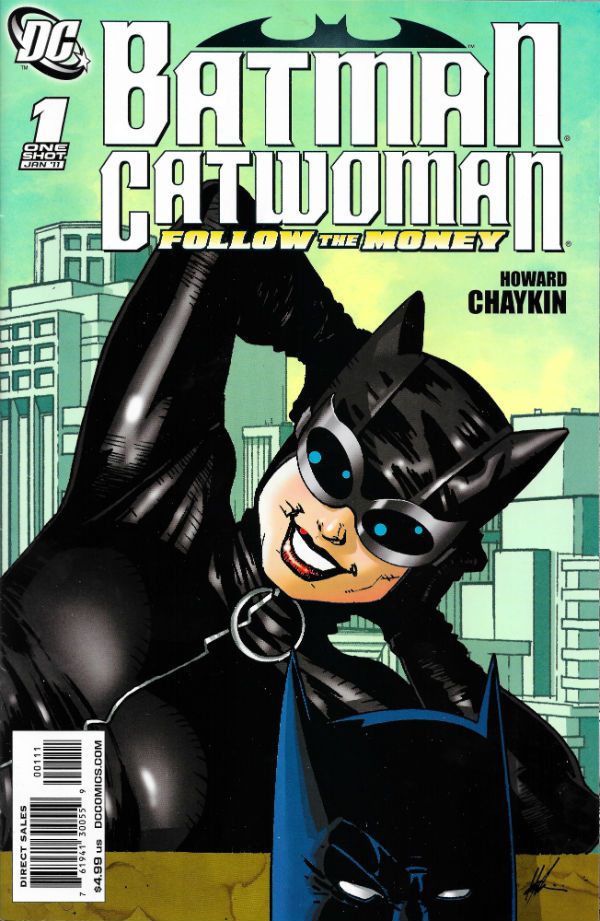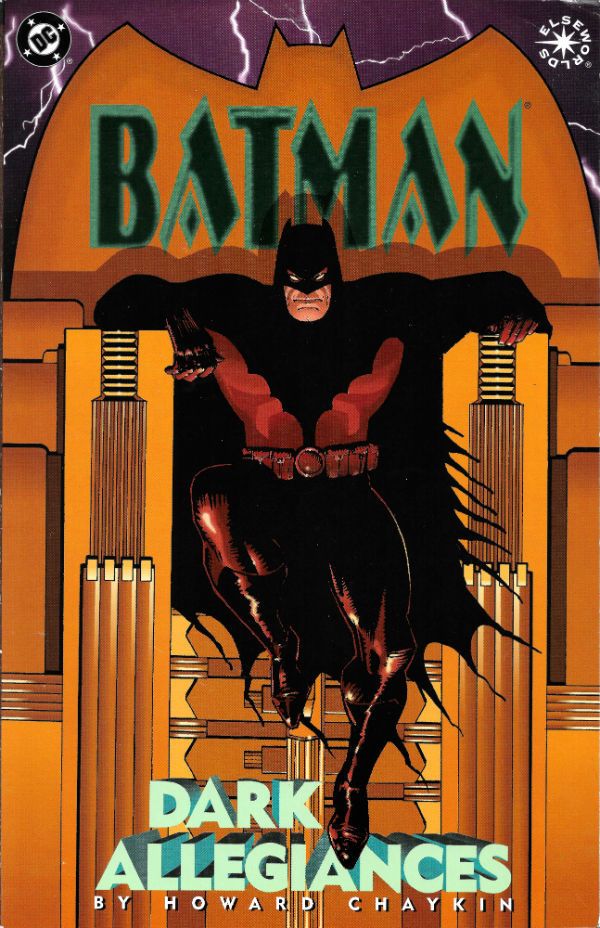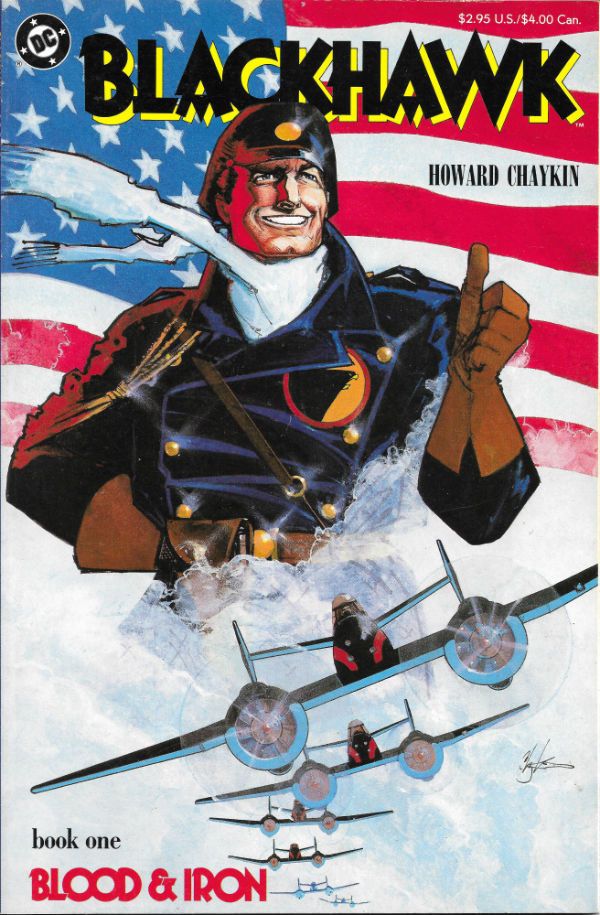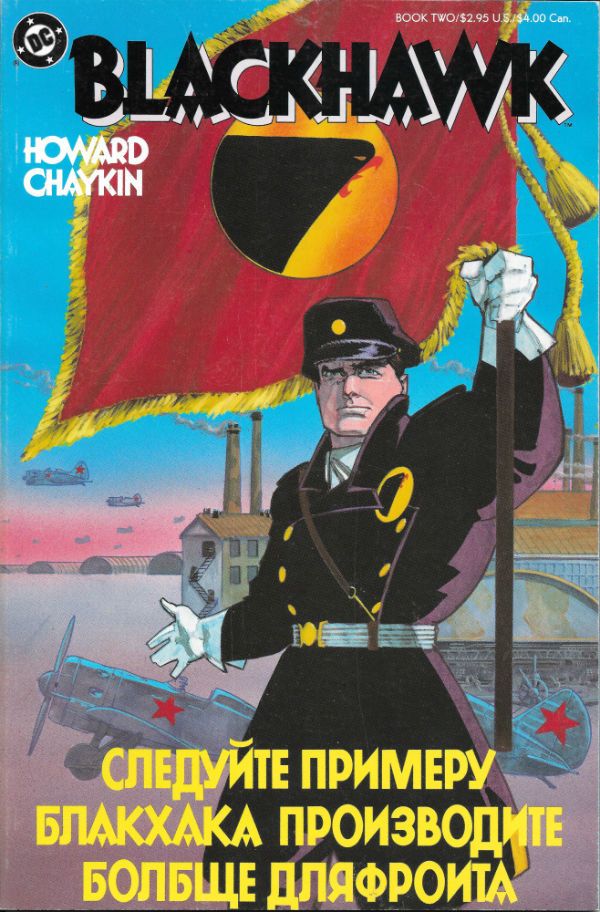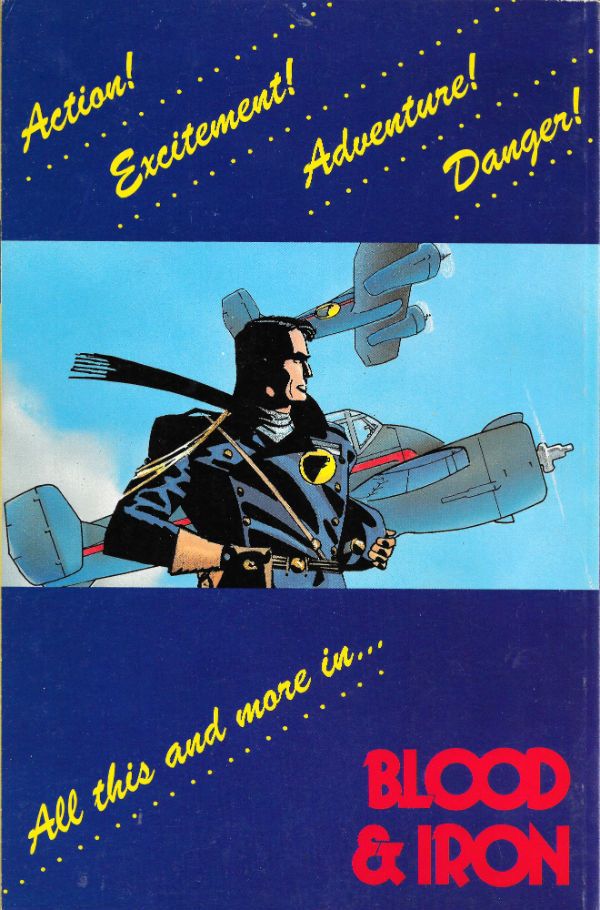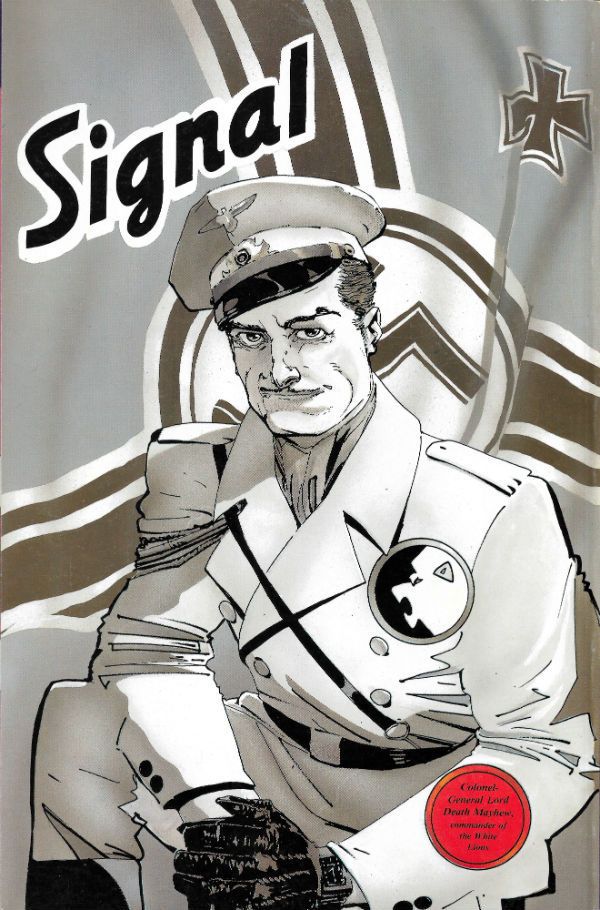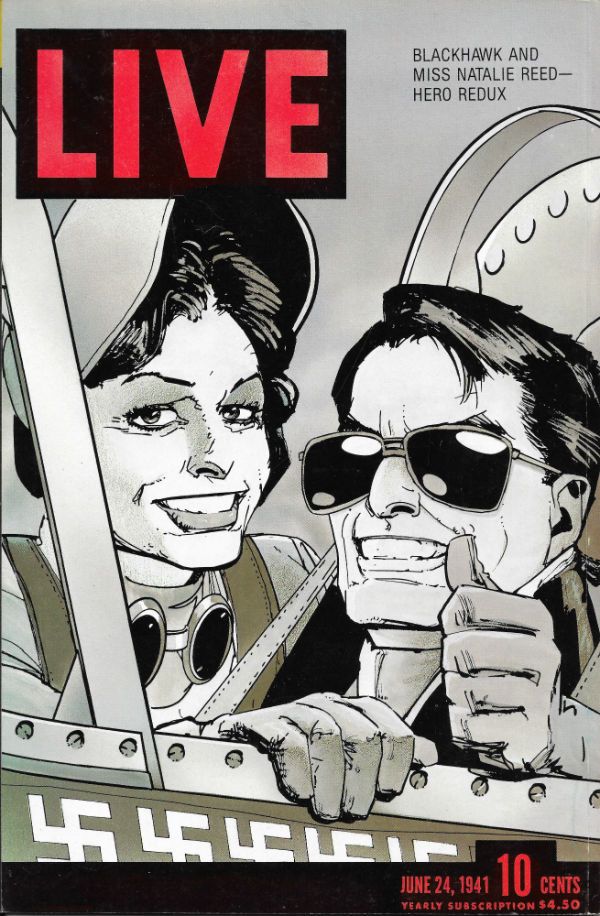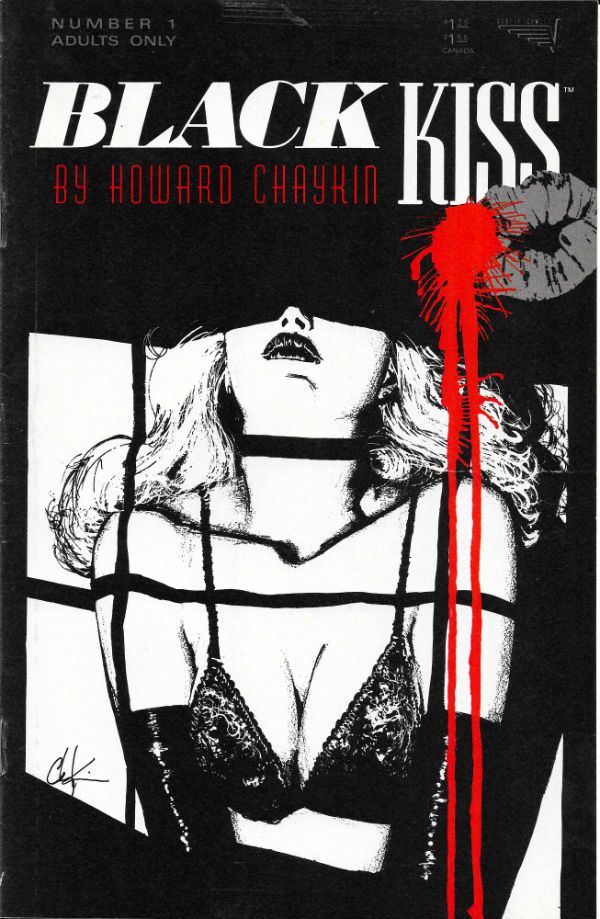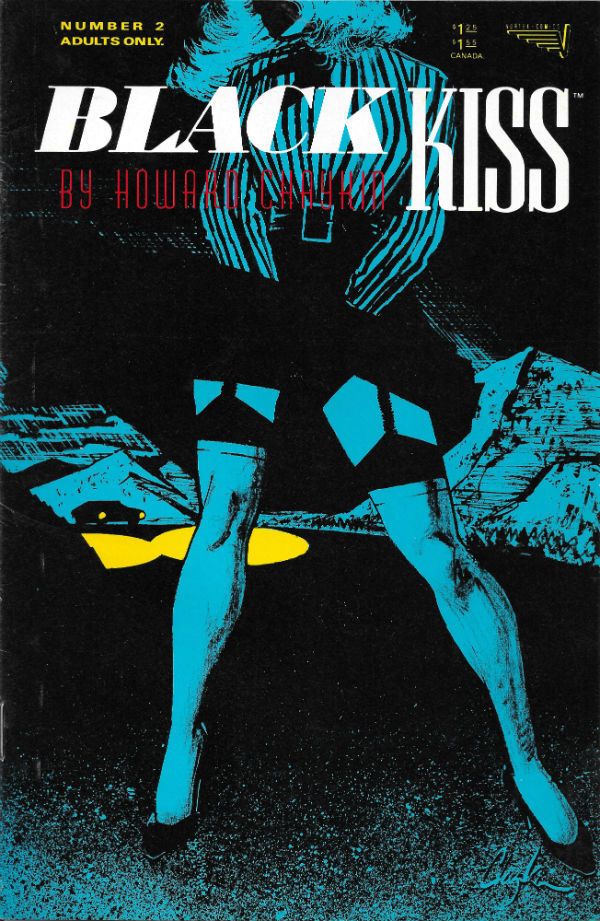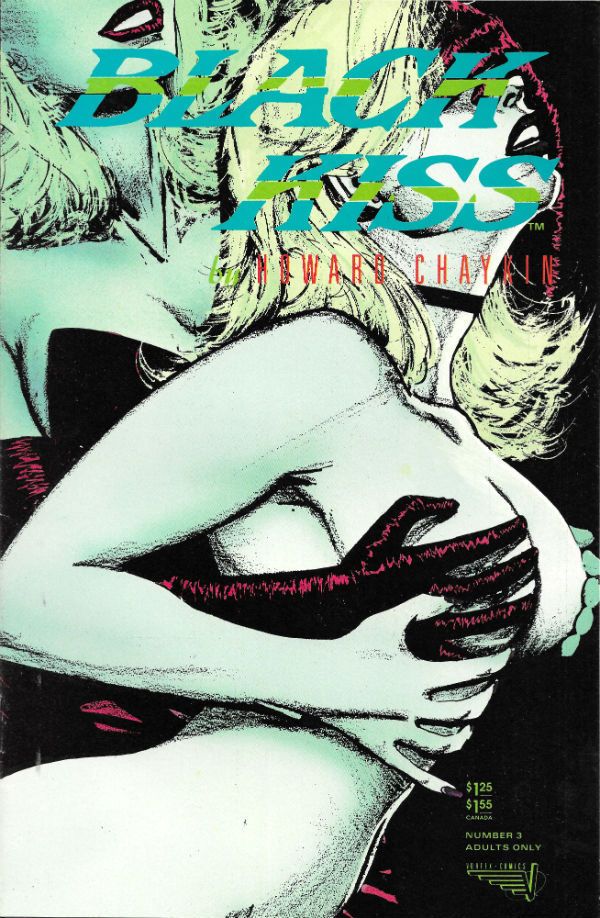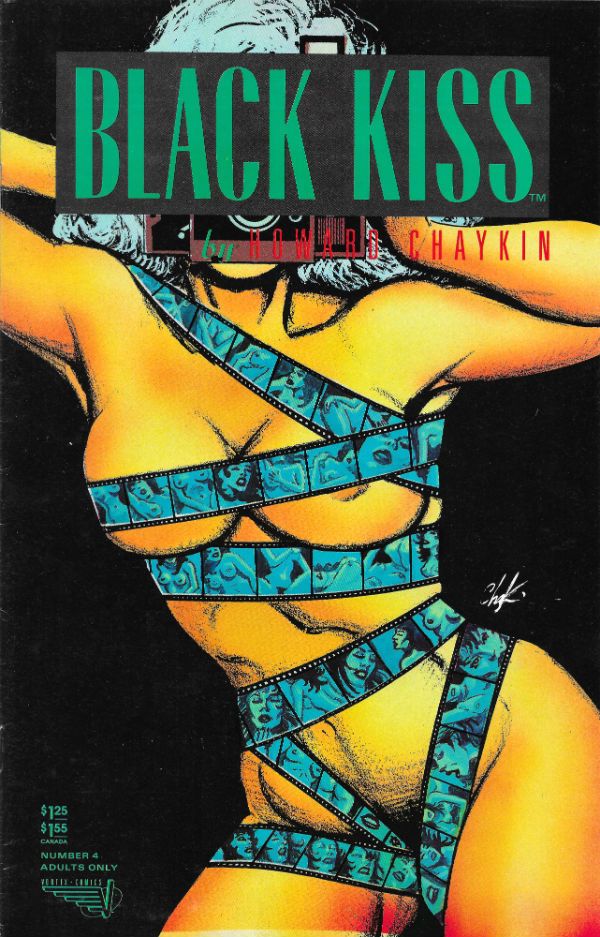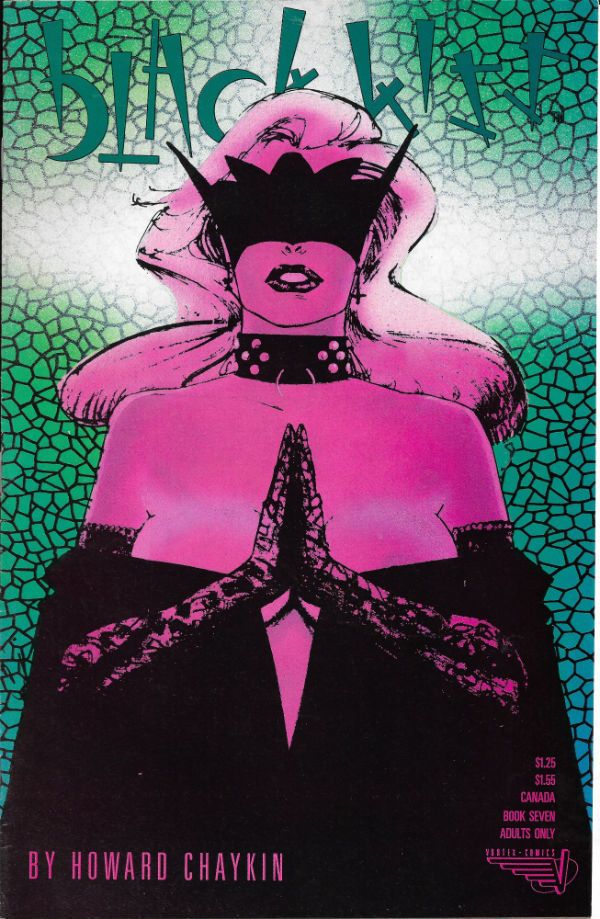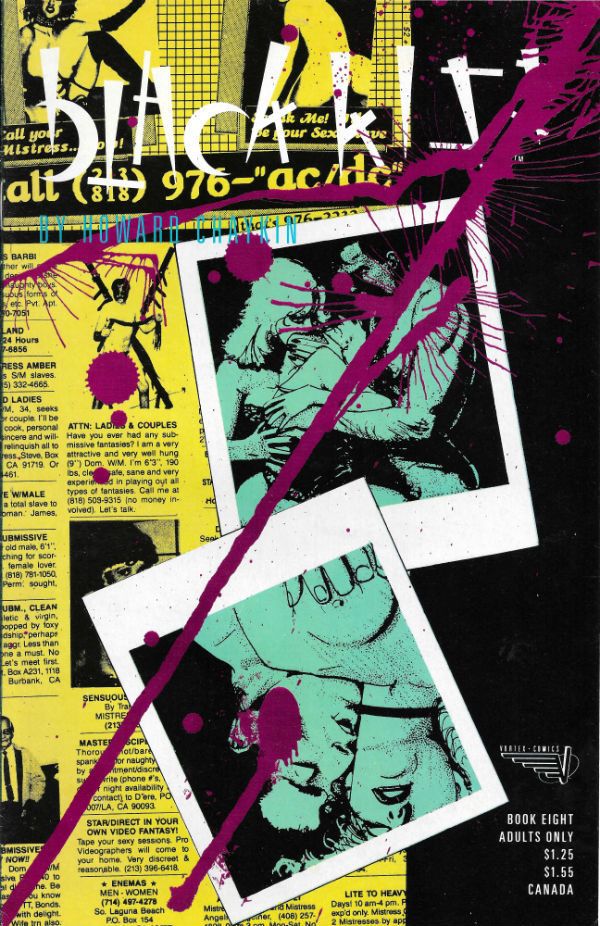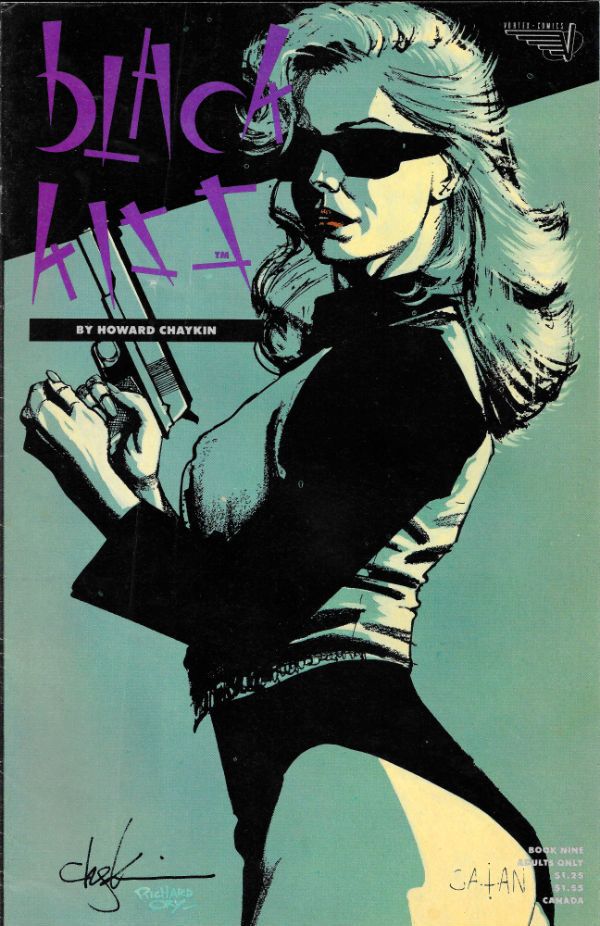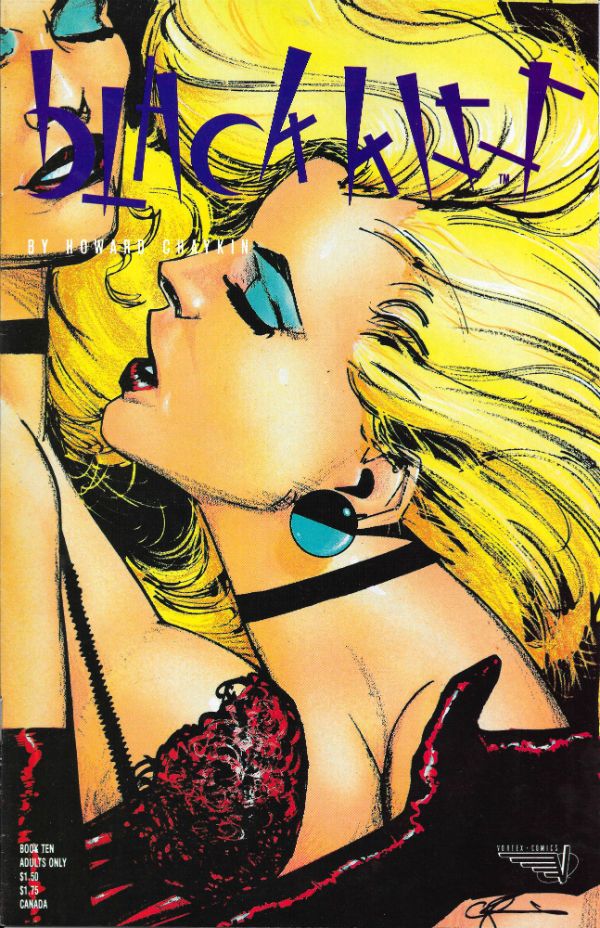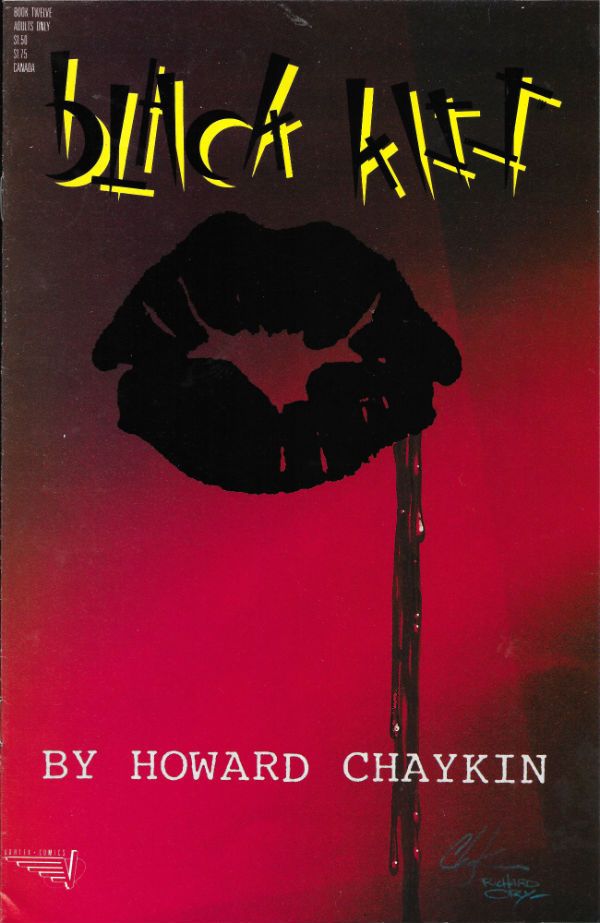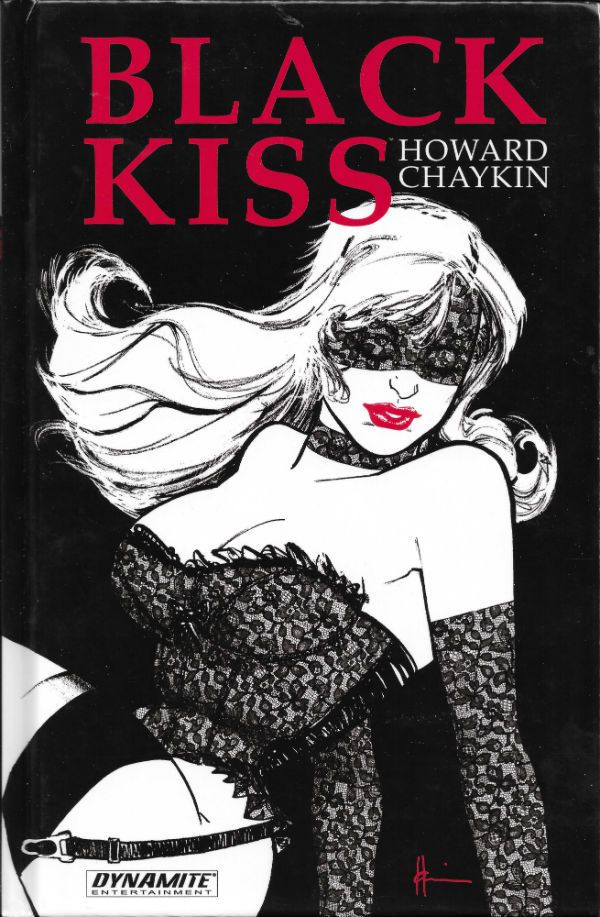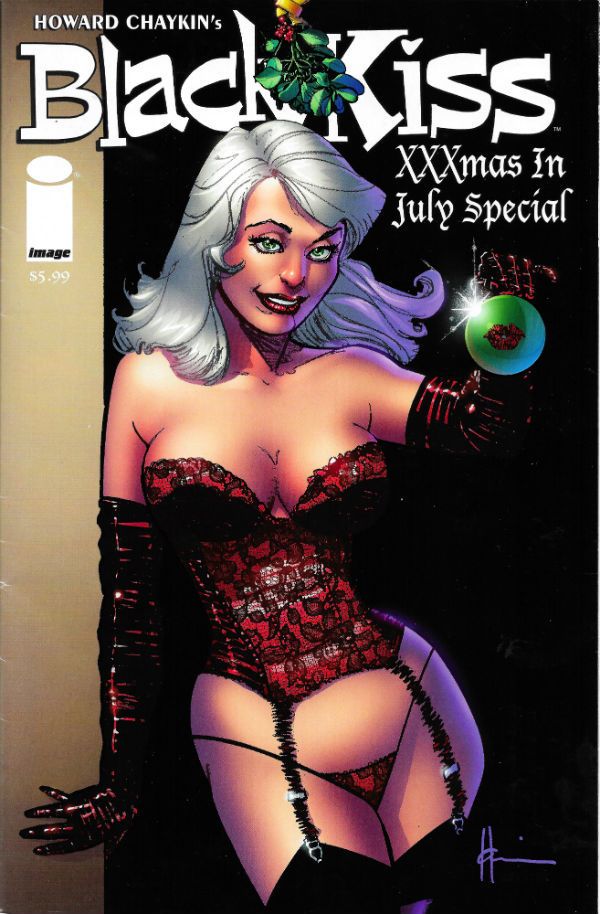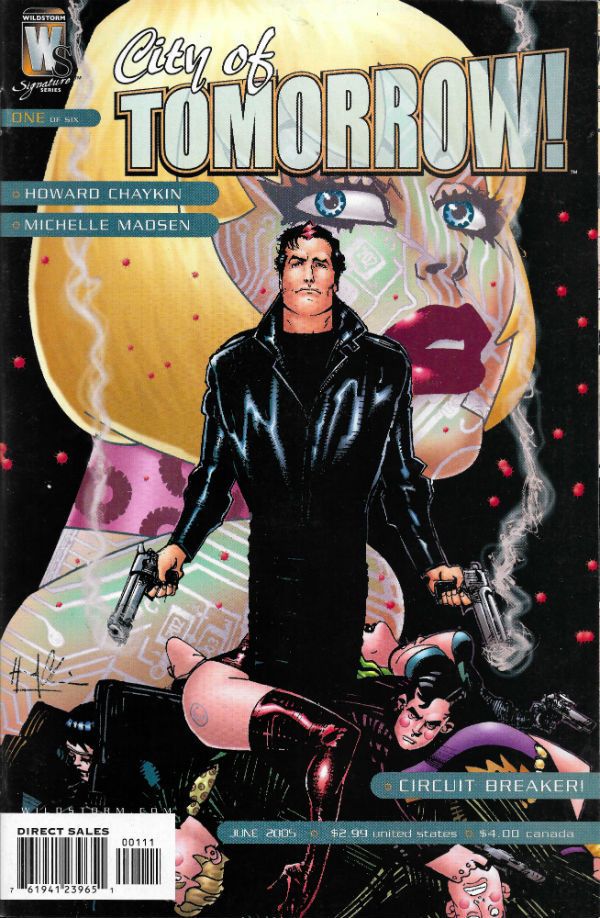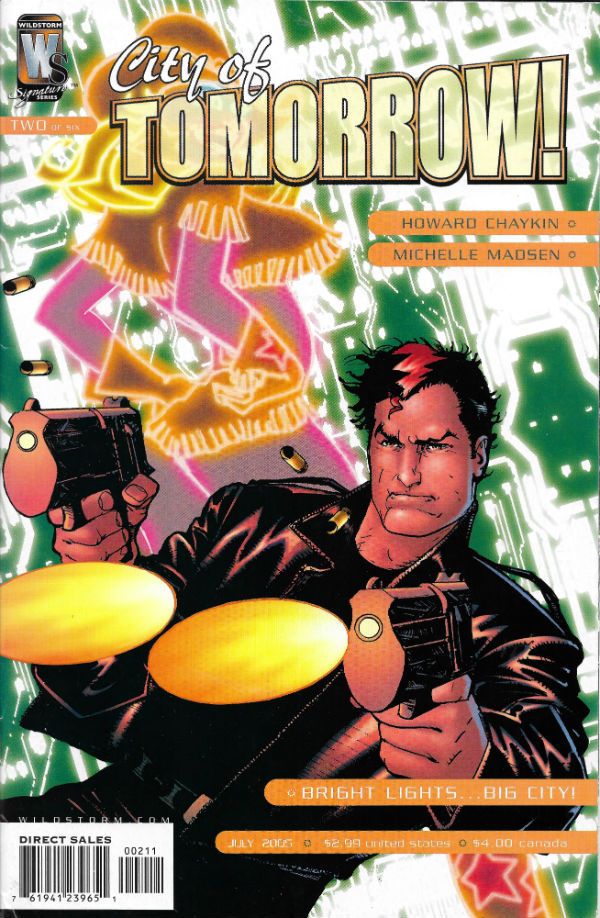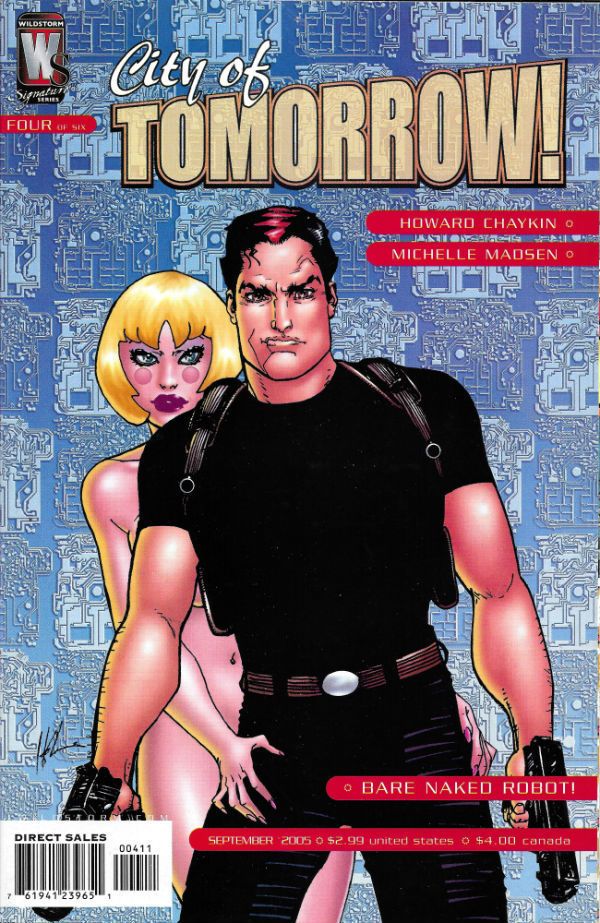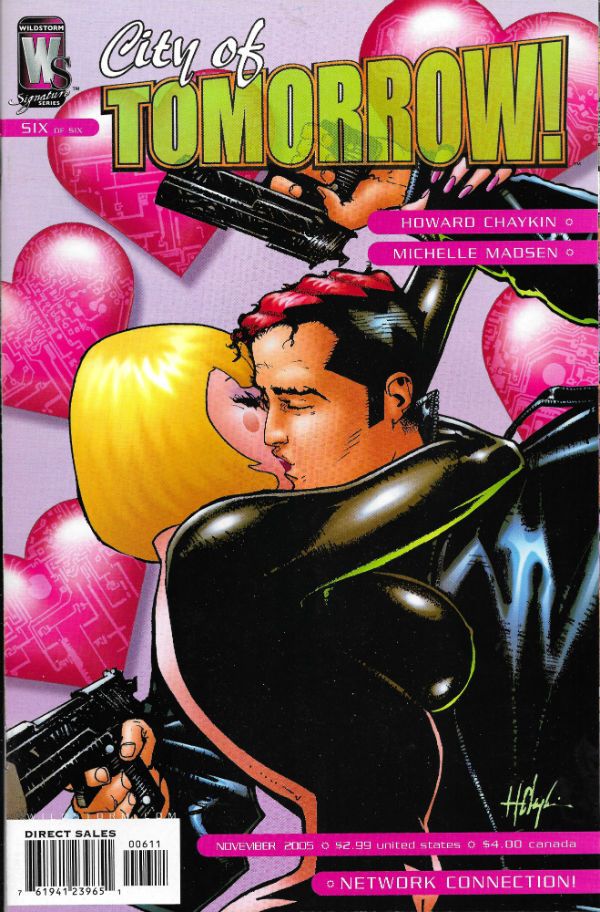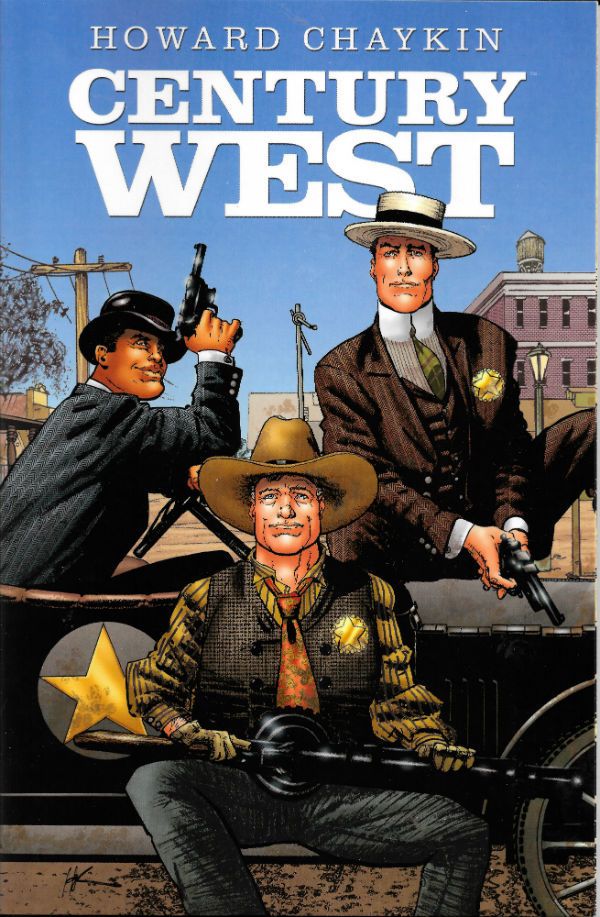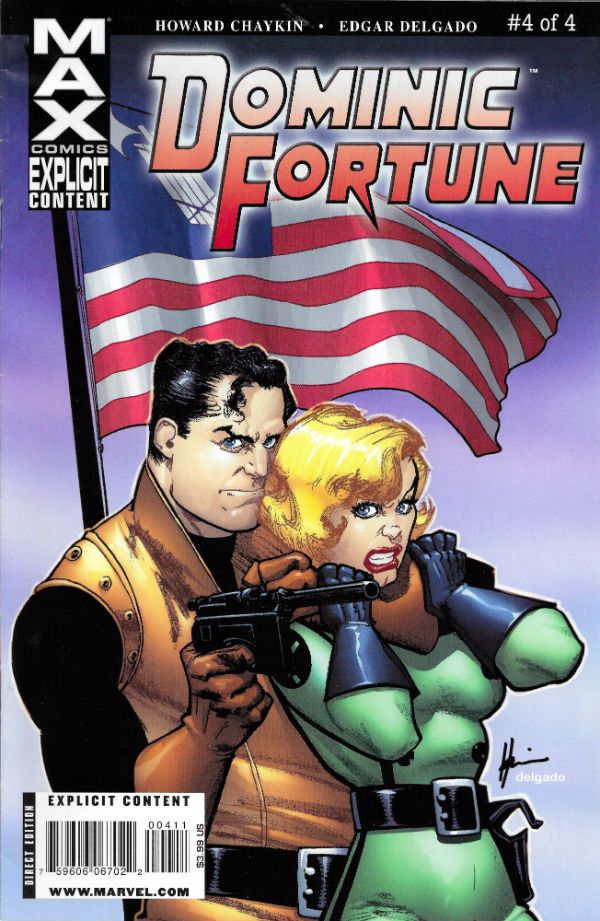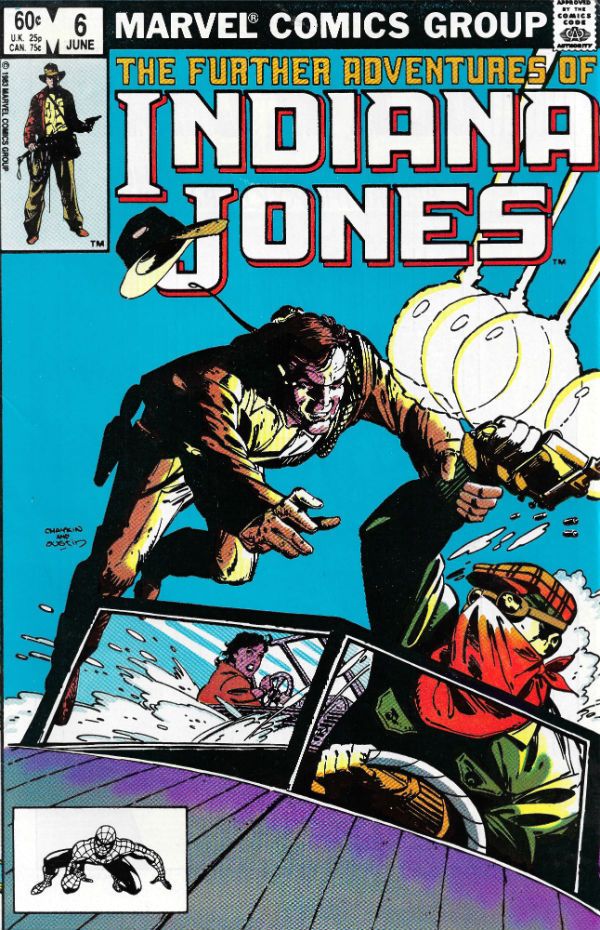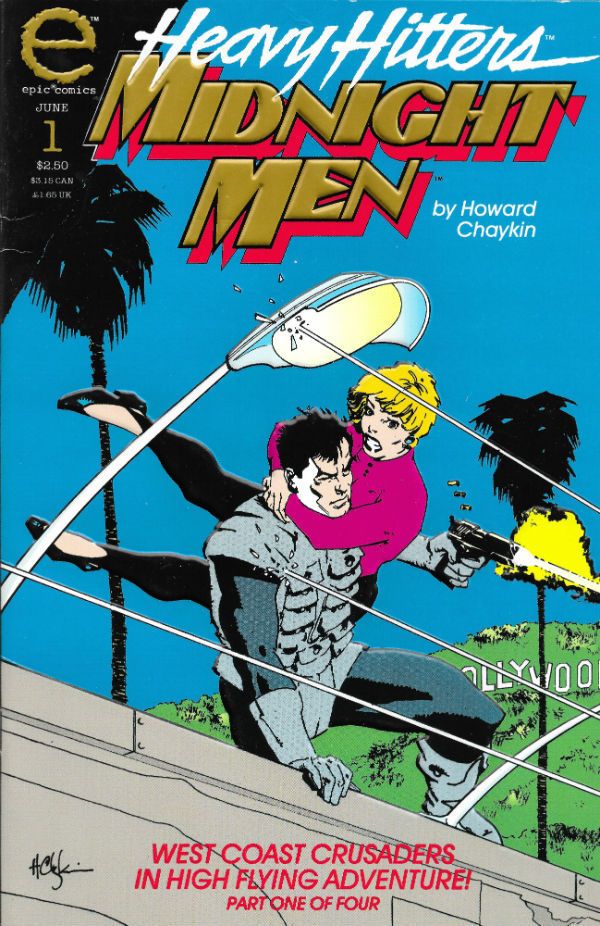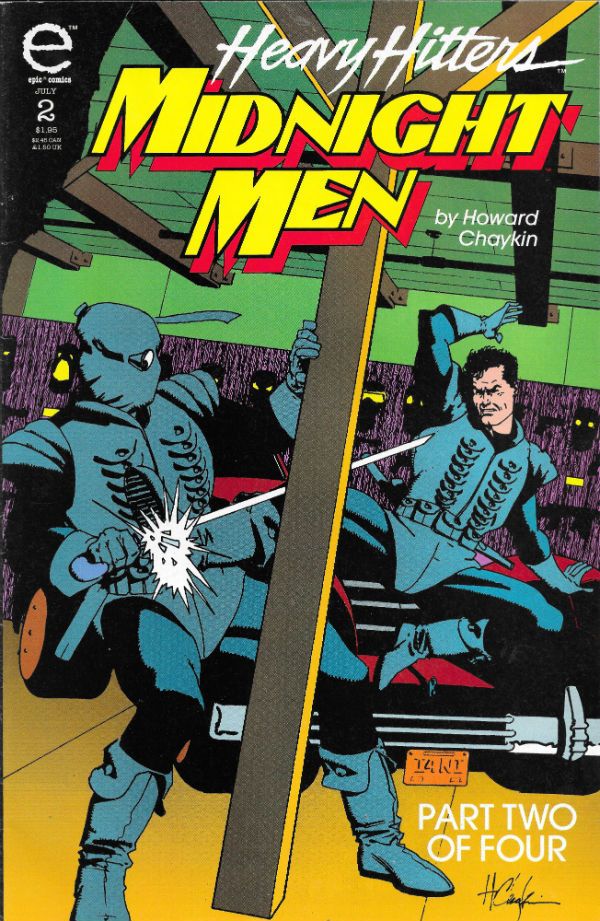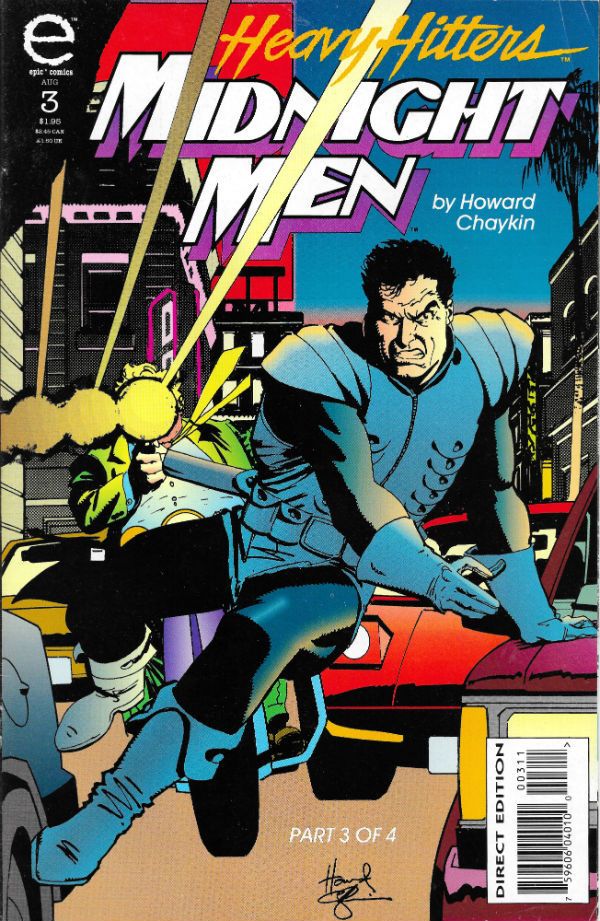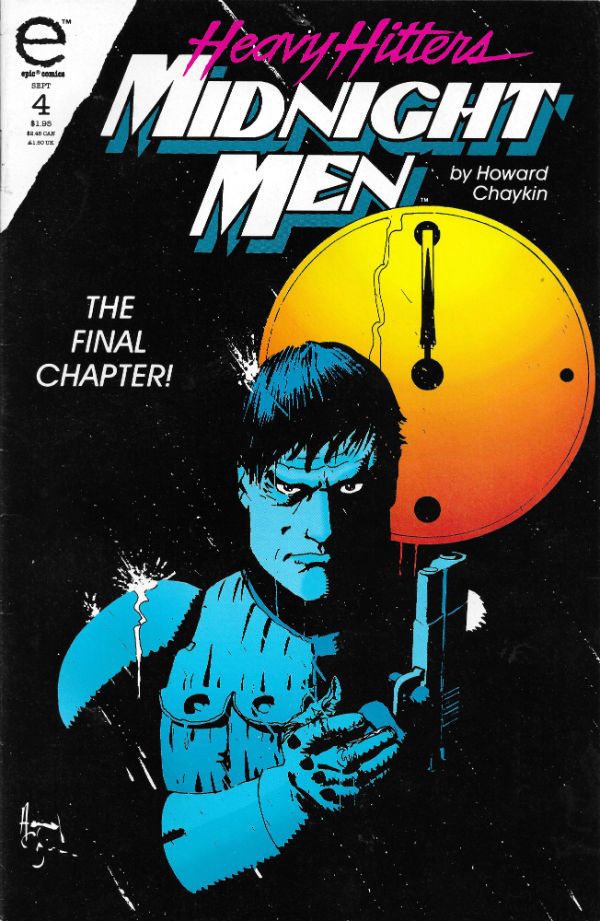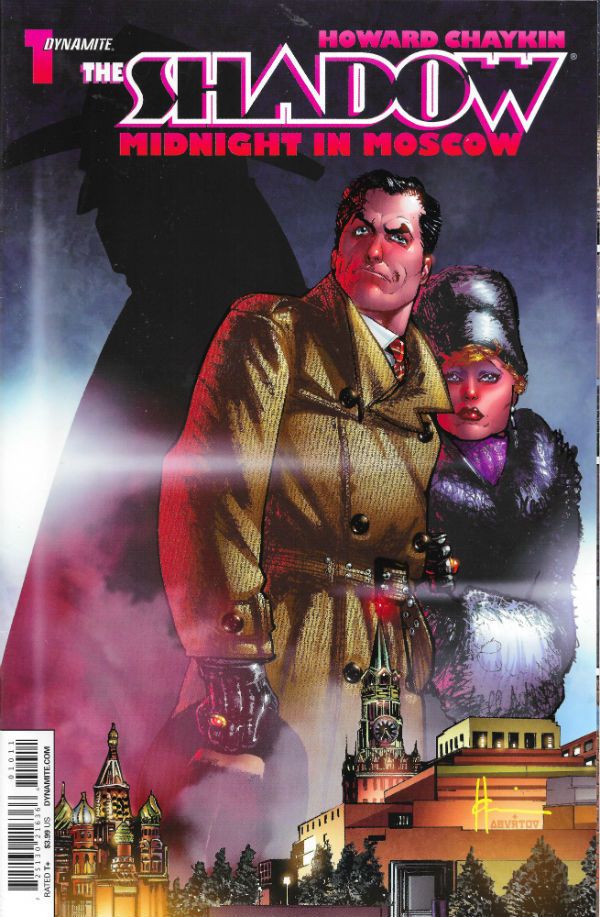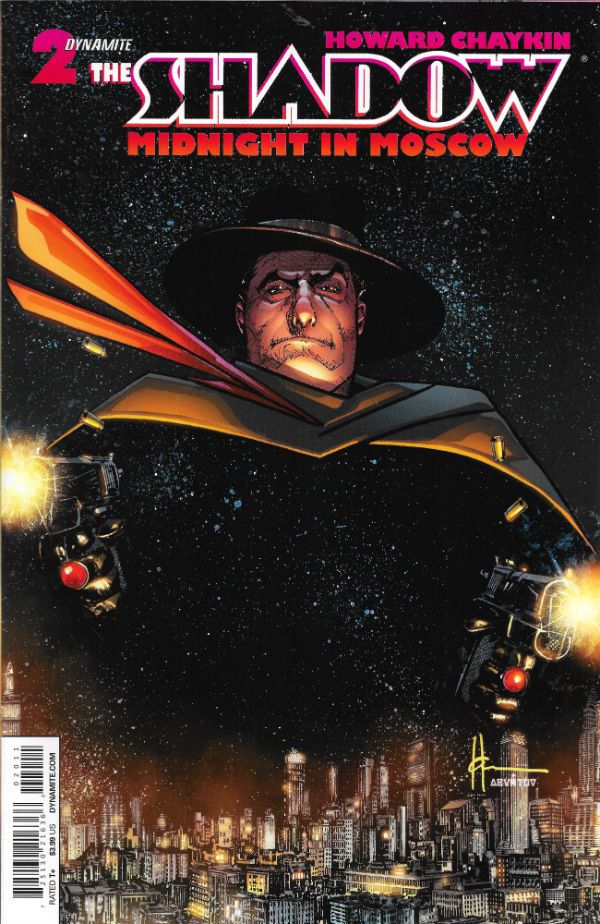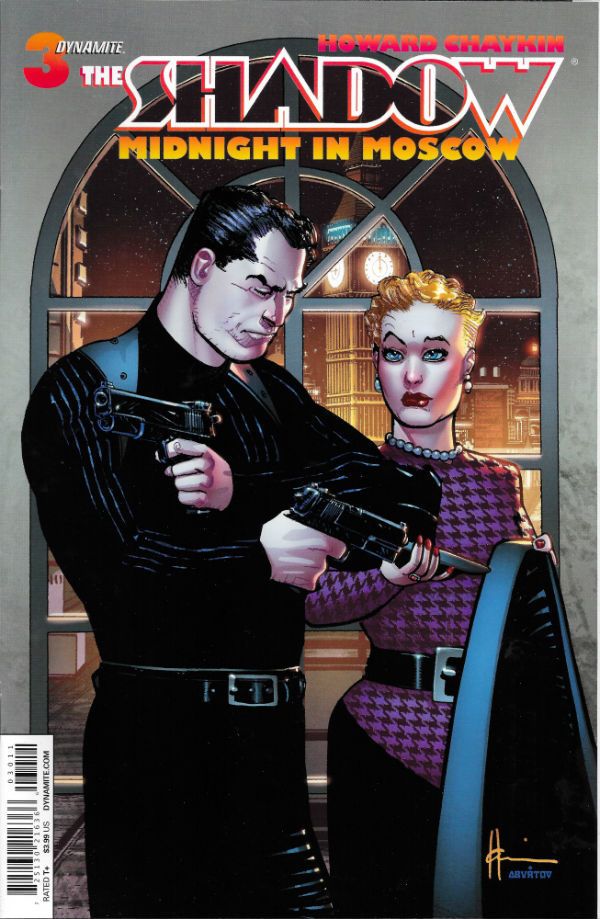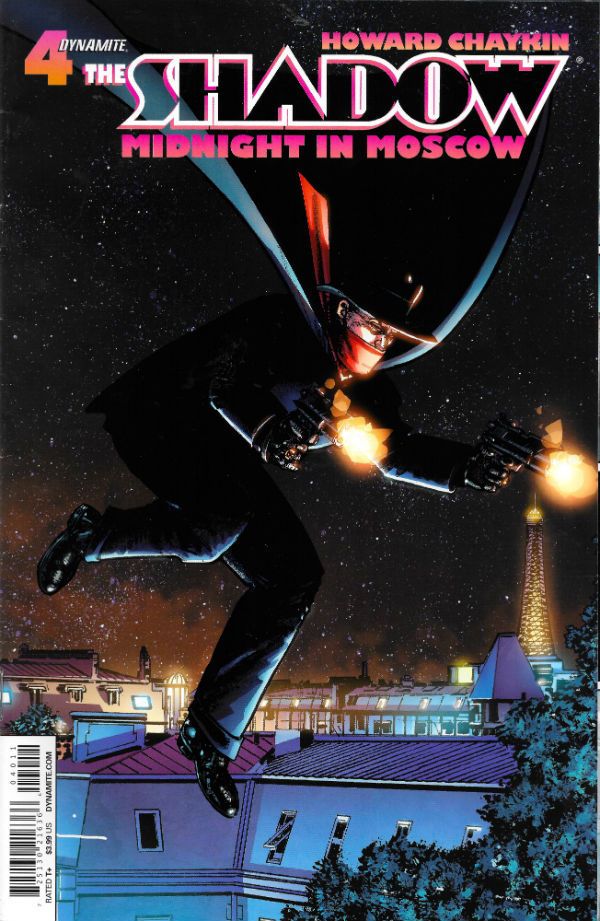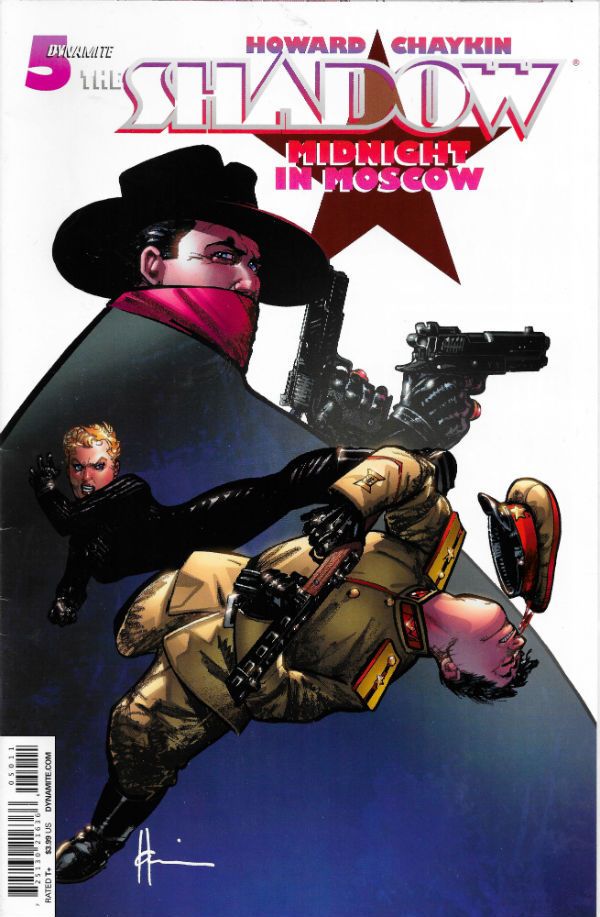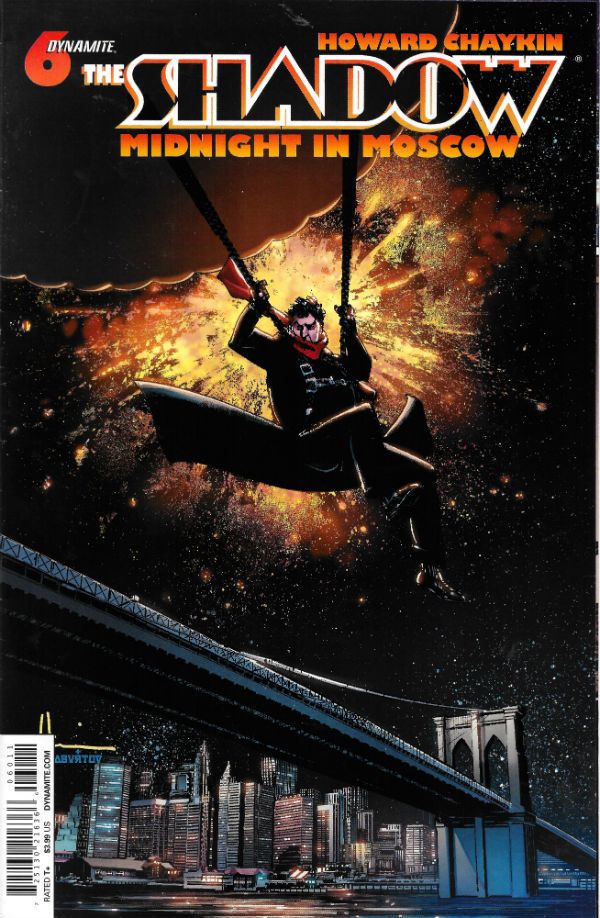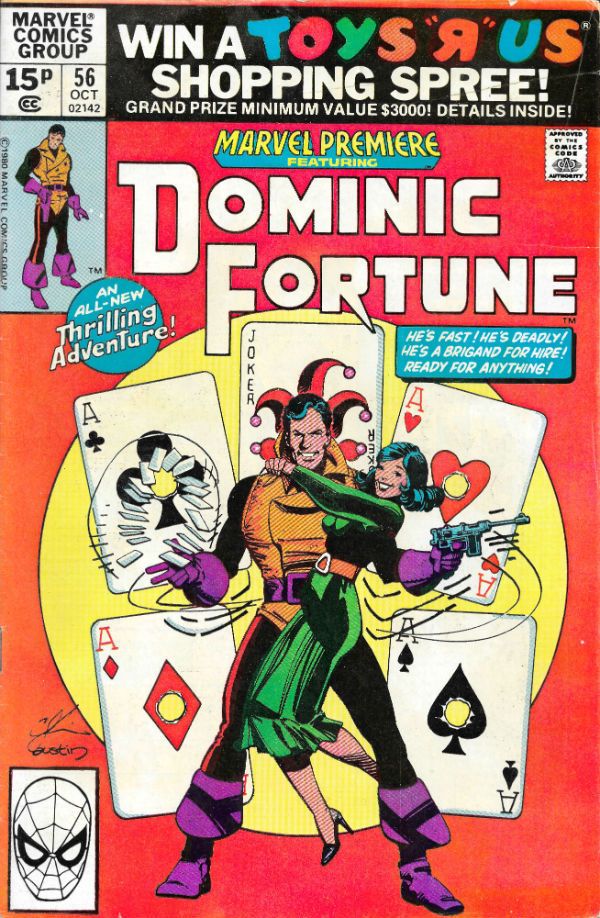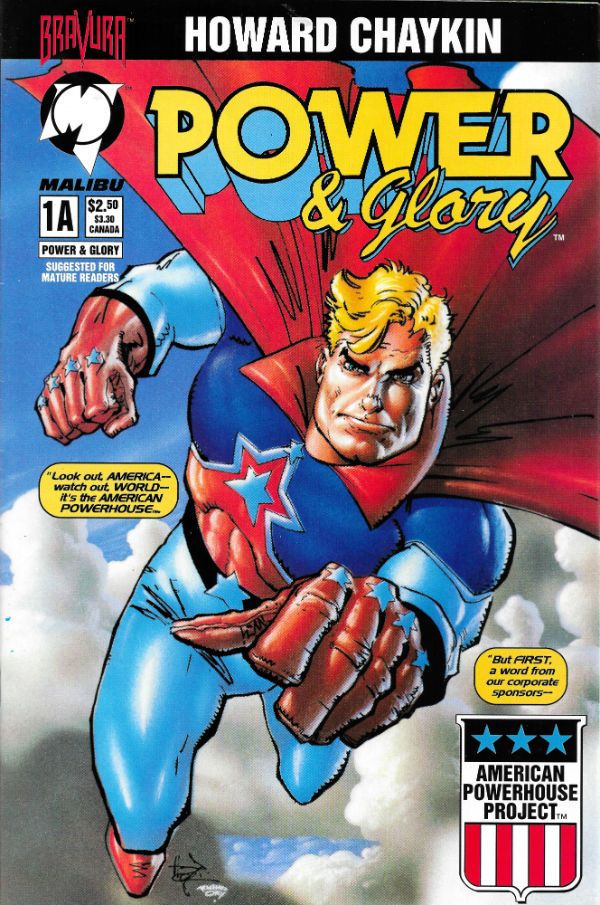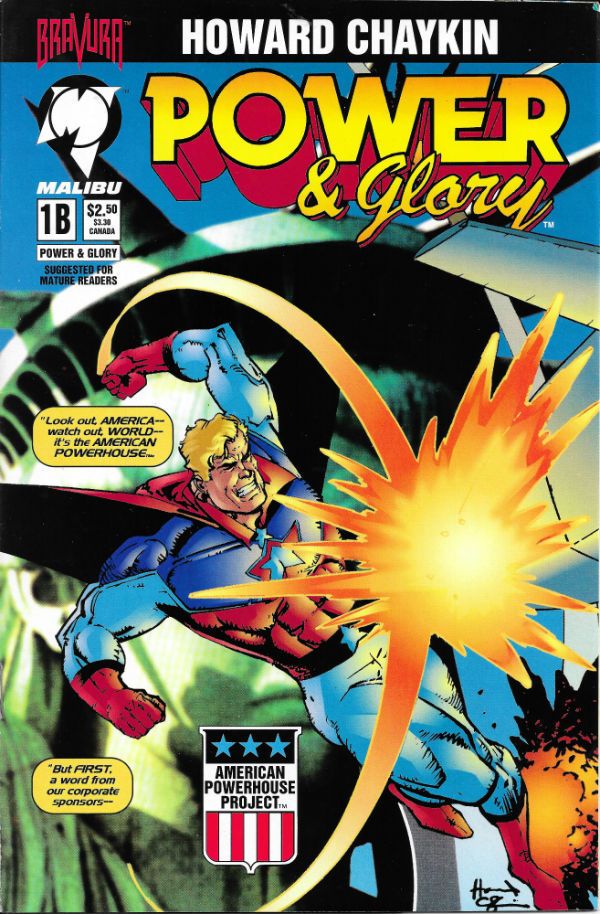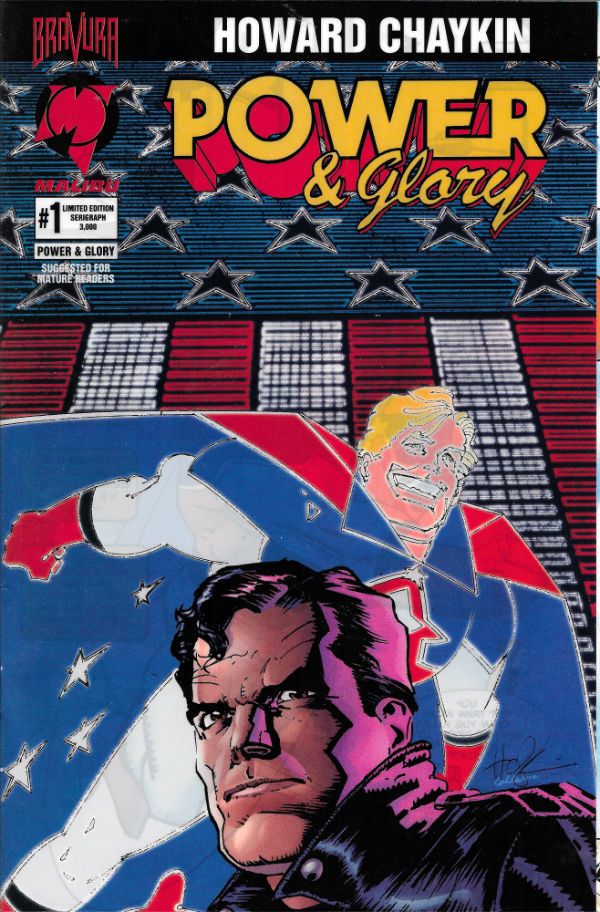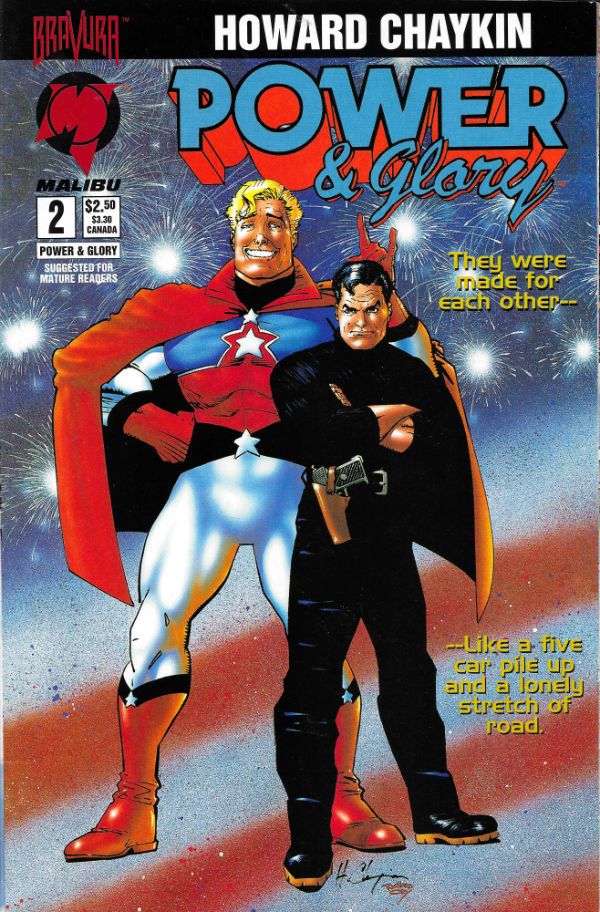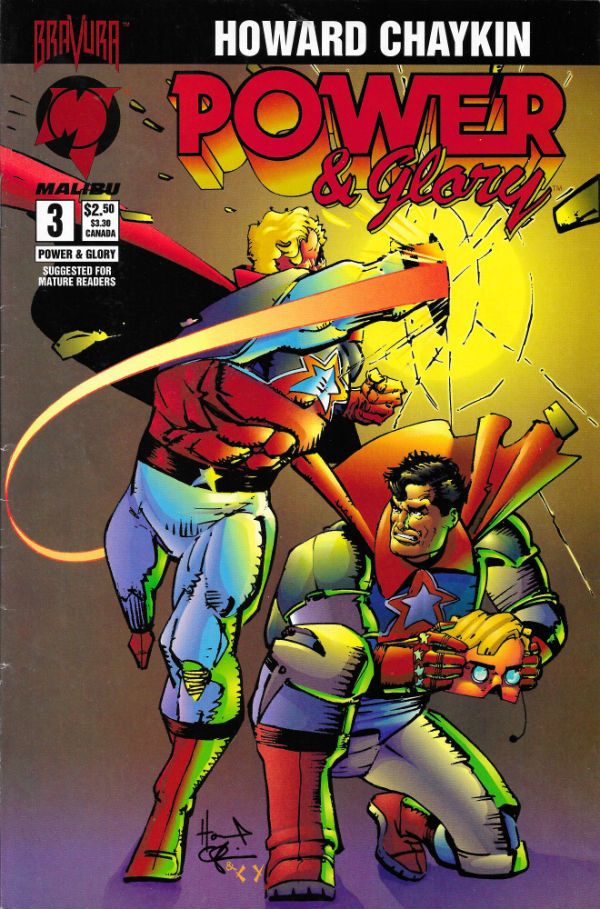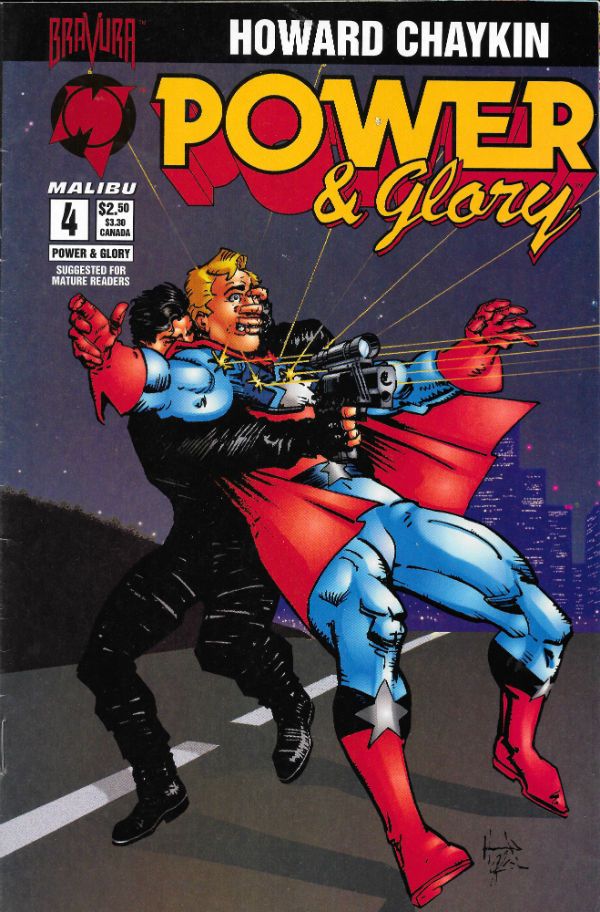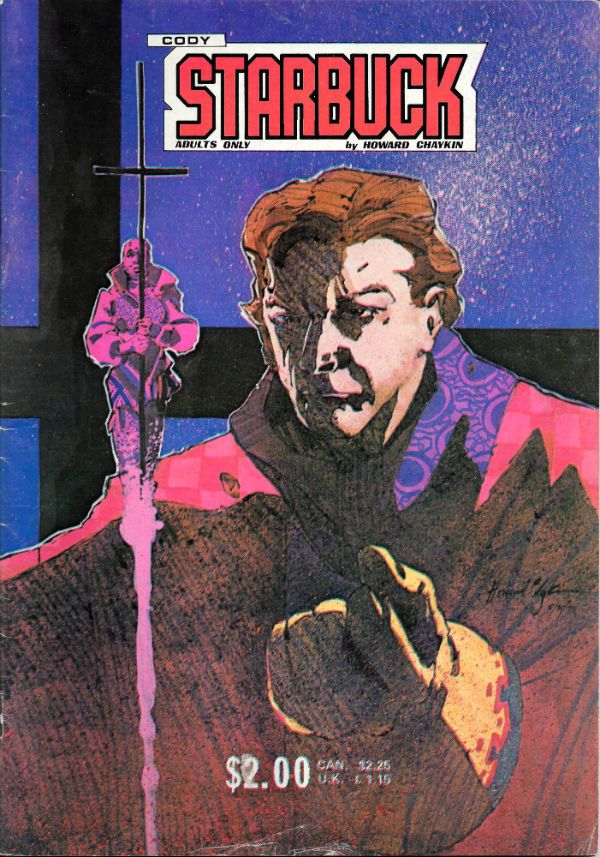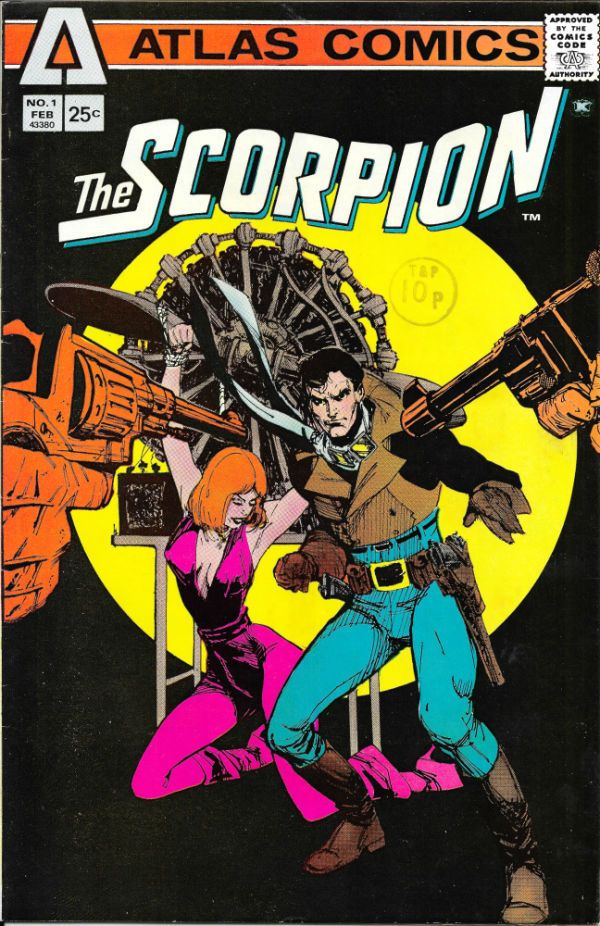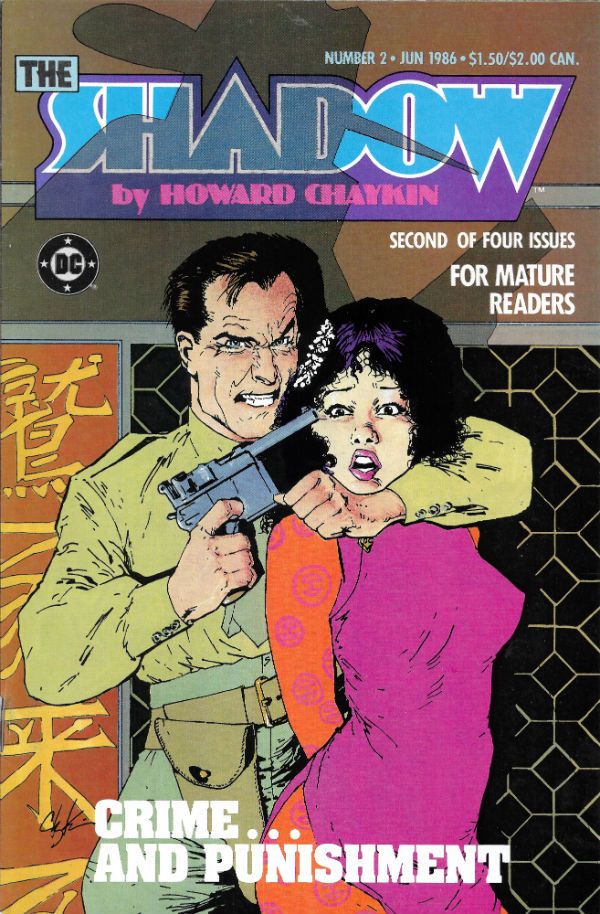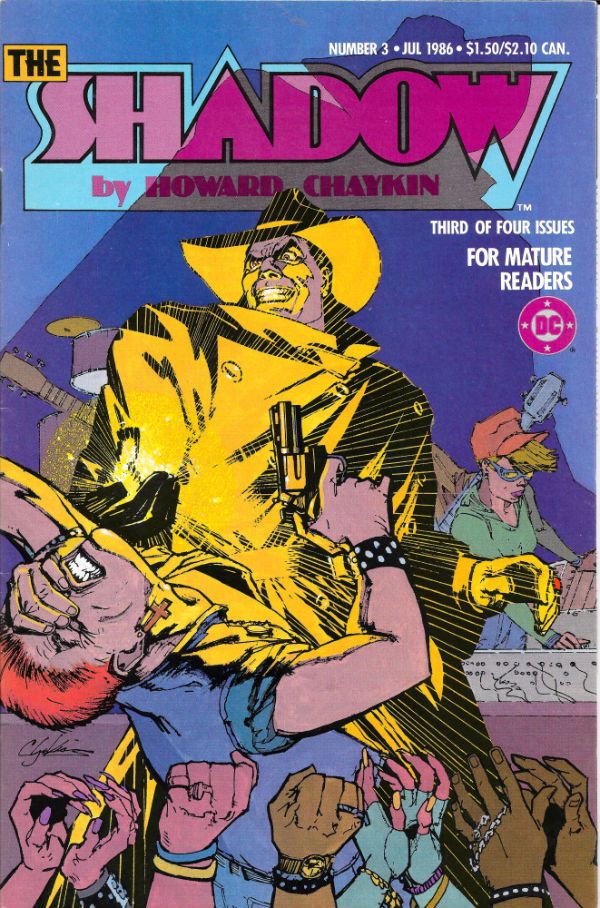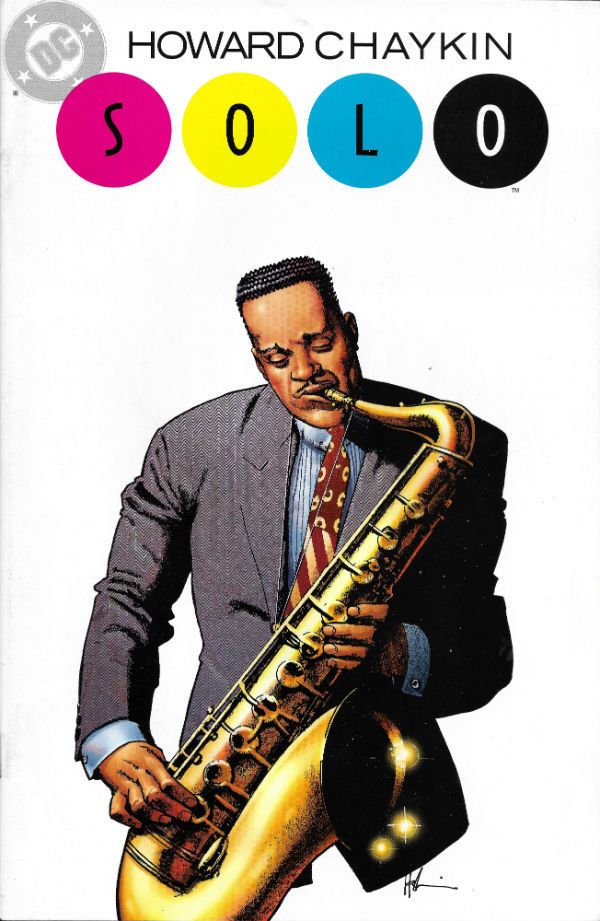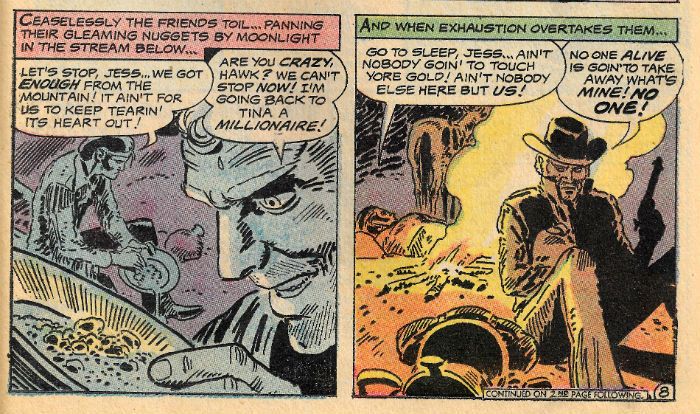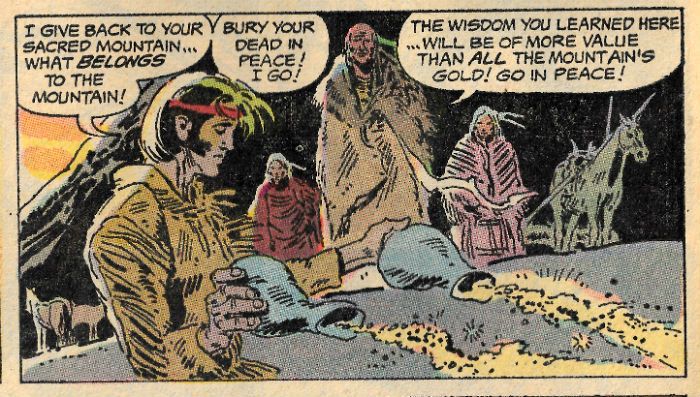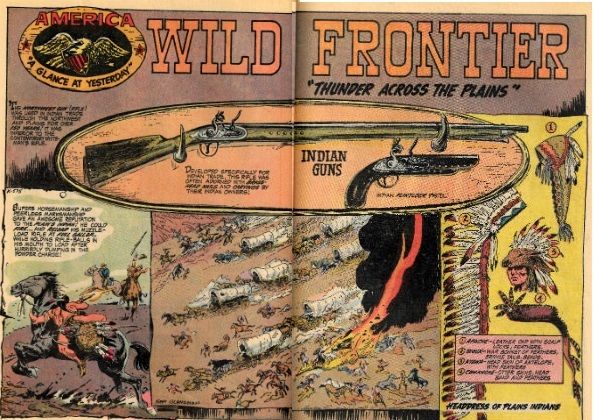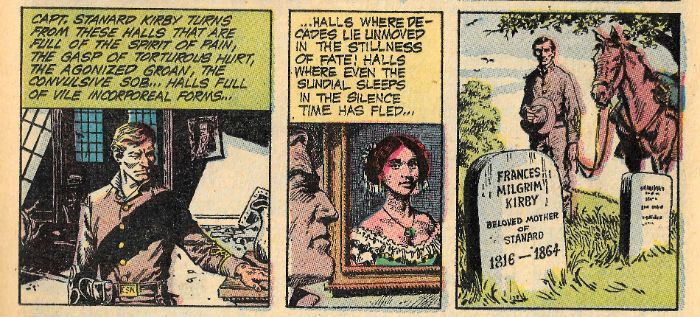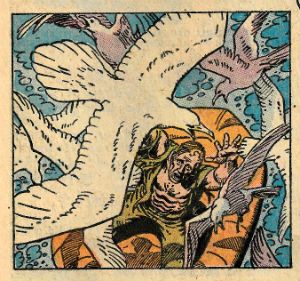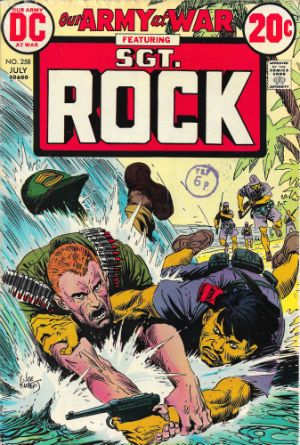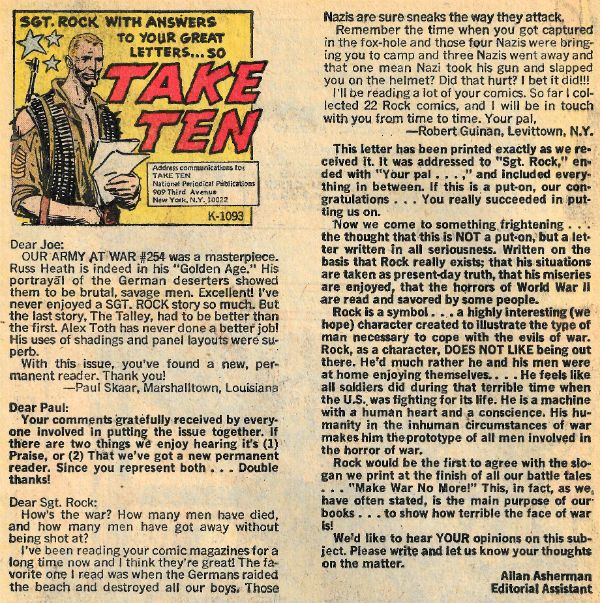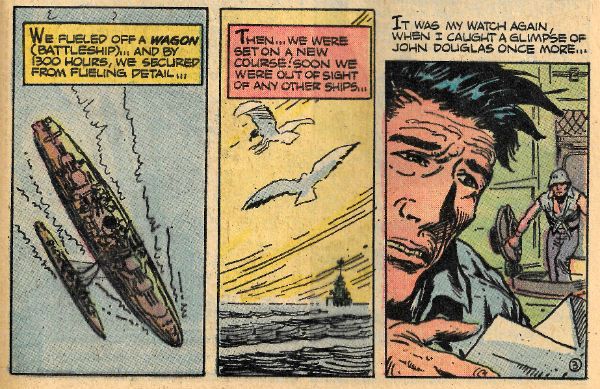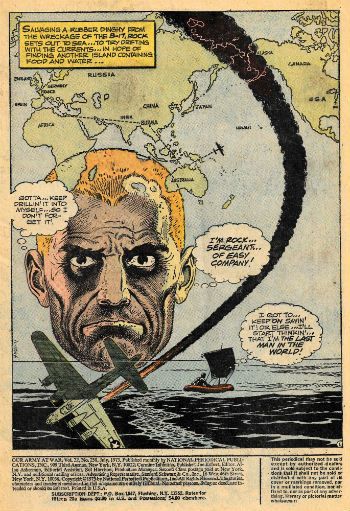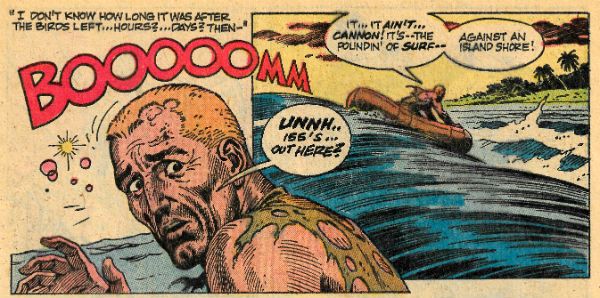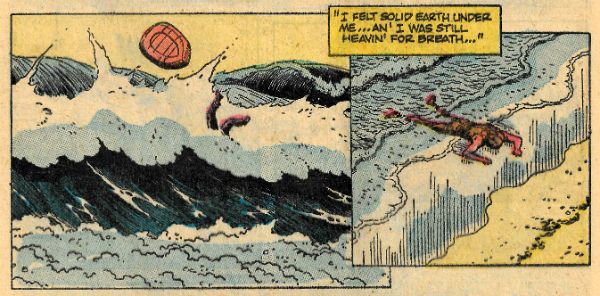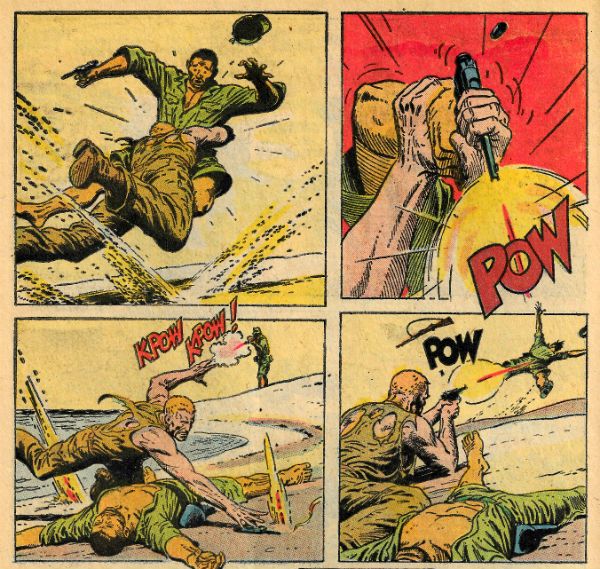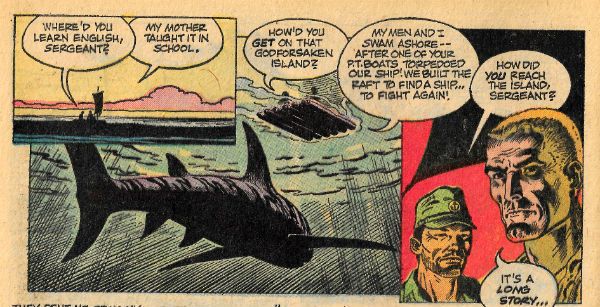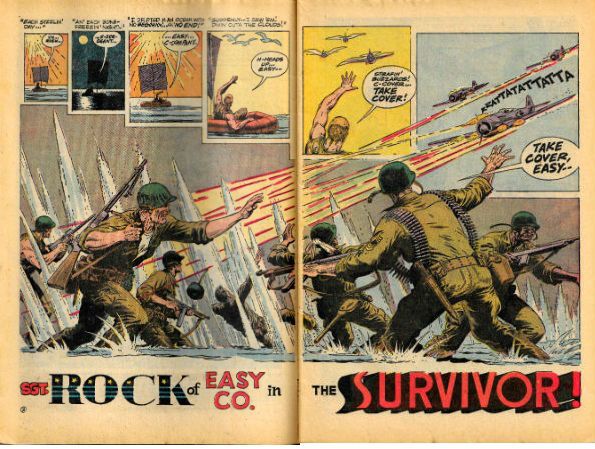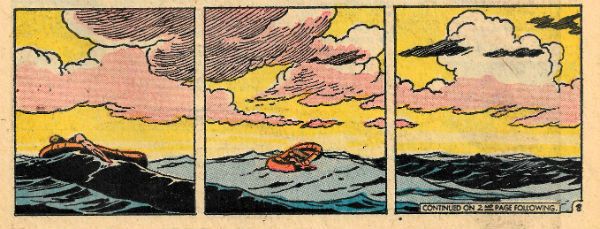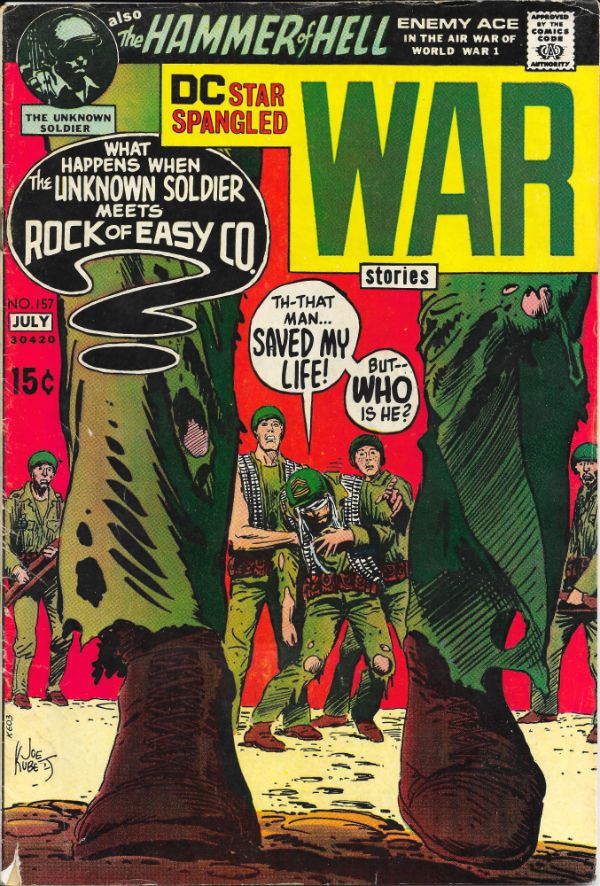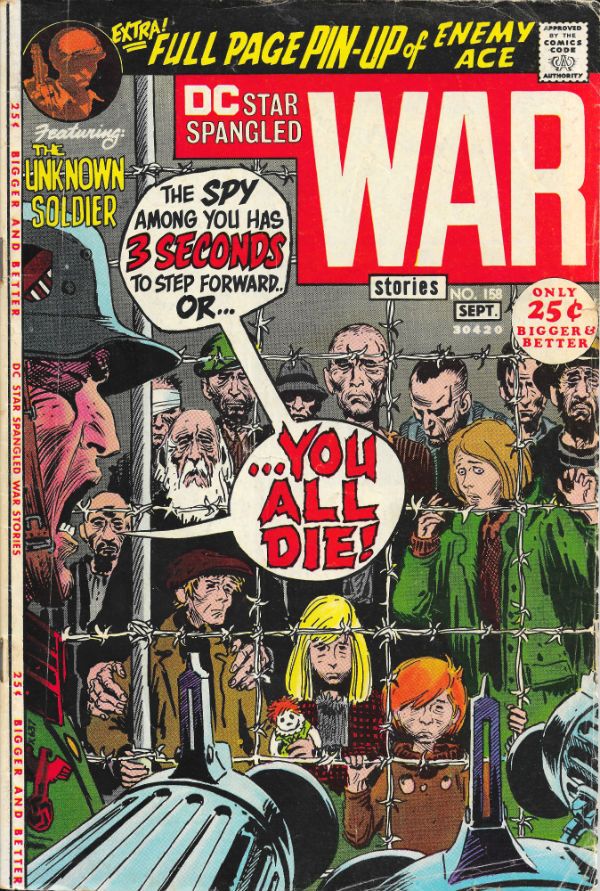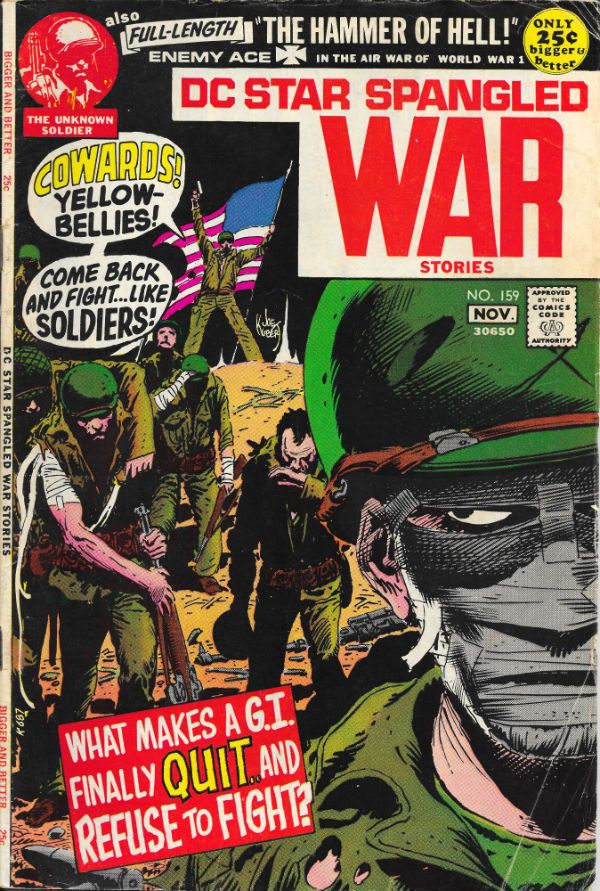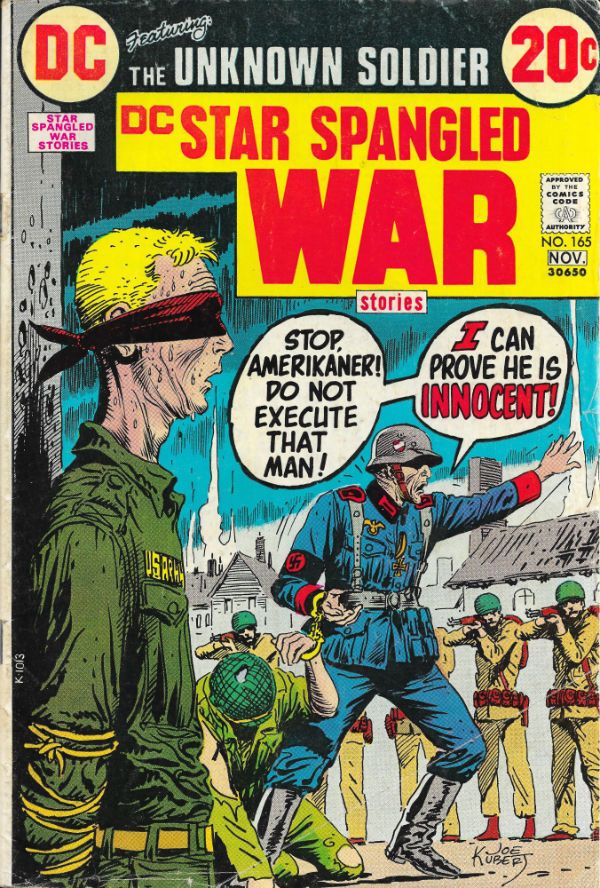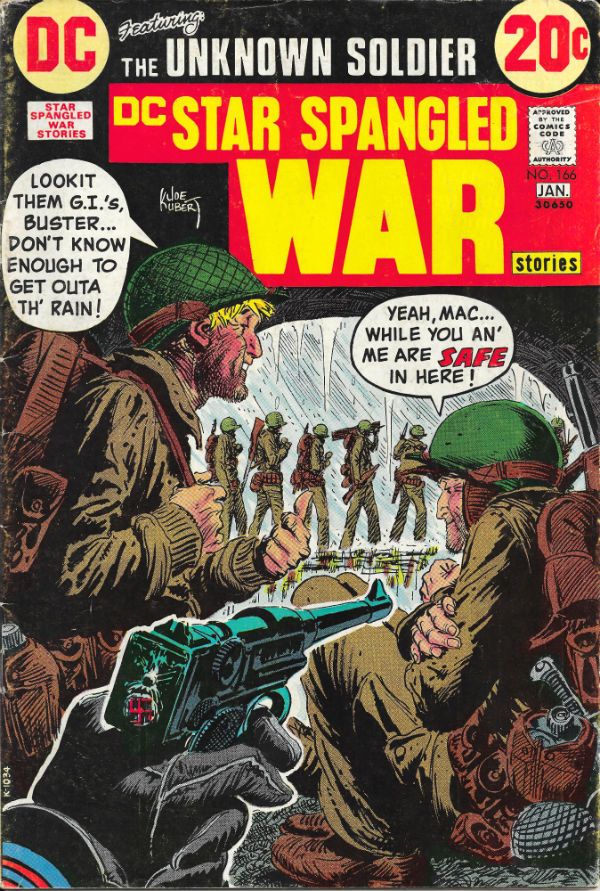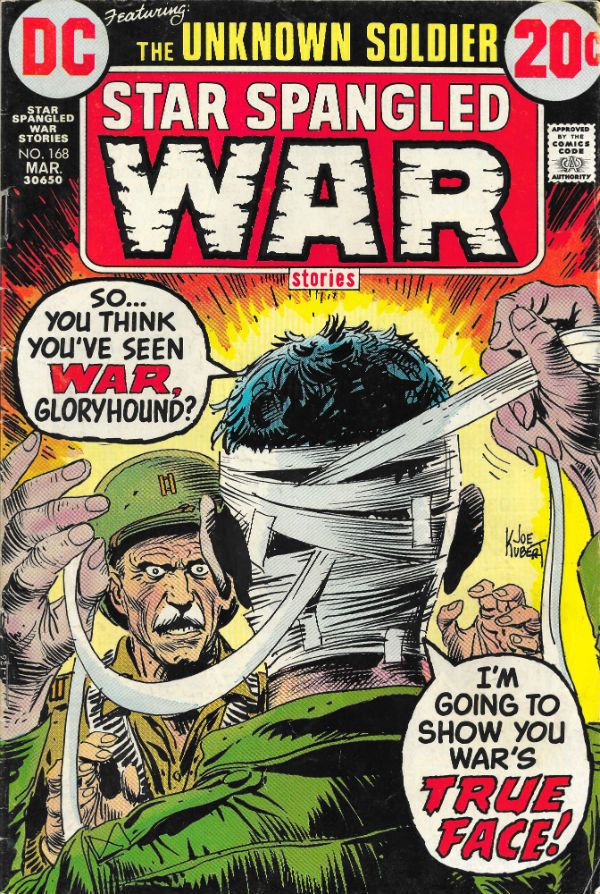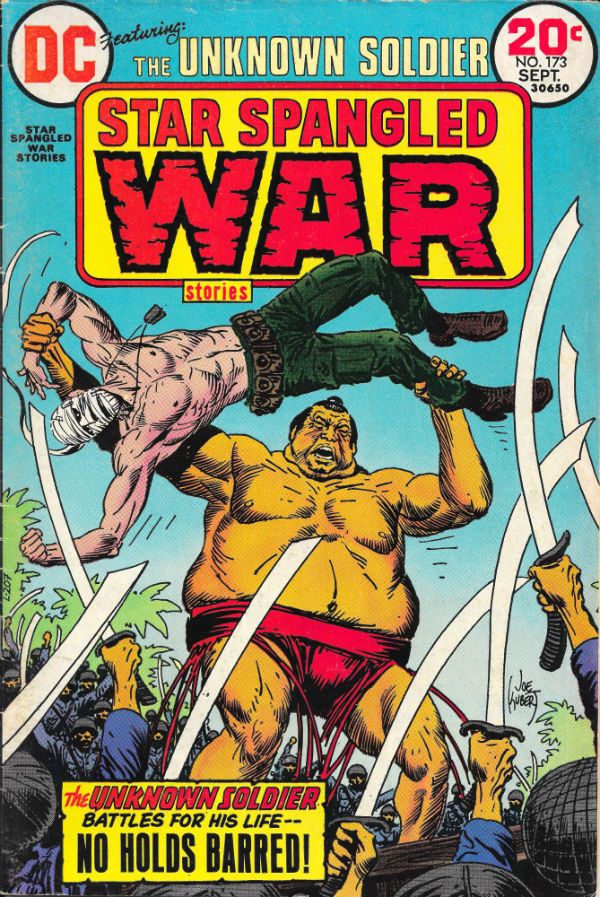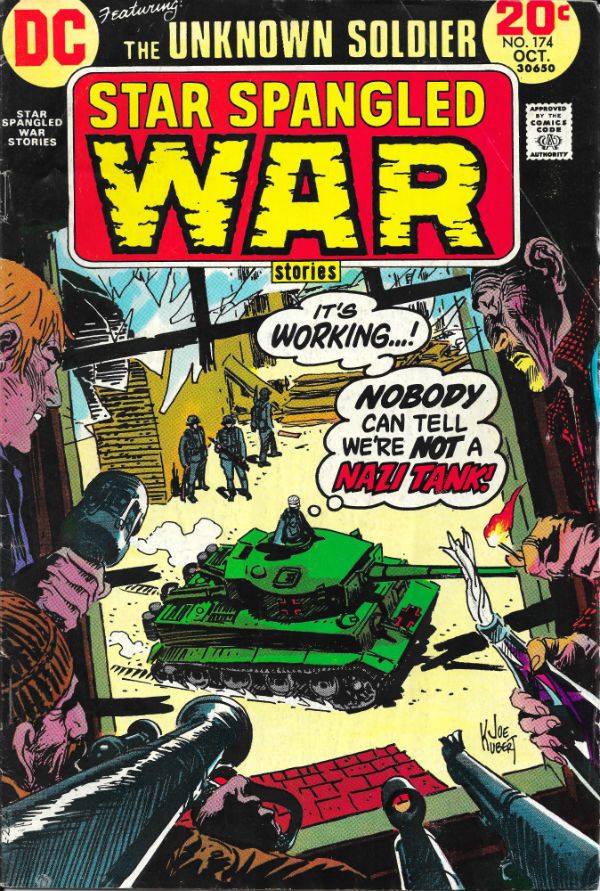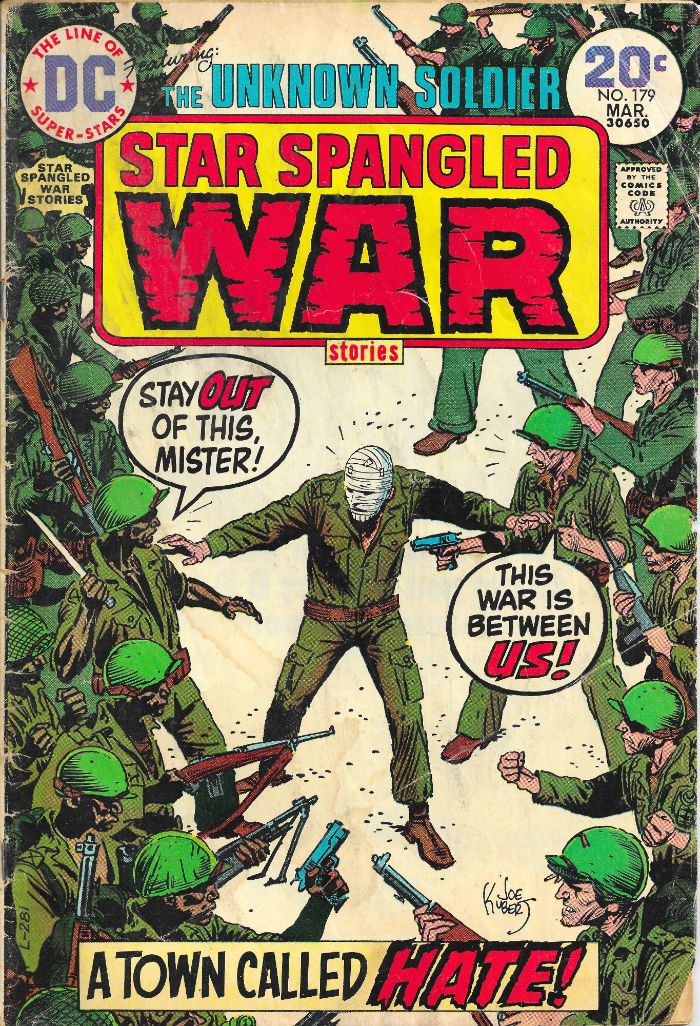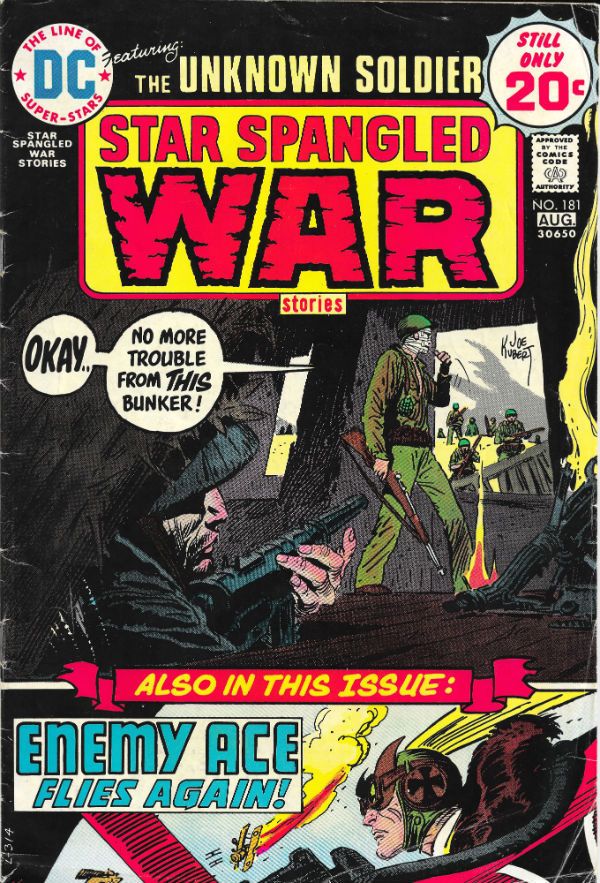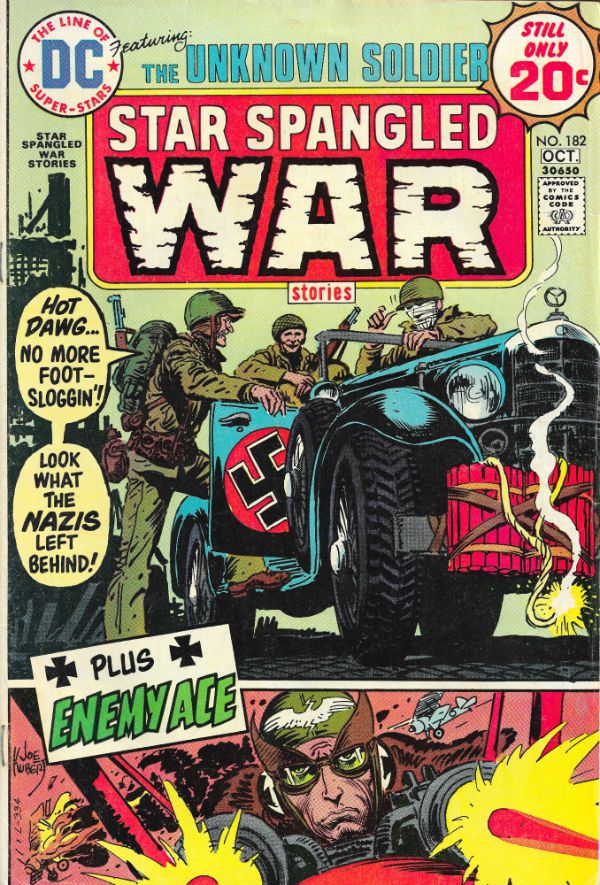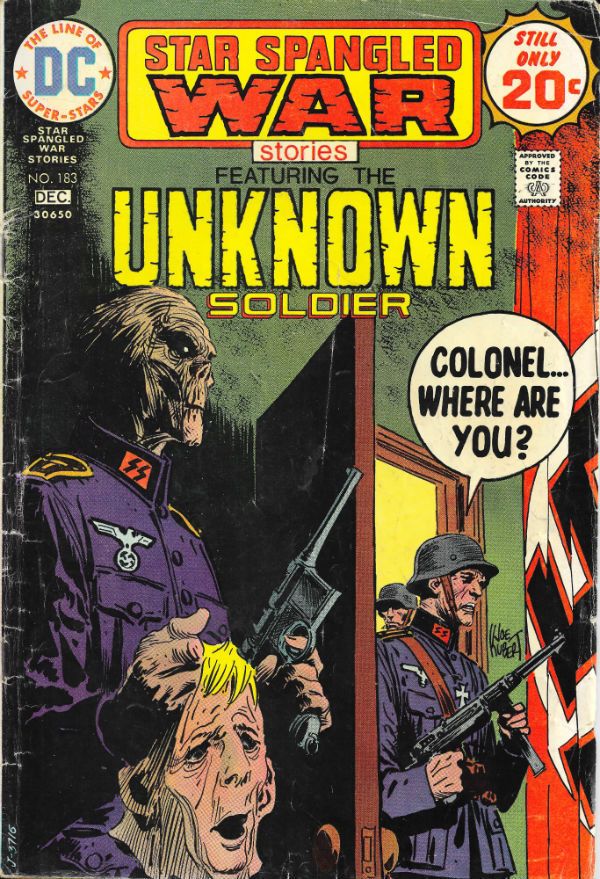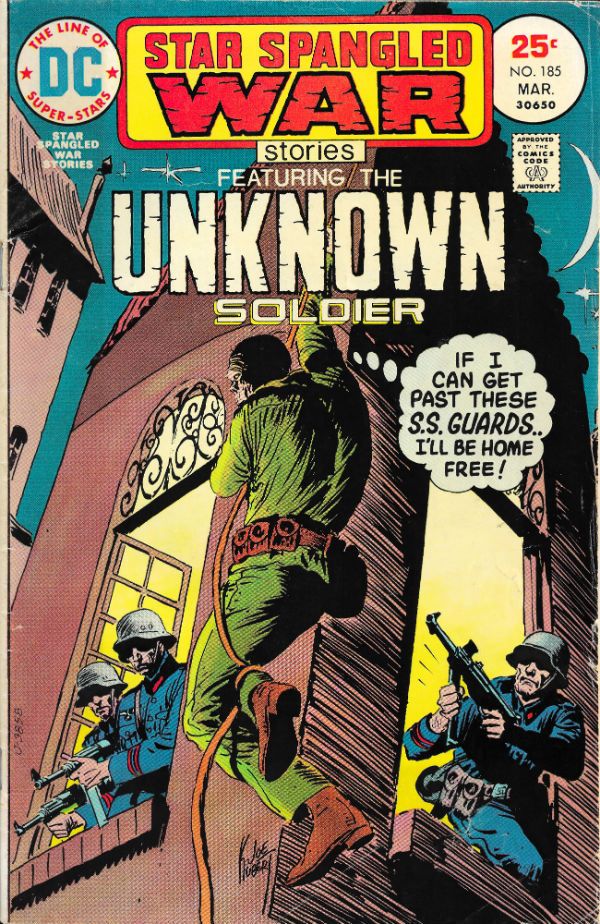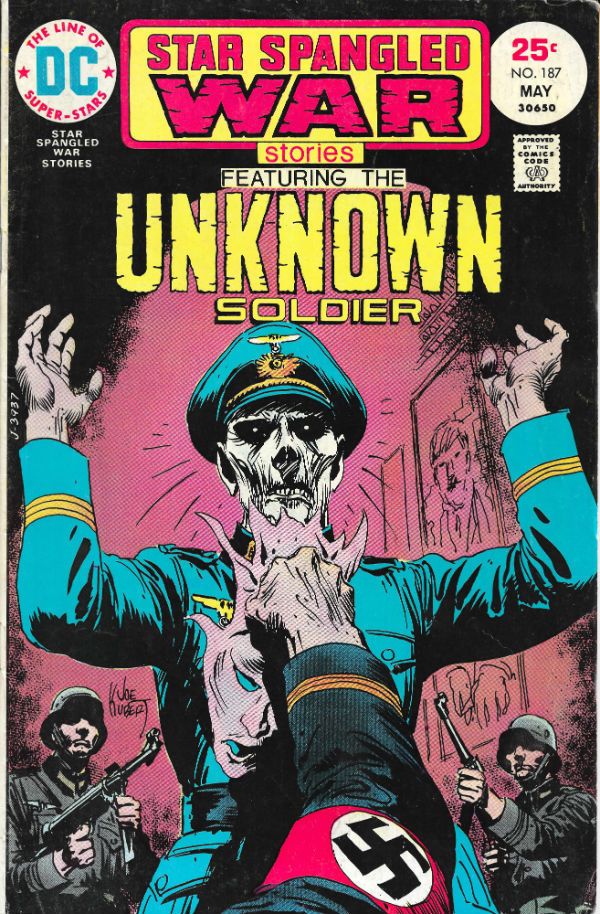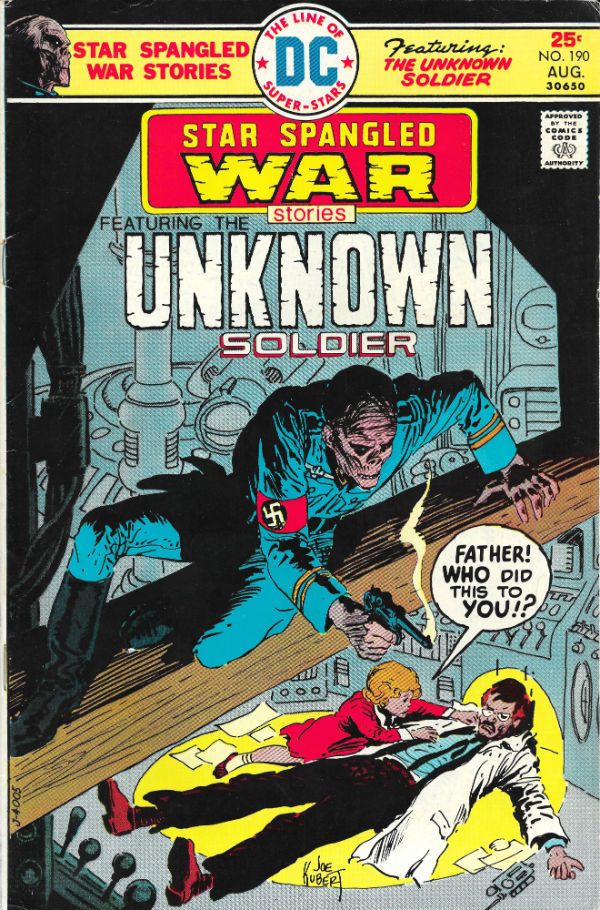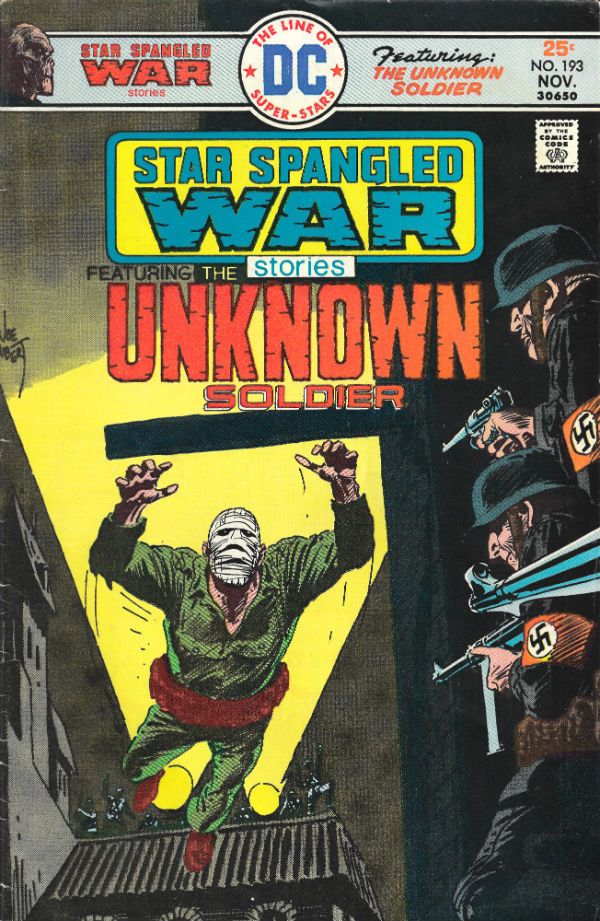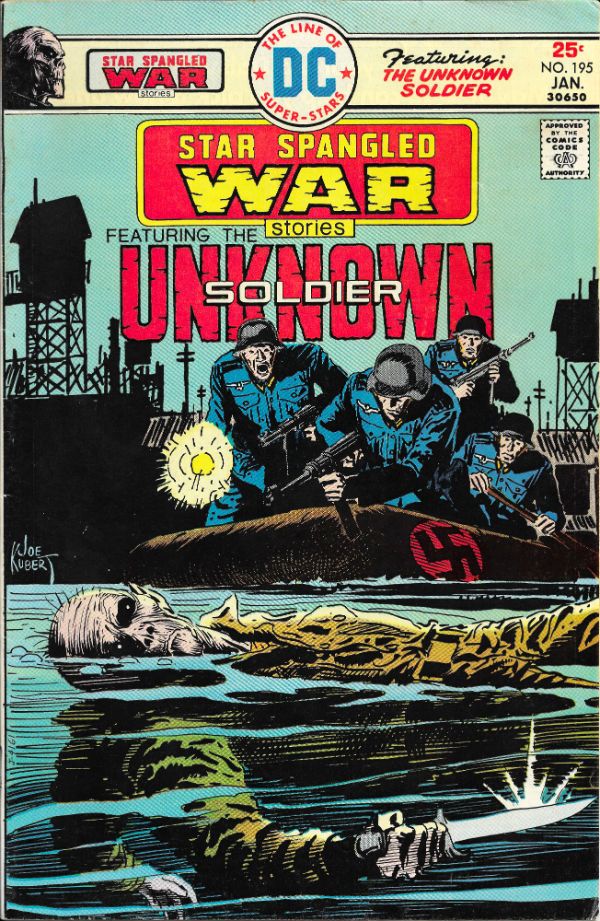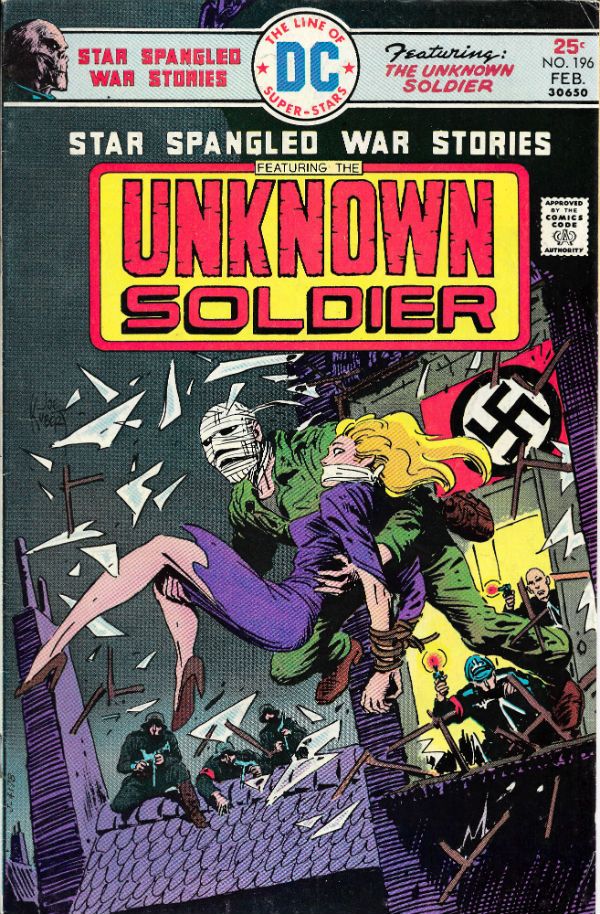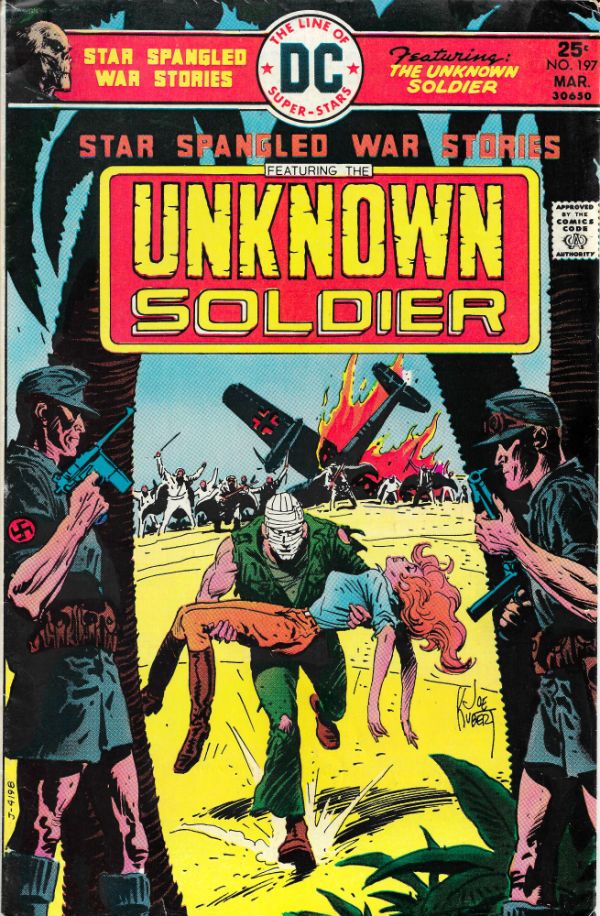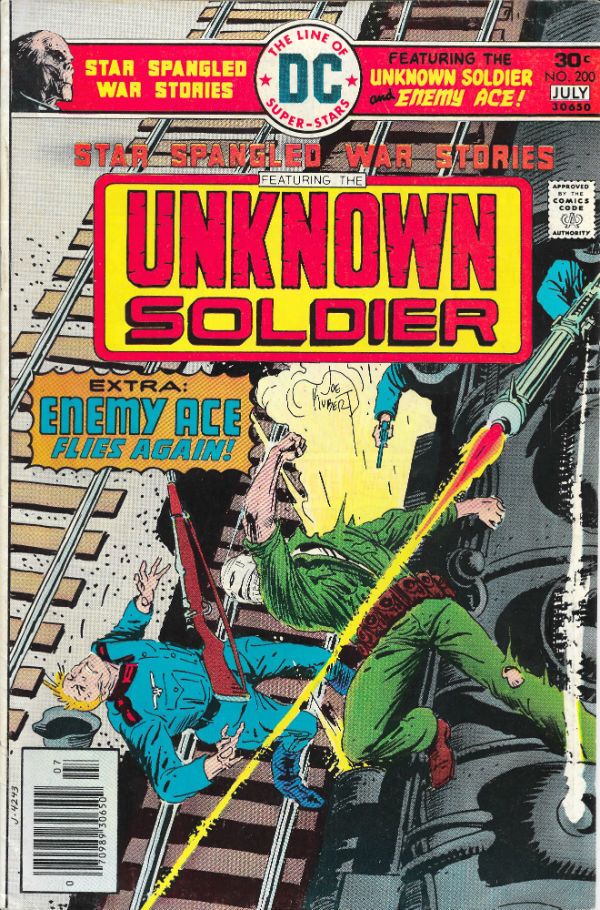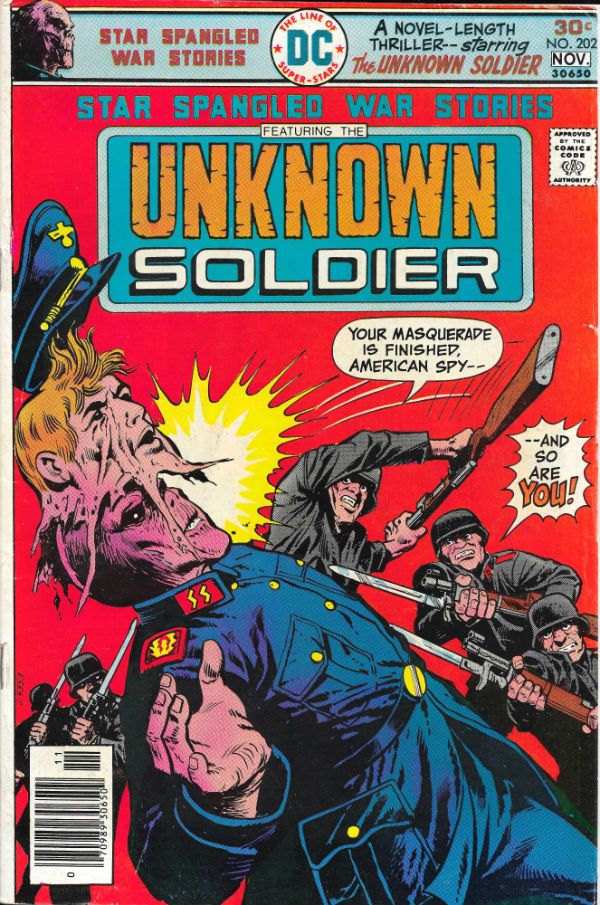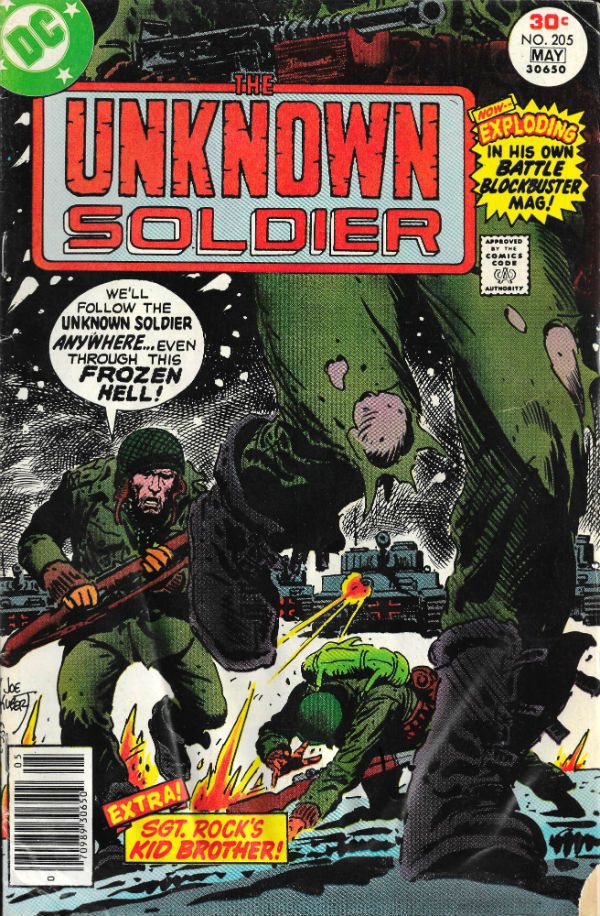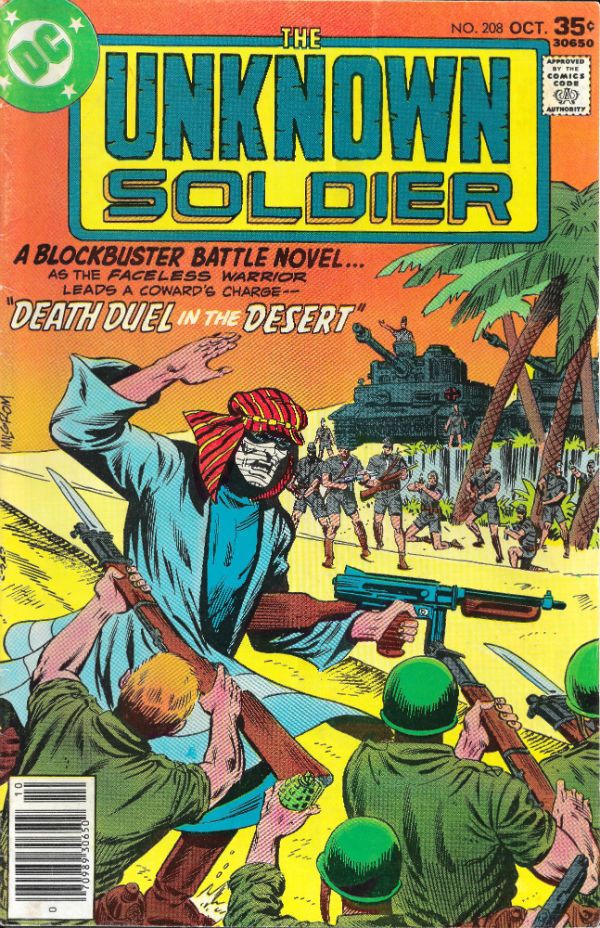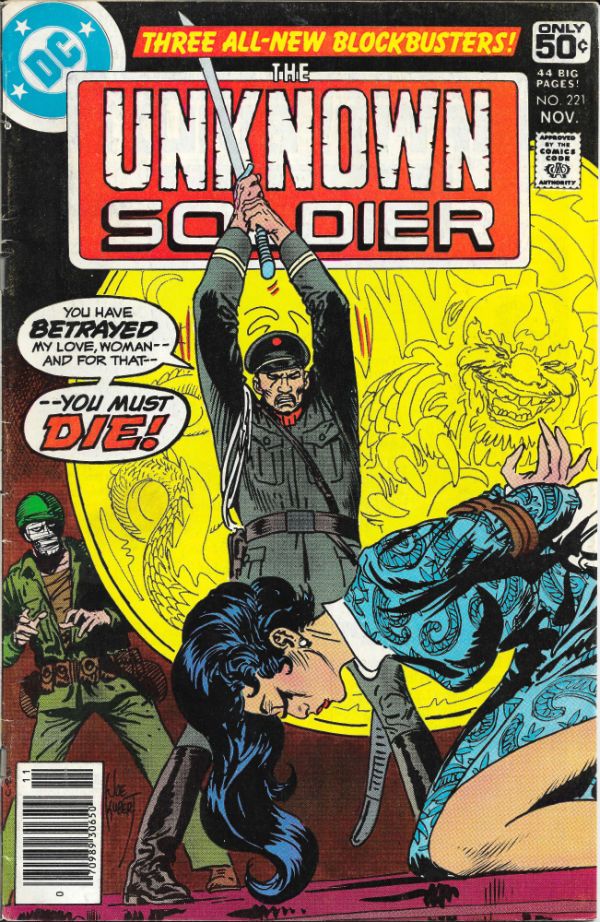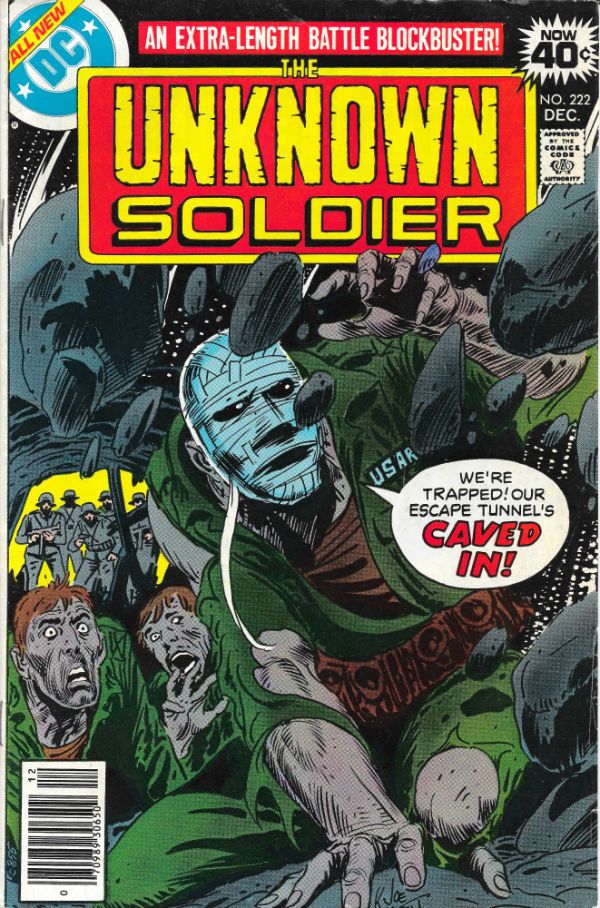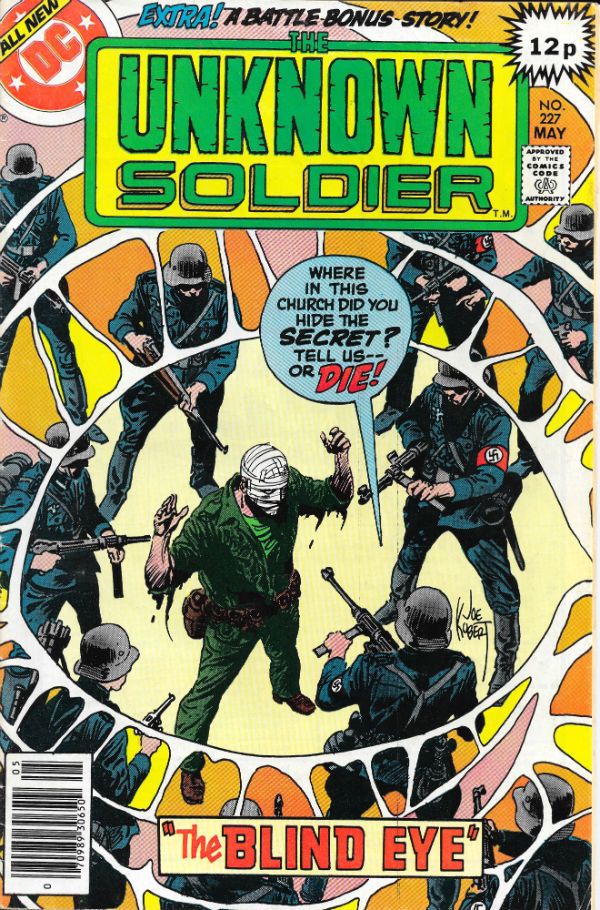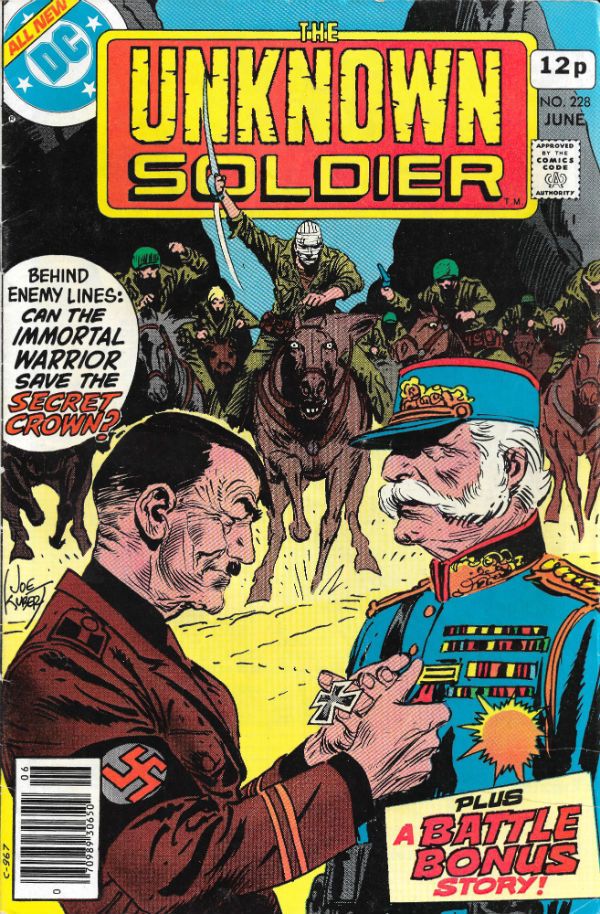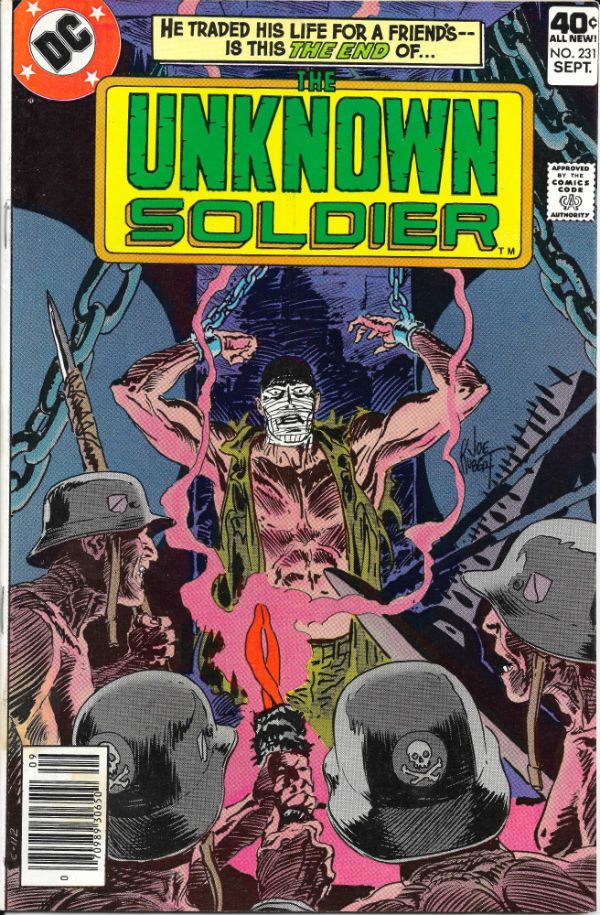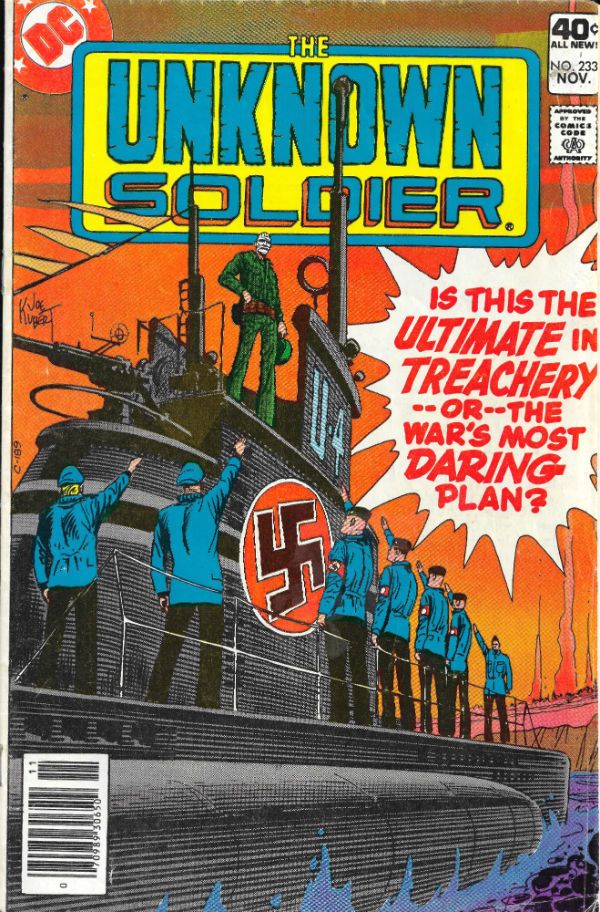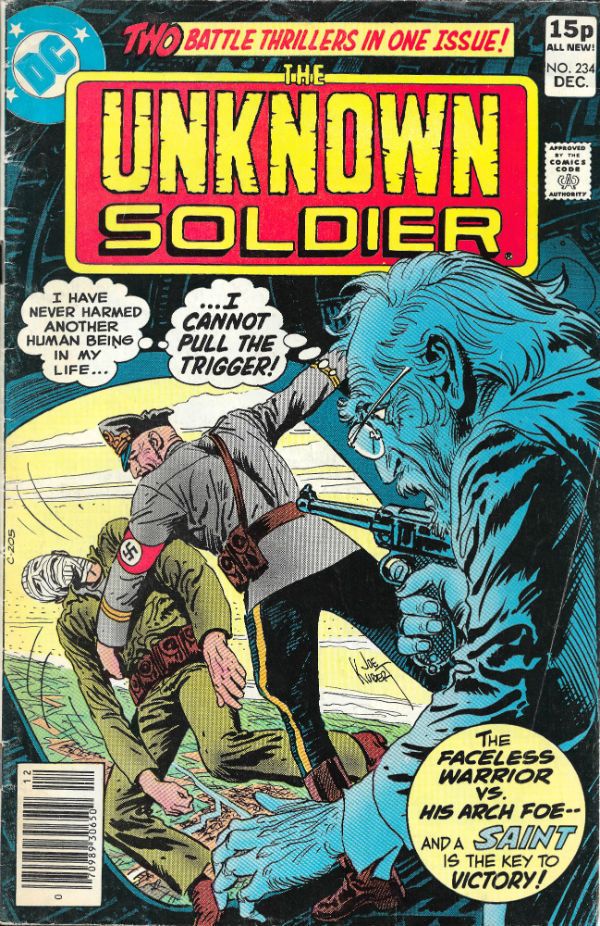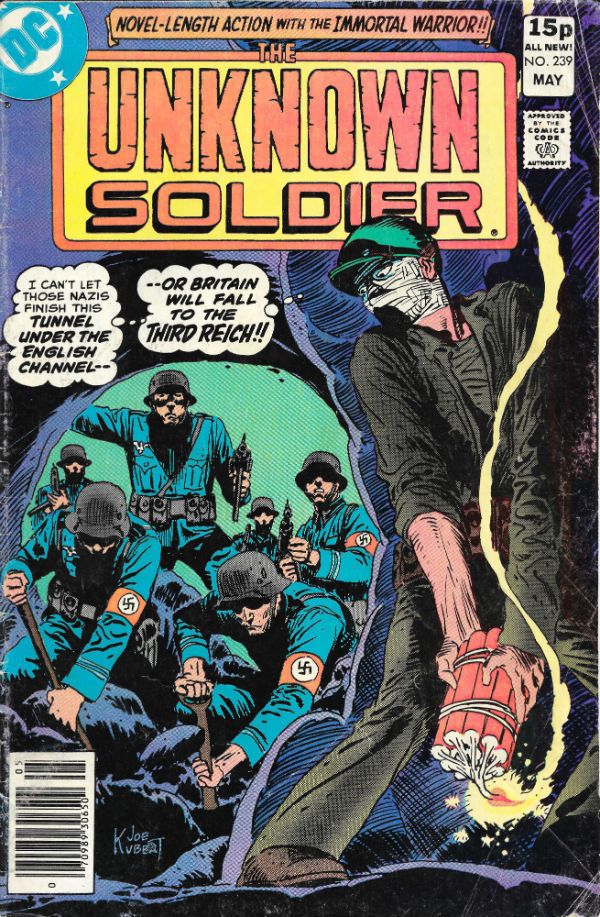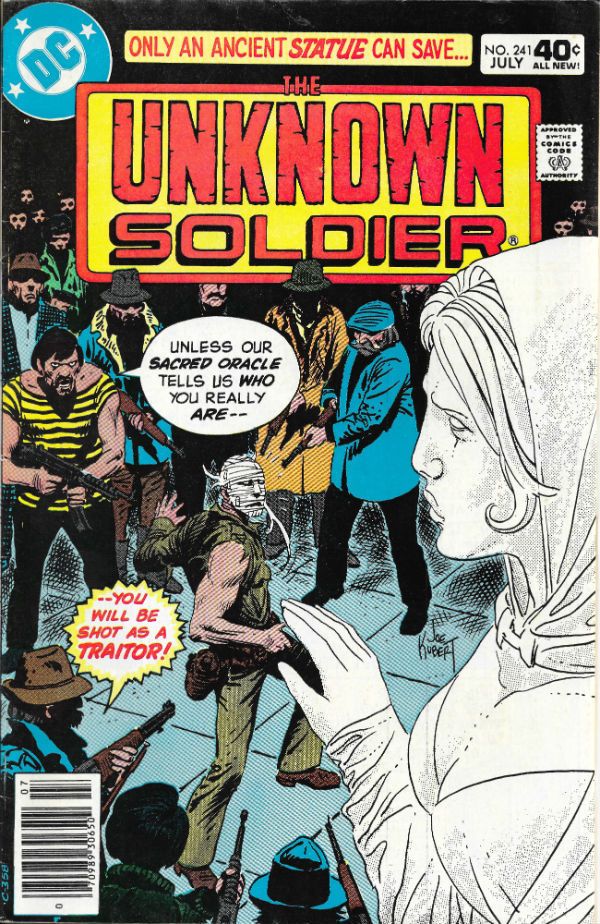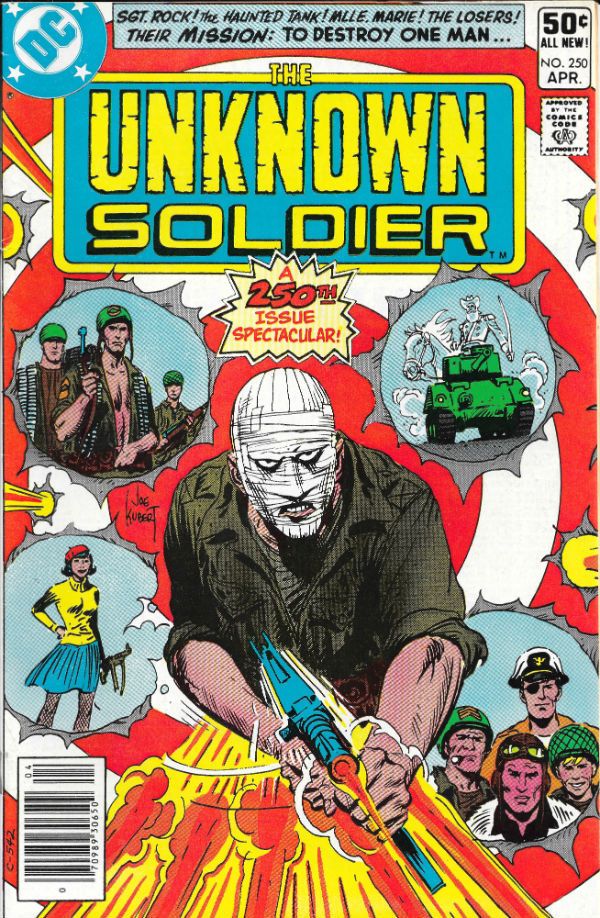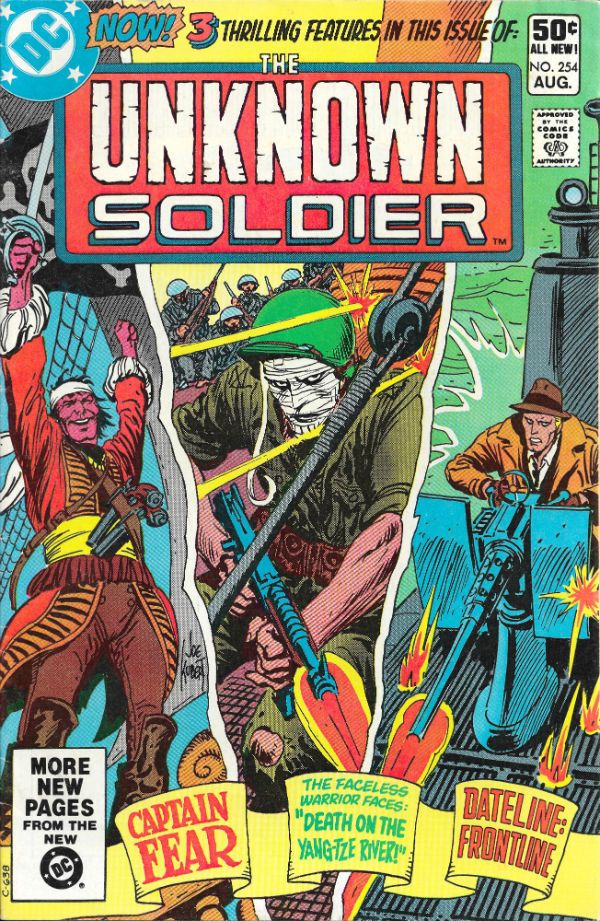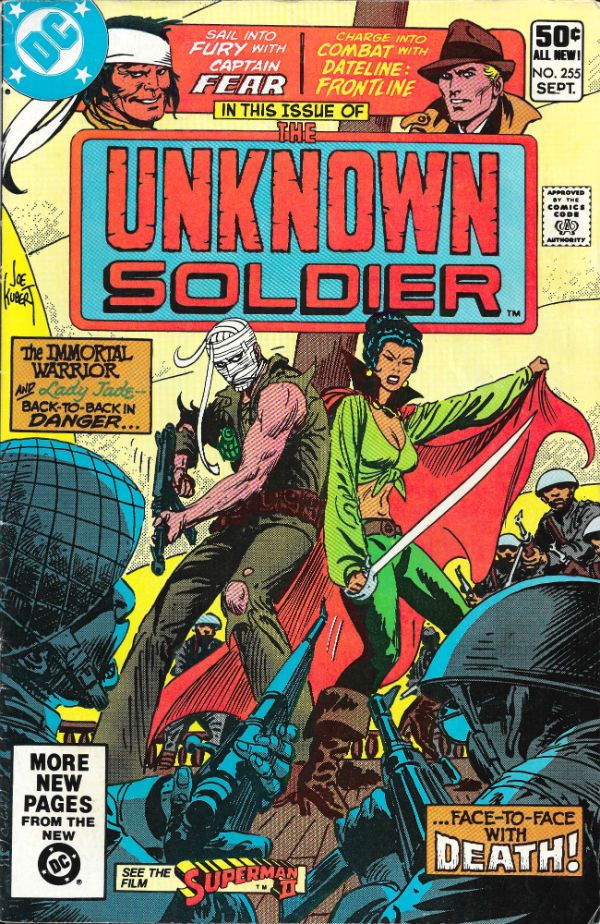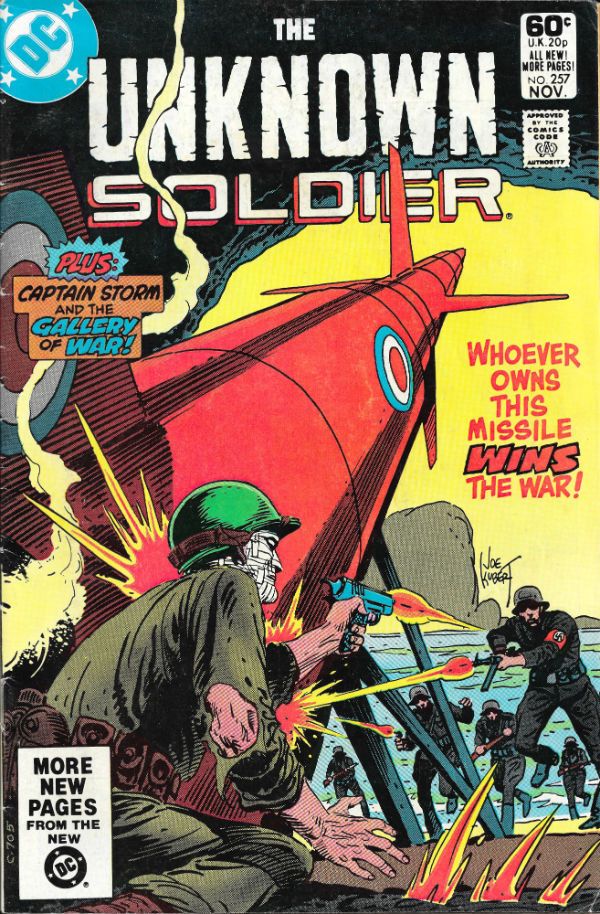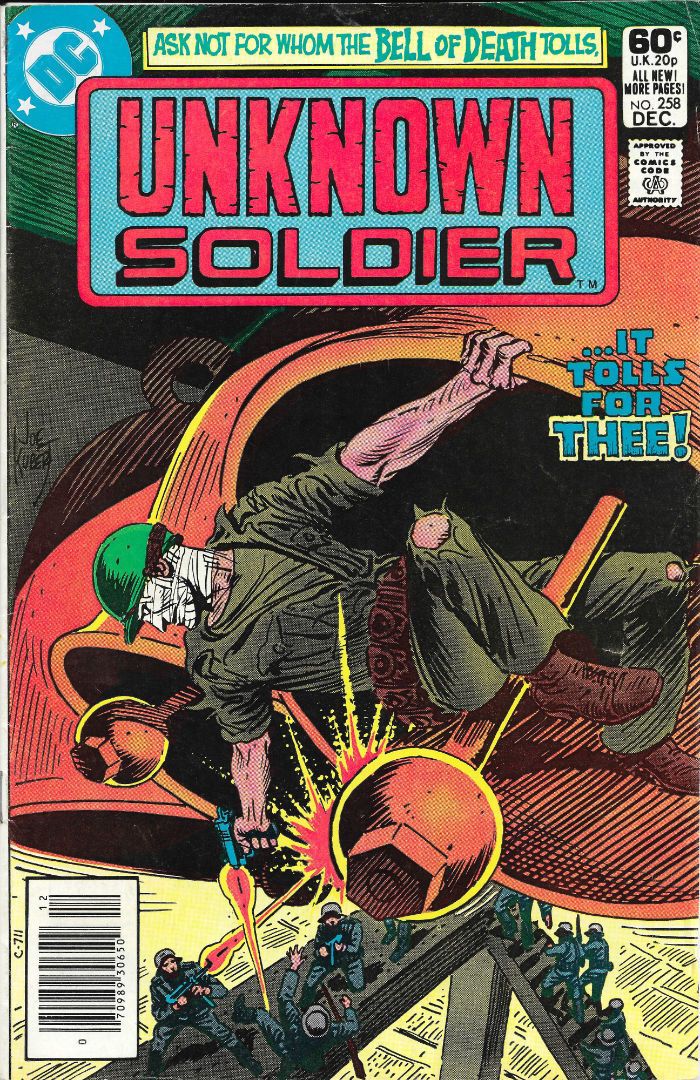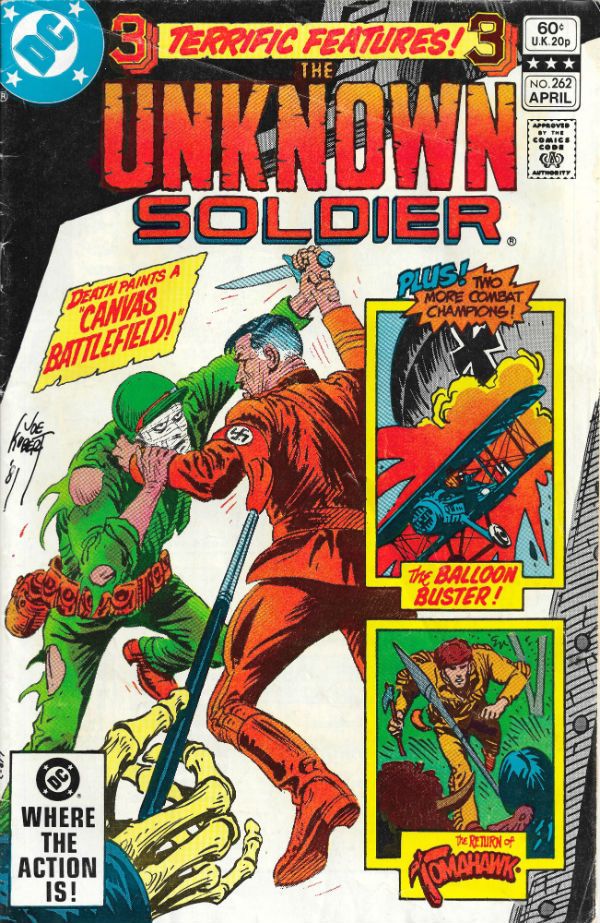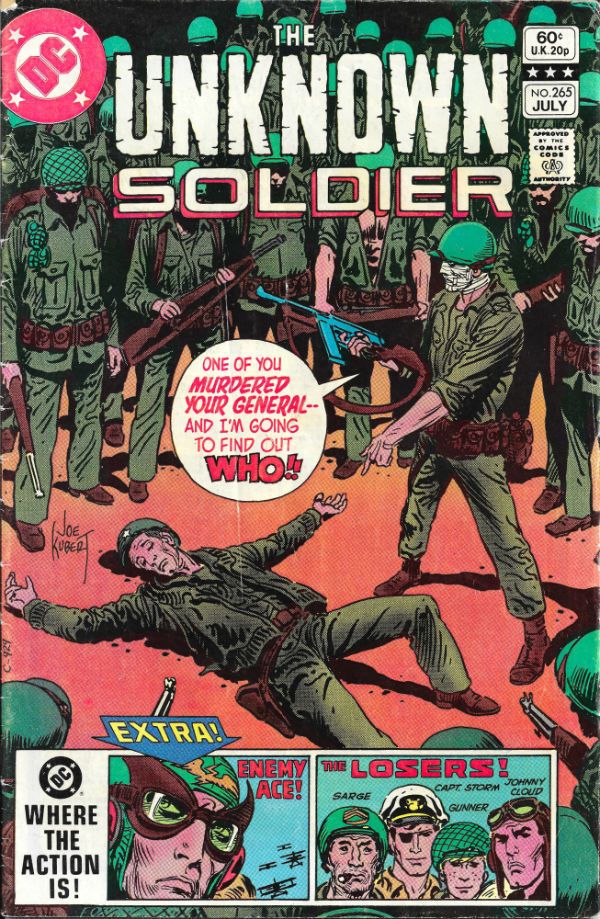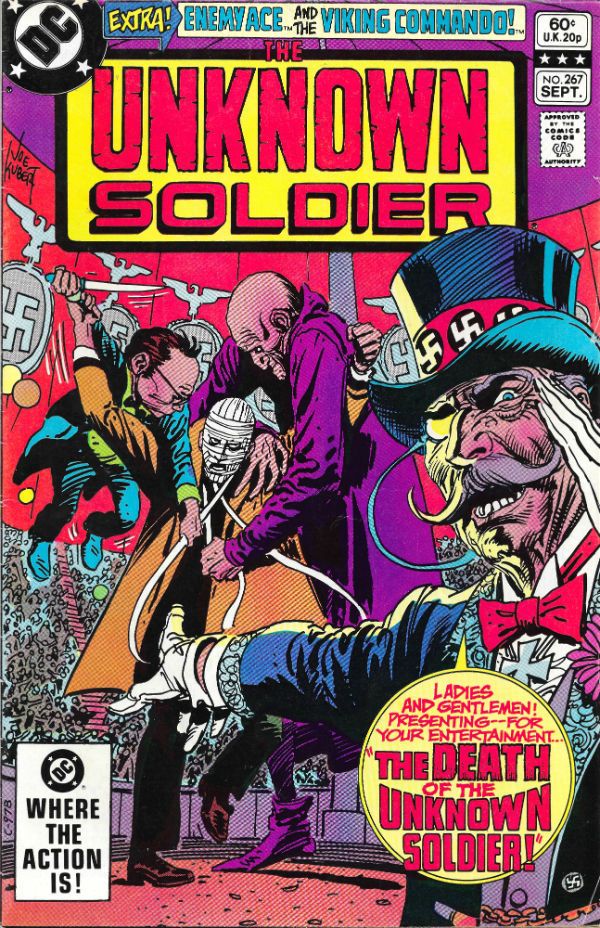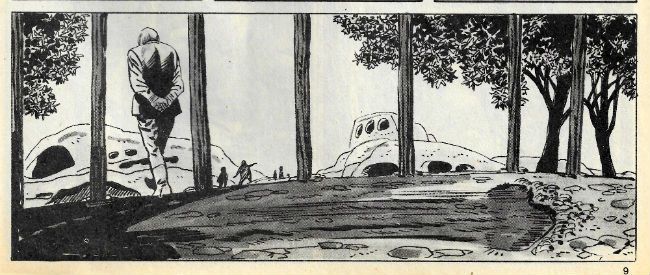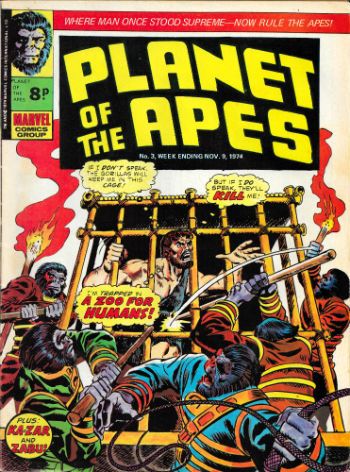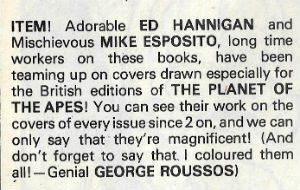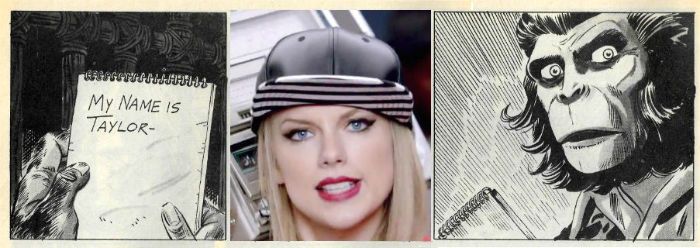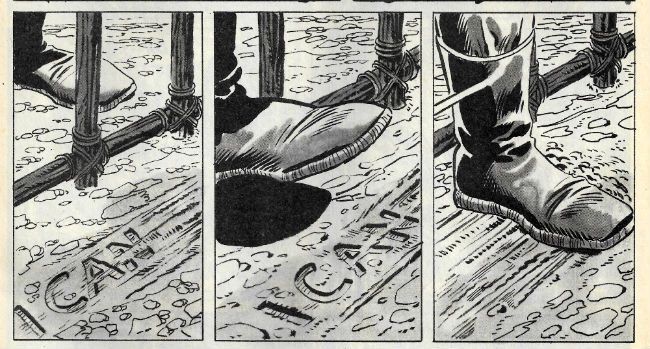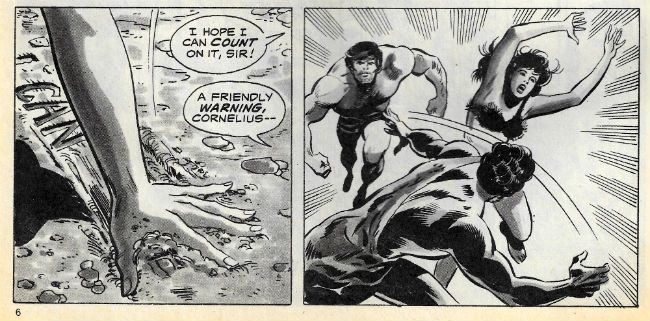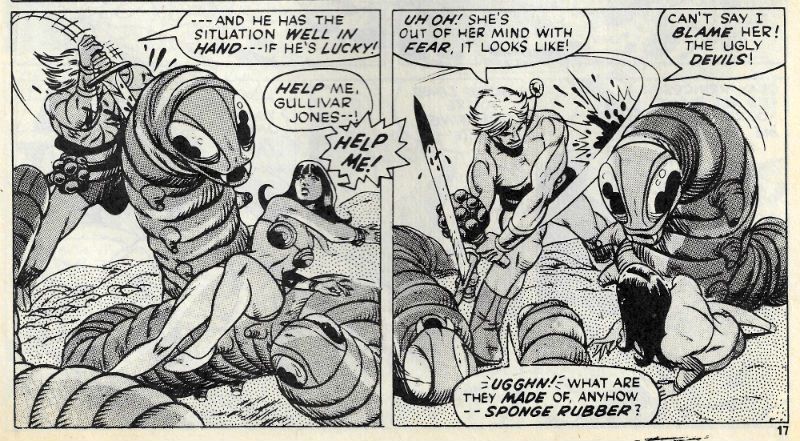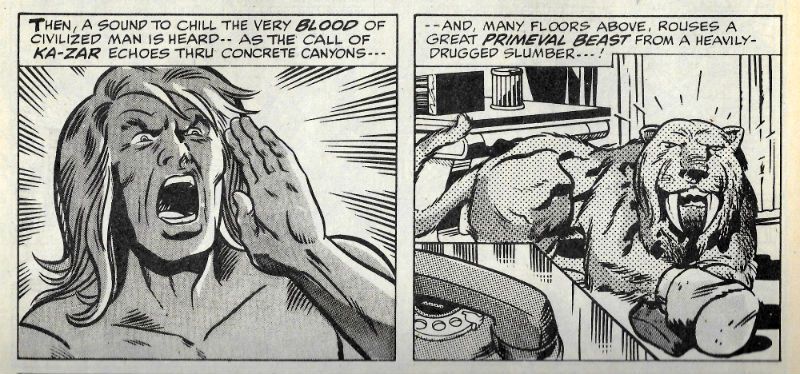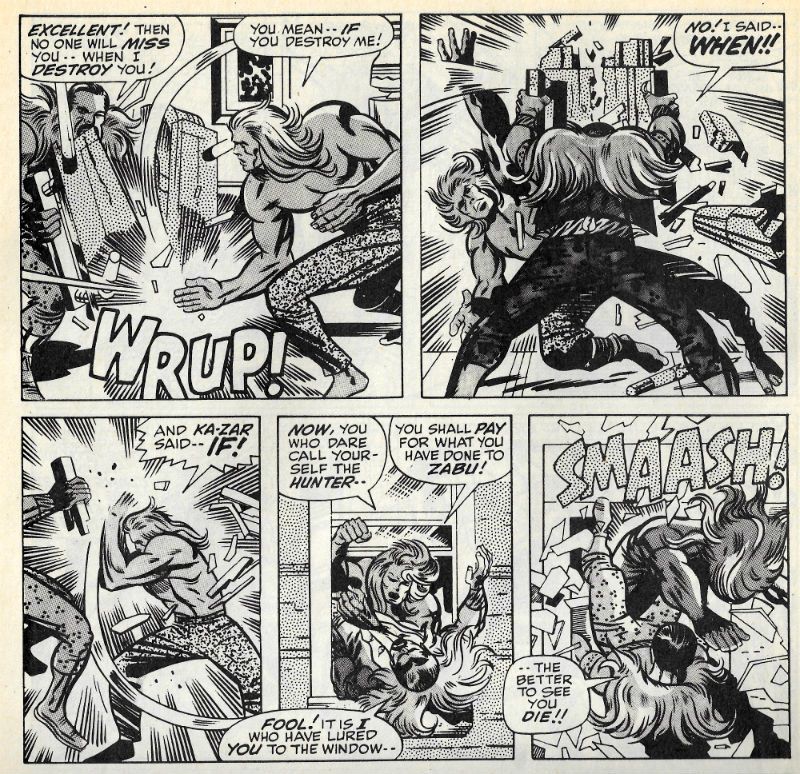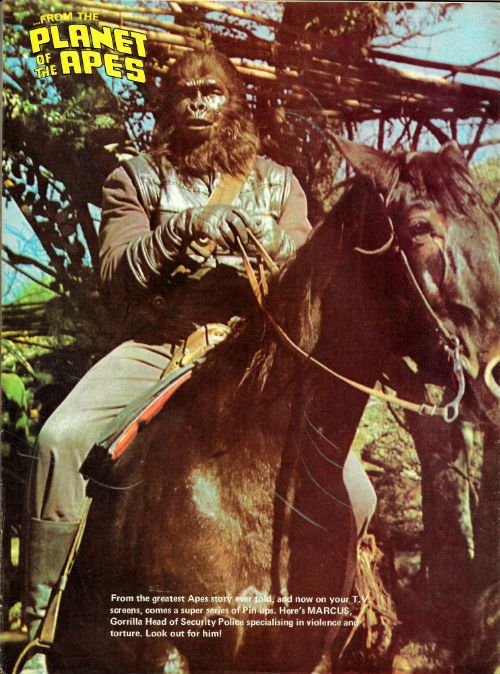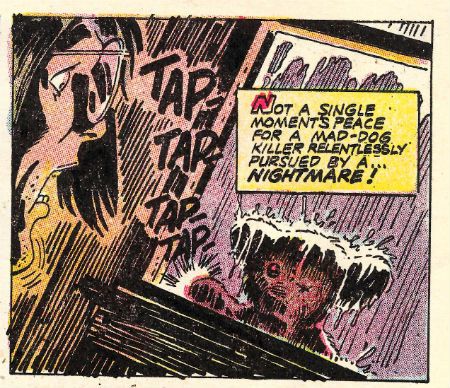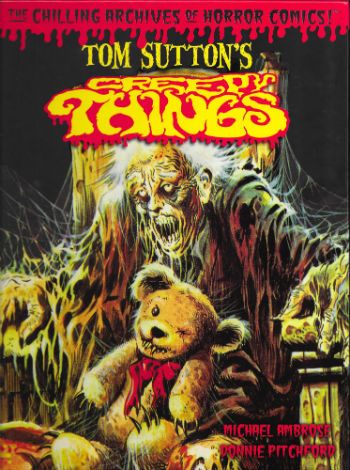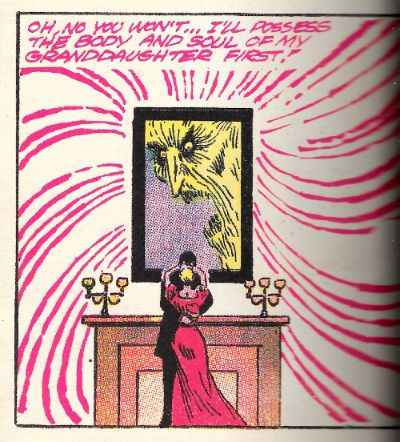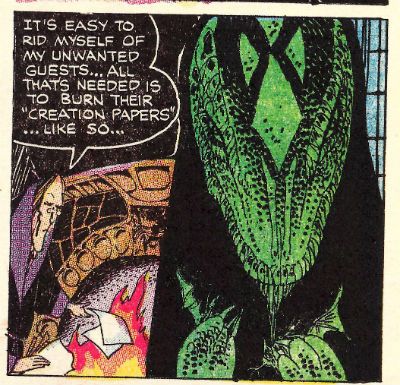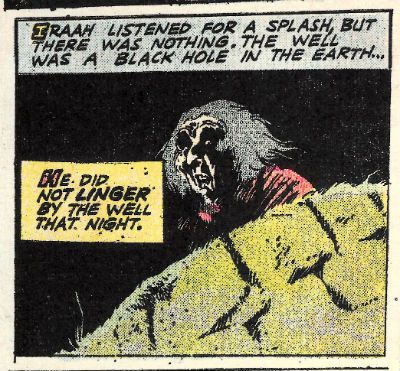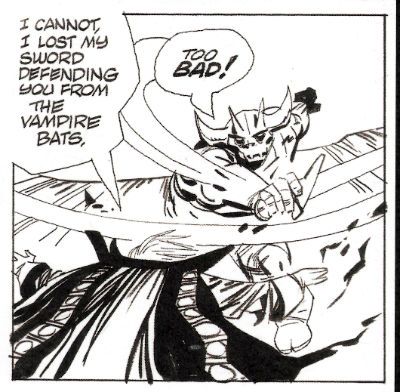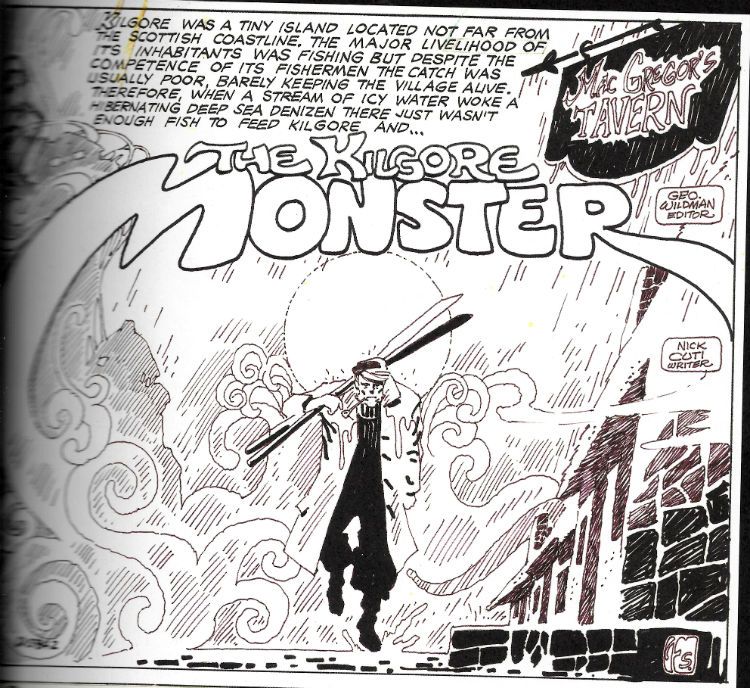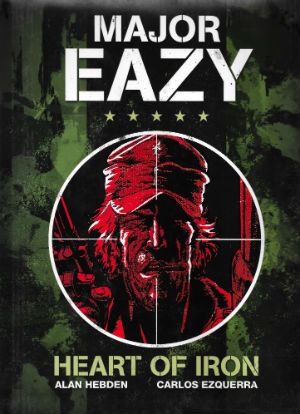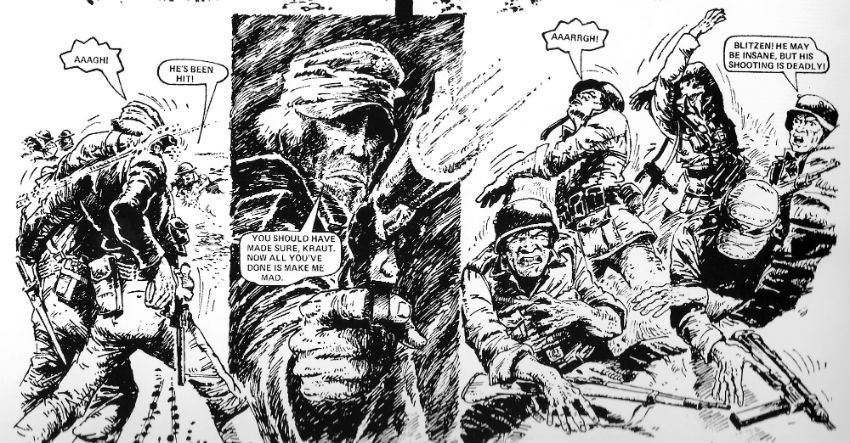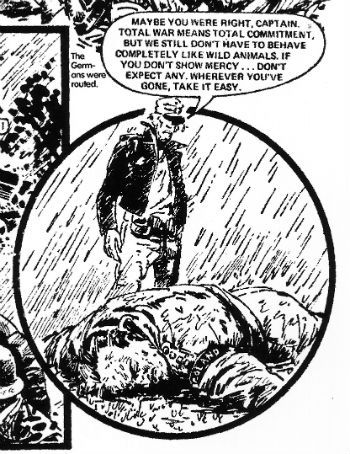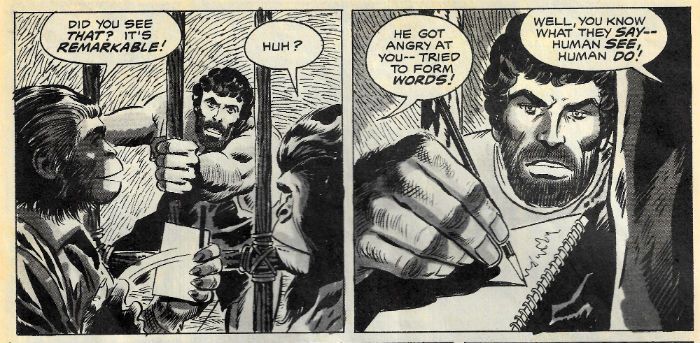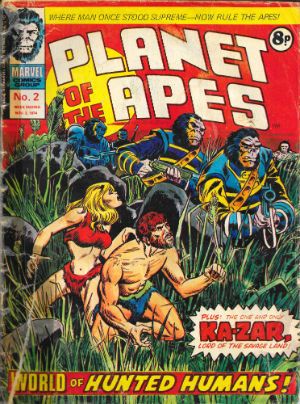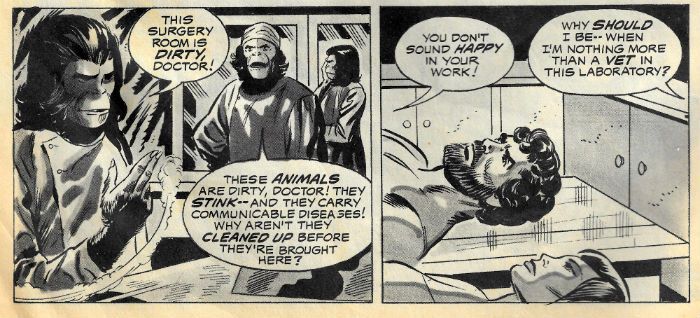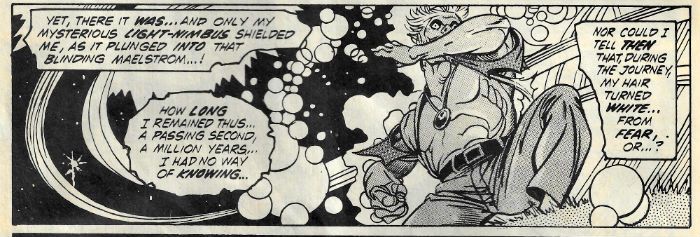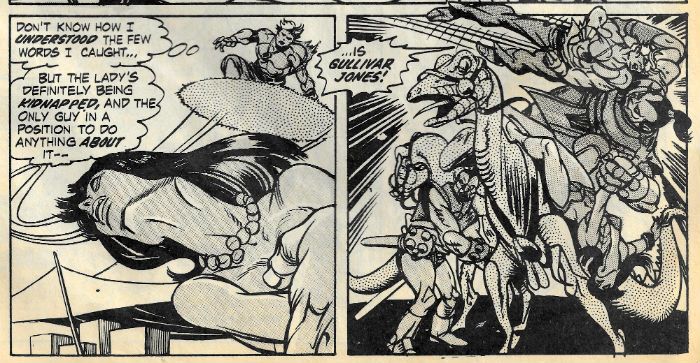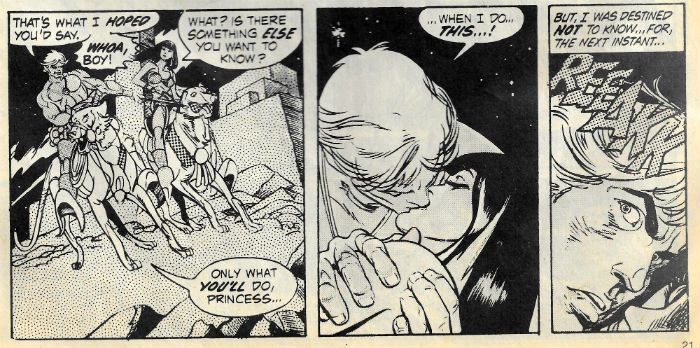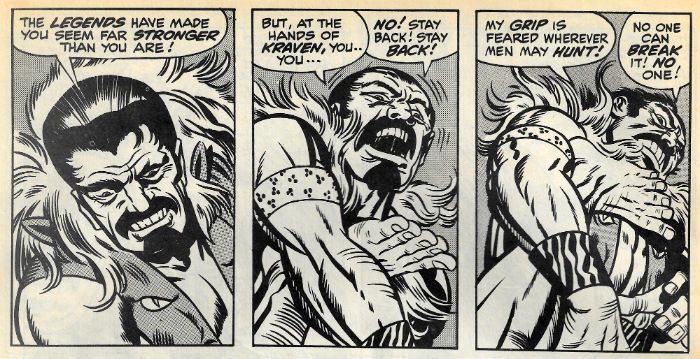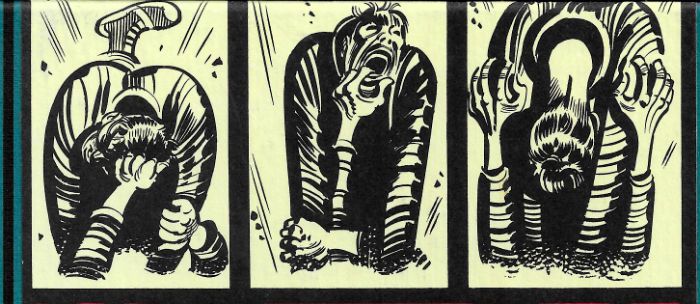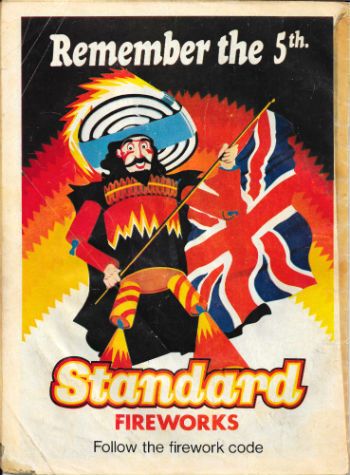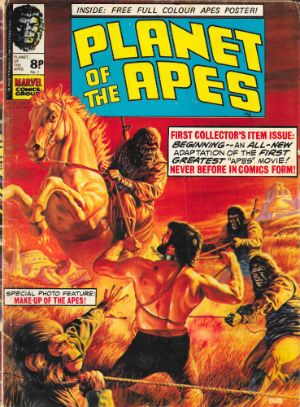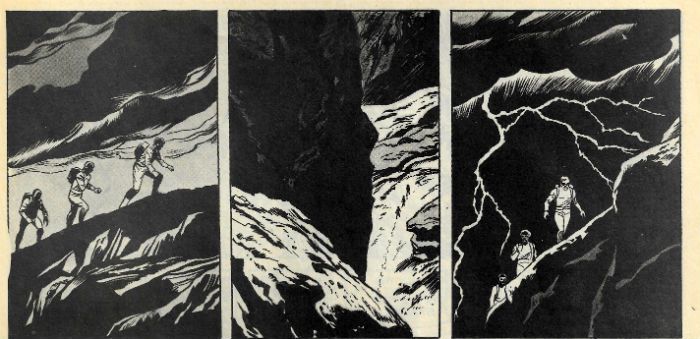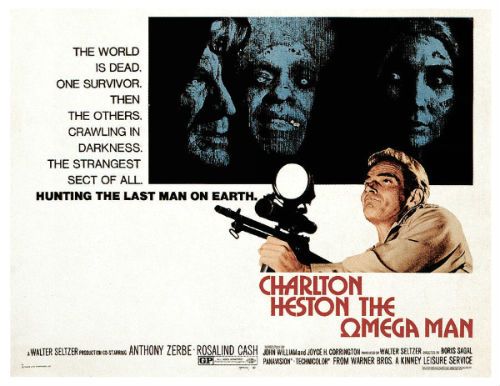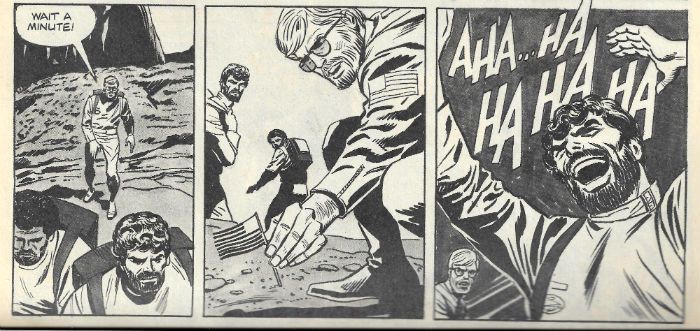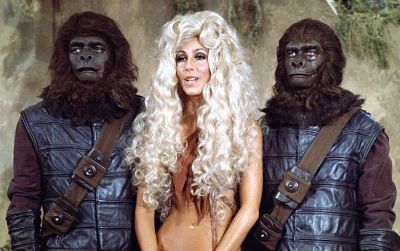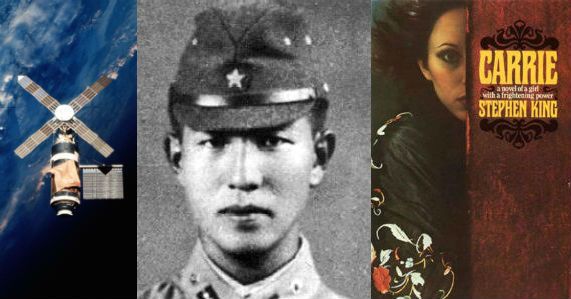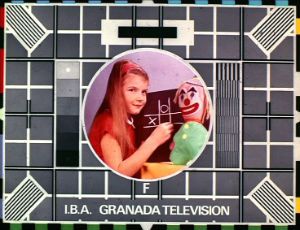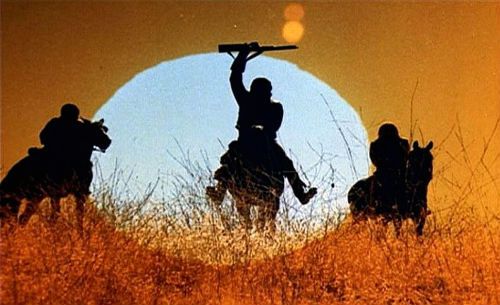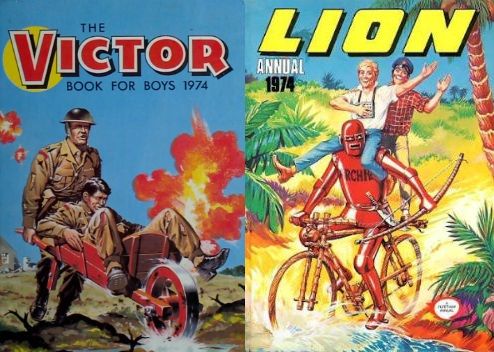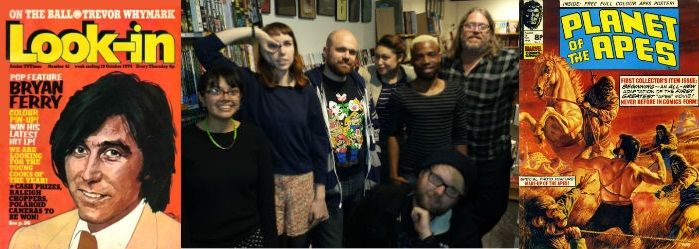"...Gimme A Circus Like This Anyday." COMICS! Sometimes We're In Like Flint!
/There's a little bit of Dredd in this one, a smidgeon mayhap. However there is a whole lot of Carlos Ezquerra and he's really making his computer colouring work in this one. Some real freaky skyscapes going on in the background of these panels. If you're a Carlos Ezquerra fan you'll probably want to pick this one up. Oh, looks like I started the review early, better put the rest under the jump. See ya, wouldn't want to be ya!
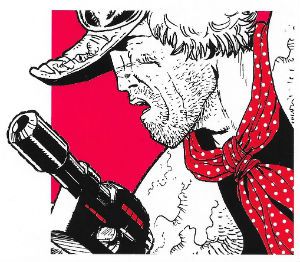 CURSED EARTH KOBURN by Carlos Ezquerra
CURSED EARTH KOBURN by Carlos Ezquerra
Anyway, this…
THE JUDGE DREDD MEGA COLLECTION REVIEW INDEX
JUDGE DREDD: THE MEGA COLLECTION Vol. 67: CURSED EARTH KOBURN Art by Carlos Ezquerra Written by Gordon Rennie Lettered by Ellie DeVille and Annie Parkhouse Originally serialised in JUDGE DREDD MEGAZINE 211-212, 221-223, 228, 239, 241-244, 314-318 & 361-364 © 2003, 2004, 2005, 2006, 2011, 2015 & 2016 Rebellion A/S Hatchette Partworks/Rebellion, £9.99 (2016) JUDGE DREDD created by Carlos Ezquerra & John Wagner
‘Cursed Earth Koburn’ mostly features the exploits of circuit-Judge Koburn, rounded out by a Dredd adventure featuring the vengeful El Maldito. Both Koburn and Maldito hark back down the ages to Battle Picture Weekly and the strips 'Major Eazy' and 'El Mestizo', both of which were created by Carlos Ezquerra and Alan Hebden. I’ve written some slapdash slop about 'Major Eazy' before HERE, but just to recap for those too busy to click on a link: Major Eazy was a laid-back one man attack, as anti-authoritarian as he was effective in taking the fight to the Nazis. And since he was very effective indeed he was very anti-authoritarian indeed, as many a weak chinned officer type found out to his stuttering chagrin. Like most of Battle’s characters he was a direct reaction against the bright eyed and bushy tailed Tommy pushing back the baddies for God, Queen and Country, always with that distinct sense of good sportsmanship which defines the British in their own minds but in no one else’s. In comparison Major Eazy would fuck you up, and fuck you up good and he’d do it quick and nasty too. Because in war you get the job done, you don’t stop and have tea and scones while you do it. Visually Eazy was modelled on David Niven, as any fool knows. No, it was the American actor James Coburn (1928-2002), an actor with an easy-going and thoroughly amiable but subtly malevolent, screen presence., Despite apparently being born with the teeth of a much larger man the ‘70s were good to James Coburn, indeed as they were to British comics, and so the latter plucked the former’s iconic image from Peckinpah’s Cross of Iron and plunked it in a strip for kids, probably about 50 seconds after Hebden and Ezquerra left the movie theatre, since both film and character appeared in 1976. Which is why Eazy wears a German cap, usually pulled down over his narrow, calculating slits for eyes. He also usually has a cheroot drooping from his slim lip because Coburn was a keen smoker both on screen and off.
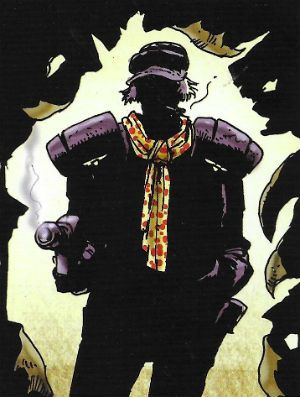 CURSED EARTH KOBURN: KUSS HARD by Ezquerra, Rennie and Parkhouse
CURSED EARTH KOBURN: KUSS HARD by Ezquerra, Rennie and Parkhouse
If you buy the Arrow blu-ray of 'Bring Me The Head of Alfredo Garcia' not only will you have bought the greatest movie about Warren Oates and a head in a bag ever made, but you also get the documentary about Peckinpah, 'Man of Iron', in which Coburn probably appears, smoking. It’s highly likely because if you do buy that blu-ray (which I think you should. NOW!) you also get a disk with 10 hours (1!0! H!O!U!R!S!) of interviews, from which the contents of the doc are culled. I’m far too busy being a supercilious prick to have watched this yet, but I did treat myself to the first 30 mins or so, in which James Coburn appears, smoking. He is also, obviously, awesome. He is so awesome in fact that after a few seconds it’s like you’re sat opposite him while he suavely drawls about the past, smoking. So convivial is his company that at one point I almost tapped him for a smoke, then I remembered it was a recording, he’d been dead for 15 years and I no longer smoke. He’s a funny one because you always think he just showed up and did his stuff, but the interview reveals him as a proper artist with thoughts about his art and a real interest in the art of moviemaking. I mean, I never realised this, but James Coburn was second unit director on 'Convoy'. The last thing I ever envisaged James Coburn doing was sitting on a water tower waiting for instructions via walkie-talkie (like a mobile phone, kids) so he could film footage for one of Sam Peckinpah’s shittiest films. Man, the dude really dug Peckinpah. Oh, he also reveals what the ending to 'Cross of Iron' means, which is something I’ve been puzzling over for about four decades. (SPOILER: It’s hilarious, after all these years it turns out that the ending to 'Cross of Iron' means that Peckinpah set Coburn and Maximilian Schell loose on a set of exploding scrap until something happened. What happened was that Schell’s prop gun fell to bits in his hand and Coburn laughed his ass off in response. That’s it. Brilliant.) Basically James Coburn was awesome, and this was duly recognised by the Academy in 1998 with an Oscar® for his role in 'Affliction'. (Which is a great movie; one that should be on Blu-Ray, people!)
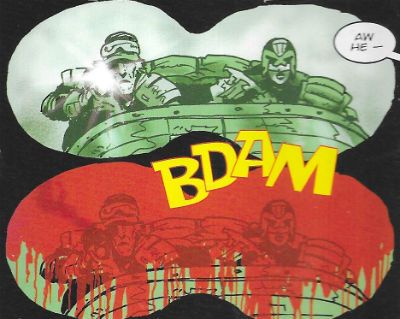 CURSED EARTH KOBURN: KUSS HARD by Ezquerra, Rennie and Parkhouse
CURSED EARTH KOBURN: KUSS HARD by Ezquerra, Rennie and Parkhouse
I don’t really know where I am now, uh, Major Eazy was based visually on James Coburn? Which is why Koburn is called Koburn. According to the interview with Rennie in the back of the book they tried lots of variations along the lines of “Eazy” but went with Koburn, which works. Turns out a fan suggested Ezquerra bring Eazy back, and that was Rennie’s impetus for introducing the basic character to the world of Dredd. The first strip “Sturm Und Dang” sets out the characters’ stall. Dredd is on a hotdog run with some cadets and picks up Koburn along the way. Koburn knows the territory because he’s a cursed Earth circuit-judge, a kind of itinerant sheriff with a given area to patrol. This set-up allows Rennie to play Koburn’s slackness off against Dredd’s rigidity, to effectively define how the character works. It’s a smart move. Key is the fact that both Dredd and Koburn get the job done. It’s no good being a laidback dude if you can’t snipe a guy’s eye out from two klicks at the drop of a hat. Koburn’s all pose but underneath his cool poise you just know he’s like a cat in a room full of rocking chairs (© Traditional). All Dredd can see is infractions of Dress code and lack of respect. But who ends up in a bath chair with a broken leg fighting a Panzer and who sashays his way through storms of bullets while barely breaking a sweat? That’s right. Oh, the panzer? Oh, yeah they are up against Comedy Nazis which isn’t ideal for me, because I’m not that into Comedy Nazis since that logically leads to Comical Concentration Camps and I have a hard time squaring that particular circle. And yet, I guess, yeah, it does acknowledge the roots of the character in a cheeky winkeyty-wink kind of a way, and no one gets hurt. Except the comical Nazis who get comically dead. Ezquerra is obviously having a whale of a time and gives The Cursed Earth his unique sheen of grubbiness while revisiting his war comic past, but with a quirky twist of Dredd. GOOD!
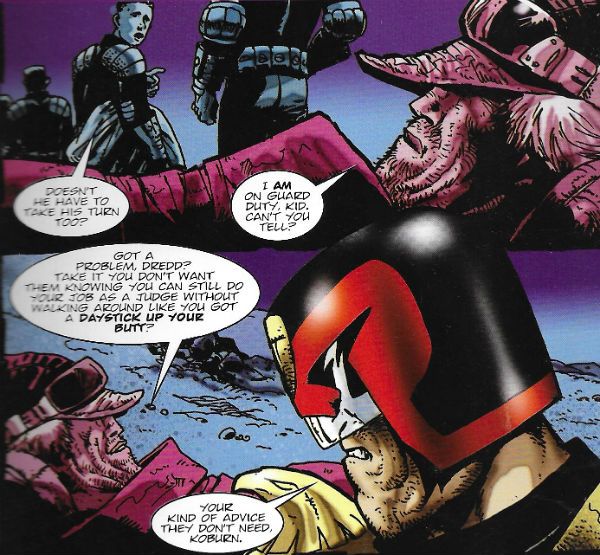 CURSED EARTH KOBURN: STURM UND DANG by Ezquerra, Rennie and Parkhouse
CURSED EARTH KOBURN: STURM UND DANG by Ezquerra, Rennie and Parkhouse
Next up is “Kuss Hard” in which Koburn gets a partner. Typically this is a female Judge, Judge Bonaventura, who is a bit more rules orientated than her shabby new partner, and so she’ll be getting a lesson in how things work in The Cursed Earth, dang straight! We get a bit of low-comedy where she walks in on Koburn being ridden by a Rubenesque whore and she’s all “Oh, my!” She’s a straight arrow, see. Did you get that? The mis-matched (sigh) pair set off on the trail of The Kuss Brothers who are suspected of Organ-Legging and are regulars on Koburn’s patch. To be honest Rennie seems to get distracted early on in this one and it all just sort of happens without any weight to anything. There’s a weird bit where Koburn visits the Brothers’ mom at the unsavoury jail she runs. When she’s less than forthcoming Koburn releases all the inmates and it’s like Rennie forgot Koburn was a Judge or something. He’s not some wandering vagabond laying down the law in his own special way; he’s a Judge! Even better (i.e. worse) their mom’s totally superfluous to proceedings, and it all ends, as it should have done a lot earlier, in a fight in a meat packing factory. It’s all a bit uninspired and flabby, which is unfortunate so early in the character’s run. But it does introduce Bonaventura for Koburn to play off, and old fogies will realise belatedly that she’s just a sex-swapped update of Sgt Daly, Major Eazy’s long-suffering subordinate. (Later I think Eazy acquired an Arab chap who liked cutting Nazi throats, but there are probably some things we should leave to the ‘70s. Despite what UKIP think.) OKAY!
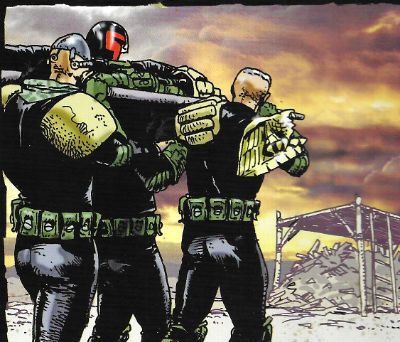 CURSED EARTH KOBURN: BURIAL PARTY by Ezquerra, Rennie and Parkhouse
CURSED EARTH KOBURN: BURIAL PARTY by Ezquerra, Rennie and Parkhouse
“Burial Party” is up next, where Rennie widens the cast of the series to include Koburn’s fellow circuit-Judges, all of whom are either scarred or a bit nuts as befits the harshness of their lives. It’s a nice piece with drunken silliness giving way to sober reflection on occasion, as everyone drinks around the corpse of a fallen Judge, a blatant reminder of how they’ll all end up. Despite being mostly set in one room with a fixed cast all wearing very similar clothes, Ezquerra’s art is so good at making even the mundane visually interesting with his bold feathering and attention to grimy detail, it never feels visually constrained in the least. GOOD! Having established, koburn, Bonaventura, and their fellow circuit-Judges Rennie goes on to show us one of their regular duties in “The Assizes”. Titled after a now defunct British legal term describing courts held periodically around the country, The Assizes shows us Koburn doing precisely that small-scale King Solomon shtick in some Cursed Earth armpit of a town. The complaints of the scabby citizenry are of the "humorous" kind and are probably really funny if you think people fucking animals is hilarious. It’s the kind of stuff that would make Garth Ennis shoot Guinness out of his (broken) nose. Still, Ezquerra has fun, and it’s always nice to see his never entirely-absent skills as a caricaturist slide to the fore. Hit and miss stuff, basically. So little is there to “The Assizes” that a substantial part of it is the prologue to the next story. OKAY! “Malachi” is that next story and it’s where Rennie starts trying to inject some seriousness into his so far largely light-hearted strip.
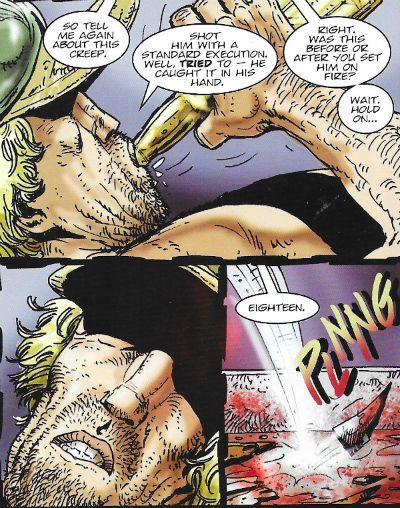 CURSED EARTH KOBURN: MALACHI by Ezquerra, Rennie and Parkhouse
CURSED EARTH KOBURN: MALACHI by Ezquerra, Rennie and Parkhouse
Malachi is some dude who encountered Judge Death and, well, unlived to tell the tale. Now he roams about killing everything he meets while saying spooky things in those spooky word balloons that make spooky words everso much more spooky! I think he’s the physical manifestation of the hate The Cursed Earth dead hold for the living. Or something. It’s not entirely clear, but what is clear is nothing can kill him and he’s headed straight for Koburn and Bonaventura. Which is unfortunate as Koburn and Bonaventura are currently looking in on Spring Seeds, a Juve Offenders facility. This means there’s a lot of kids for Malachi to mangle unless someone can stop him, which is going to be tough as Malachi, as is demonstrated by his run-ins with the circuit-Judges introduced in “Burial Party”, is unstoppable. Just so we care, Rennie gives us a tough Juve who may be salvageable and his pregnant girlfriend to root for. Pregnant? Yes, even in a Juve Offenders facility nature finds a way. Which is not too big a surprise as later when Malachi bursts into the girls dorm they are squealing in negligees like someone got 'Porky’s' and 'Friday The 13th' mixed up. Negligees in a Cursed Earth Juve Offenders facility! Oh, Carlos Ezquerra, you cheeky Spanish rogue! There’s a real feel of impending doom, some characters to care for, a sense of jeopardy and a genuine question about how Koburn can stop such an unstoppable force. In the interview Rennie says the more serious strips don’t work as well, but I’d have to disagree here. GOOD! Blimey, this is a proper slog isn’t it? Last push, everyone!
 CURSED EARTH KOBURN: GOING AFTER BILLY ZANE by Ezquerra, Rennie and DeVille
CURSED EARTH KOBURN: GOING AFTER BILLY ZANE by Ezquerra, Rennie and DeVille
In the final Koburn tale, “Going After Billy Zane” Rennie cranks up the seriousness and sets up a creepy tale in which the past which haunts the present bares its teeth. Koburn teams up with Judge Rico (who is basically another clone of Fargo; a younger Dredd) to track a Citi-Def squad lost on manoeuvres in The Cursed Earth. Unfortunately the Billy Zane Block Citi-Def squad are not lost but are tracking a distress signal, a distress signal sent by a man who died twelve years ago. Obviously they don’t know that, but we do. The squad are led by a female leader who lost her kids twelve years ago, the man who died twelve years ago was the Judge who broke Koburn in and, uh, about twelve years ago Rico had doubts about his lineage. (The original Rico being Dredd’s bent Judge brother. Judge Dredd's favourite joke: "My bent Judge brother has no nose! How does he smell?...") Which kind of reflects the strip in essence. That is, it struggles to link everything so that there’s a true sense of things coming full circle, a sense of inevitability but it..just…can’t…quite…make it happen. Which is a shame, because there’s some strong stuff on these pages. Strong enough certainly to entertain but not any stronger than that, alas. Ezquerra’s pours the creepiness on this one with a great inky ladle, making rocks and crevasses look far more menacing than you want them to . There’s a surface sense of unease and an undercurrent of violence running through all Ezquerra’s art here. The big noses and whiskery comedy chins stay at home and he breaks out the shadows and silhouettes to unsettling effect. The strip peters out on a cliff hanger which is as yet unresolved, but even that seems appropriate to the sense of amorphous menace it seeks to convey. Koburn’s last outing is GOOD!
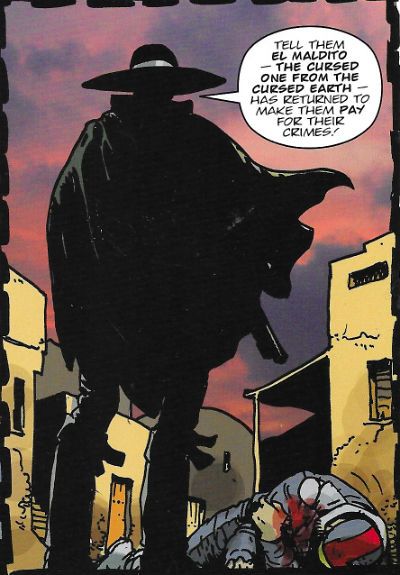 JUDGE DREDD: EL MALDITO by Ezquerra, Rennie and Parkhouse
JUDGE DREDD: EL MALDITO by Ezquerra, Rennie and Parkhouse
Yes, that was Koburn’s last hurrah but there’s still one story to go: “El Maldito”. This strip is interesting for a couple of reasons, the most obvious of which I’ll save ‘til last. In this one a spooky figure is wading in on the side of the workers at a food processing facility in The Cursed Earth. What’s interesting here is that it’s not often that you see something so “up the workers!” in comics these days, which I find both odd and troubling. Mostly because this silence seems to reflect the increasing belief that somehow unions are bad things. Over here the papers (who are all to a greater or lesser extent in hock to tax dodging billionaires with their own freedom stifling agendas) endlessly roar at any and every episode of industrial action. And the vox pop is less than ideal, “how dare they inconvenience me!”, “I wish I could have the day off work!” and all that cretinous rot. Hey, poncho, I’ve been on strike. I’ve been on strike more than once, and I’ll let all you vox pop nincompoops out there into a little secret: you don’t get paid for strike days. And if I could afford not to get paid, pal, I wouldn't go to work. Those people striking? They are making a personal sacrifice to protest some form of injustice or proposed measure which will erode the safety of all involved. So, think on next time. Anyway, here we have a bunch of “peons” striking and acting up and generally getting in the way of business. Obviously that can’t stand, so the company send in the men with the batons. Apparently these workers want conditions improving or fair pay or somesuch socialist snowflake nonsense. Probably want treating like human beings or some other pie in the sky shit. So the plan is as ever, a few heads get cracked, names are named and the ringleaders get rounded up and hey ho we can all get back to work. Or you can. I’ll just spend all this lovely money while you put your back into it.
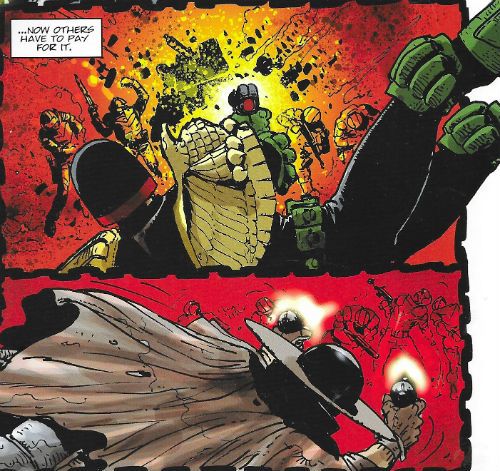 JUDGE DREDD: EL MALDITO by Ezquerra, Rennie and Parkhouse
JUDGE DREDD: EL MALDITO by Ezquerra, Rennie and Parkhouse
Unfortunately a lot of companies mistake salaried employment for indentured servitude, and even more unfortunately a lot of governments are happy to let them. Oh, don’t worry, my right wing chums, I’m fighting a losing battle. It’s okay, don’t ruffle your share portfolios over it; you’re winning while I’m whining. Today Theresa May sent her letter triggering Article 50 which will see us begin to leave the EU. Yes, we’ll be leaving all that “red tape”, all those pesky regulations that gave us holidays, safe working conditions and kept our food safe are all up for grabs now. And the Tories have the whip hand. So, yeah, good times ahead for people who want more human faeces in their drinking water and horse meat in their Bolognese. Regulation! Pah! Who needs it! Personally I think we should just go the whole hog and bring back hanging, National Service and 'The Black and White Minstrel Show'. Say, did you see that shit about “Empire 2.0”? And that’s the grown-ups in charge that is. I despair, I honestly and utterly despair. I also lose my track but always find my way back. The strikers are helped by this spooky figure who comes in times of need, this El Maldito. The company has Judge Dredd. Sparks fly and symapthies may not lie entirely where you expect. It’s a decent strip with good points to make about industrial relations, but Judge Dredd survives a massive explosion, uh, because, and the subplot about the guy and his kid doesn’t gel but, y’know, fun is had and salient points are made, so GOOD! Oh, the other interesting thing (besides how irritated you got when I went on about strike action) is that El Maldito is a tip of the hat to 'El Mestizo', which like 'Major Eazy' ran in Battle Picture Weekly. Unlike Eazy this was set in the American Civil War and involved a black slave turned mercenary having weekly and very violent adventures. Yeah, a black slave , and if you started any of that moaning about pandering to Social Justice Warrior Snowflakes shit he'd have stuck a stick of dynamite up your arse and kicked you off a cliff. And quite right too. Unfortunately while I do remember the strip, all I can remember is he looked like Jimi Hendrix as dressed by Sergio Leone and was balls cool. Although it was the ‘70s so we probably would have said he was “jolly spiffing” and then laughed at some homosexuals on TV. Since there were only 16 episodes someone should collect the 'El Mestizo' strips so I can buy them, you know, with money I earned while not striking. HAH!
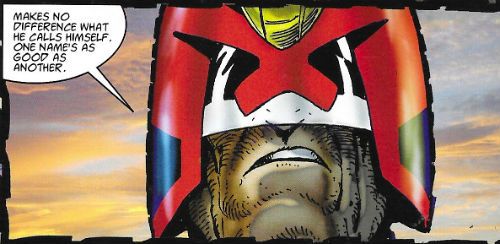 CURSED EARTH KOBURN: GOING AFTER BILLY ZANE by Ezquerra, Rennie and DeVille
CURSED EARTH KOBURN: GOING AFTER BILLY ZANE by Ezquerra, Rennie and DeVille
NEXT TIME: If I don’t end up in jail for sedition, it’ll be more Judge Dredd and thus more COMICS!!!


